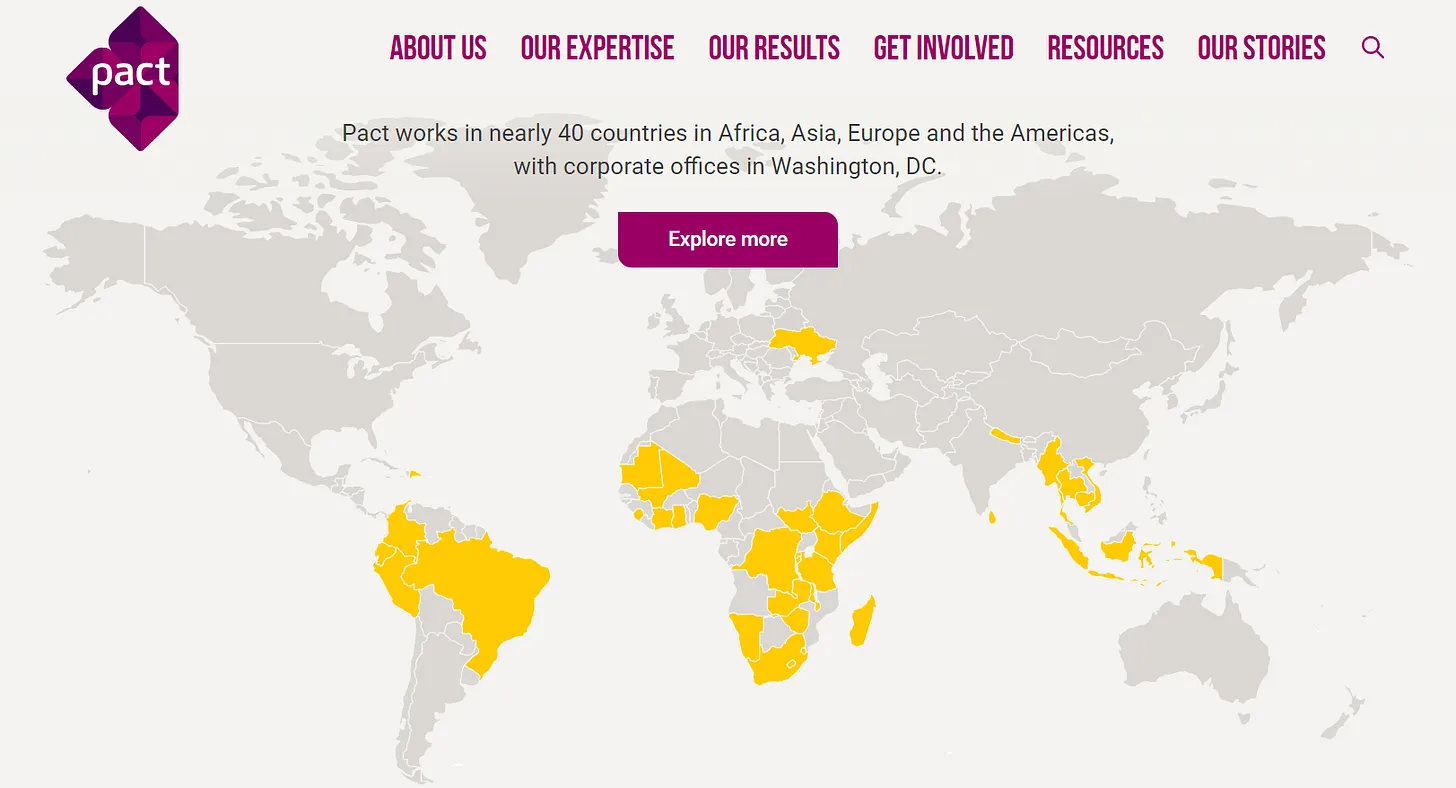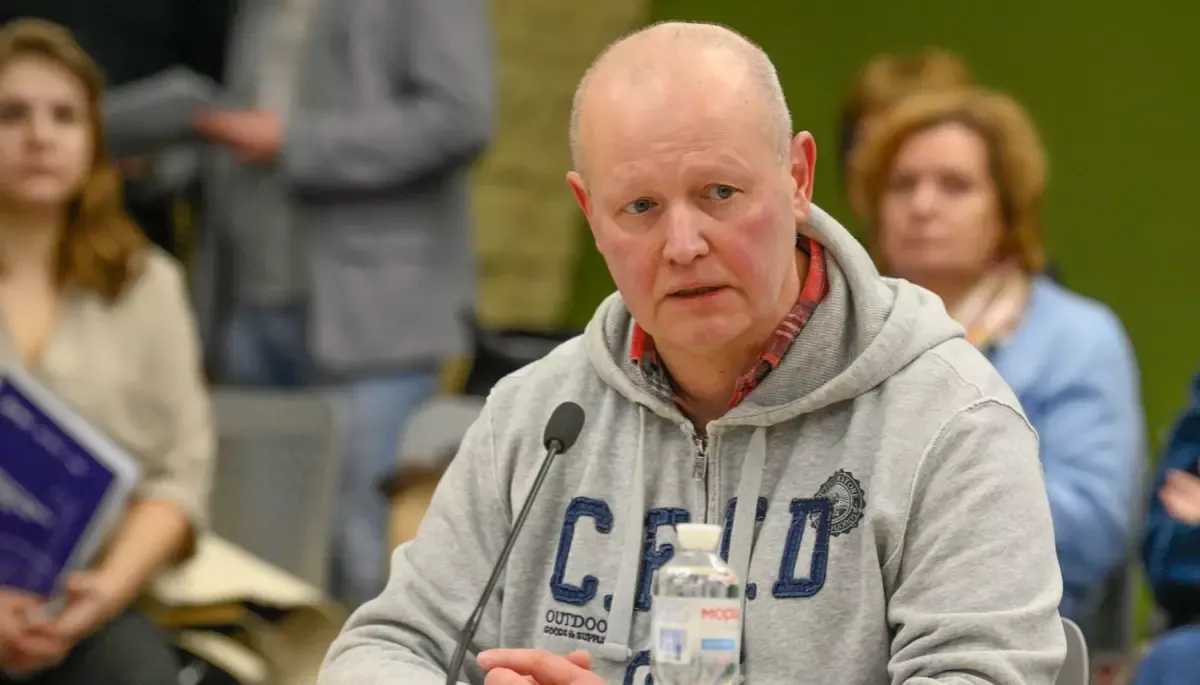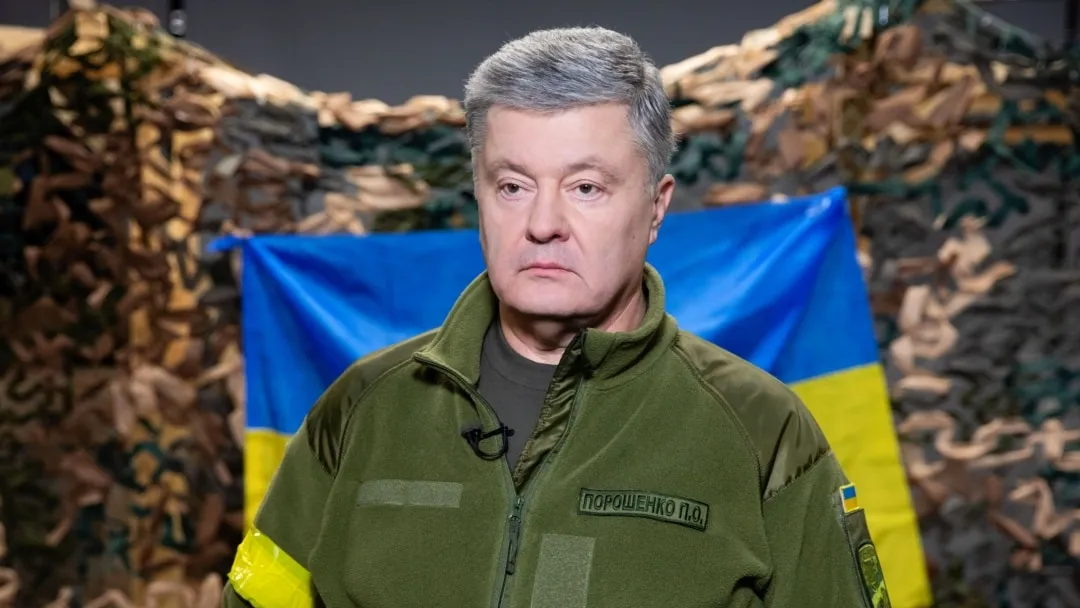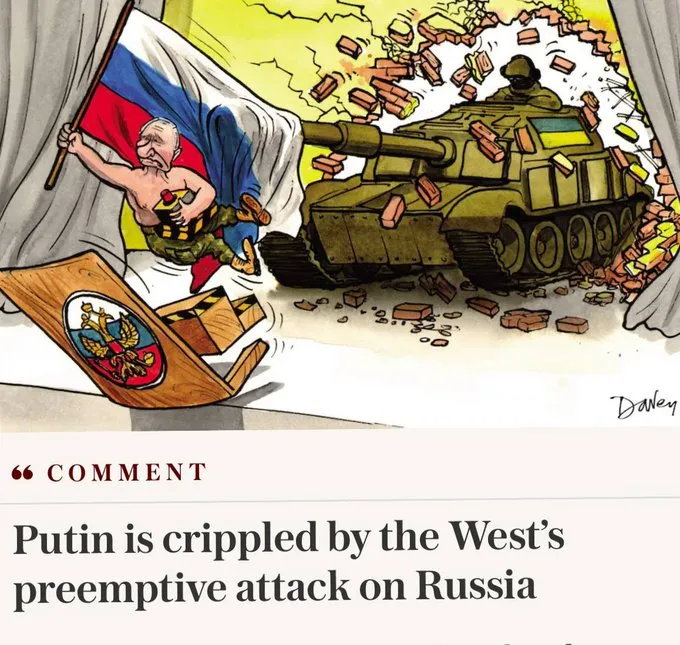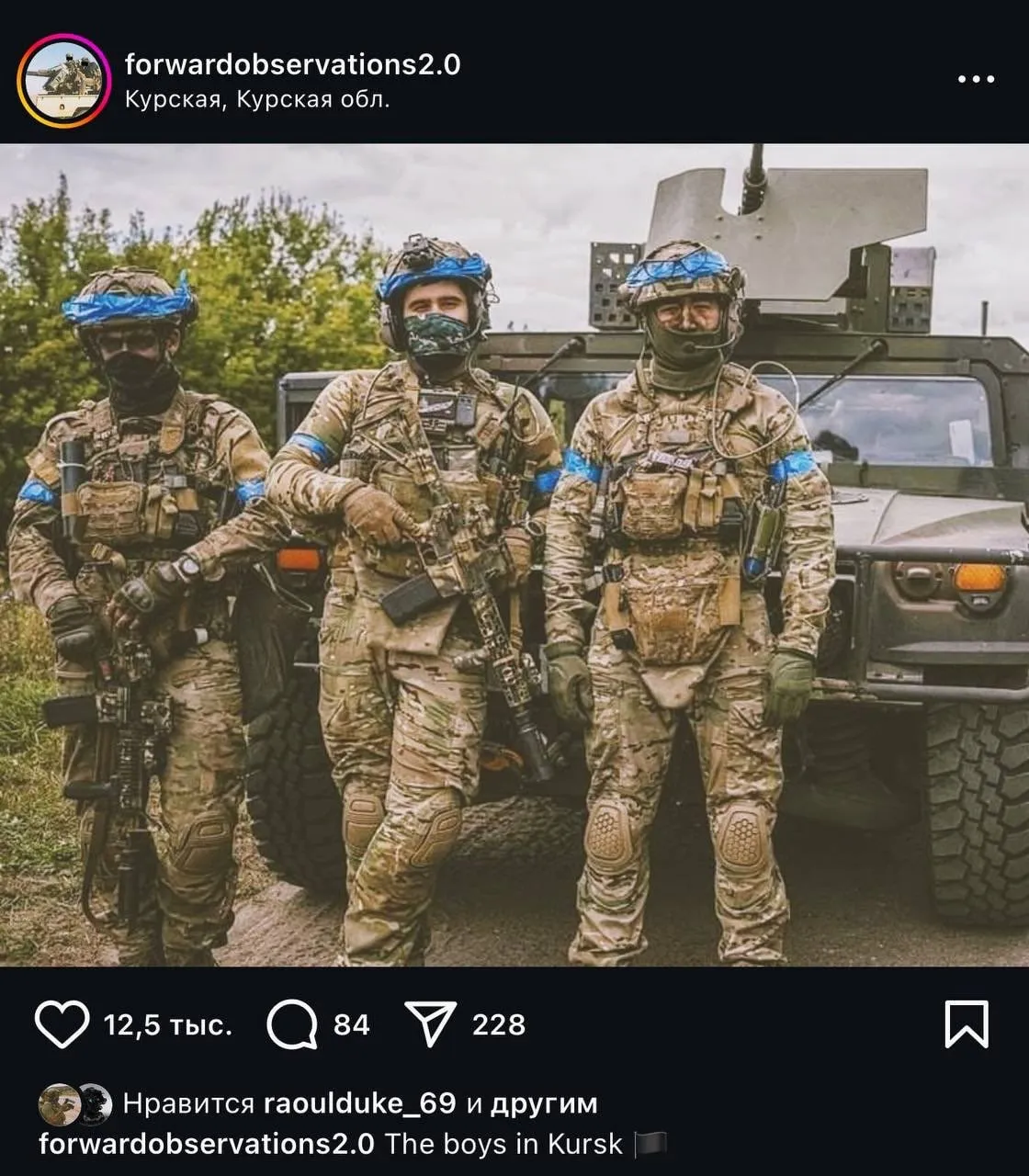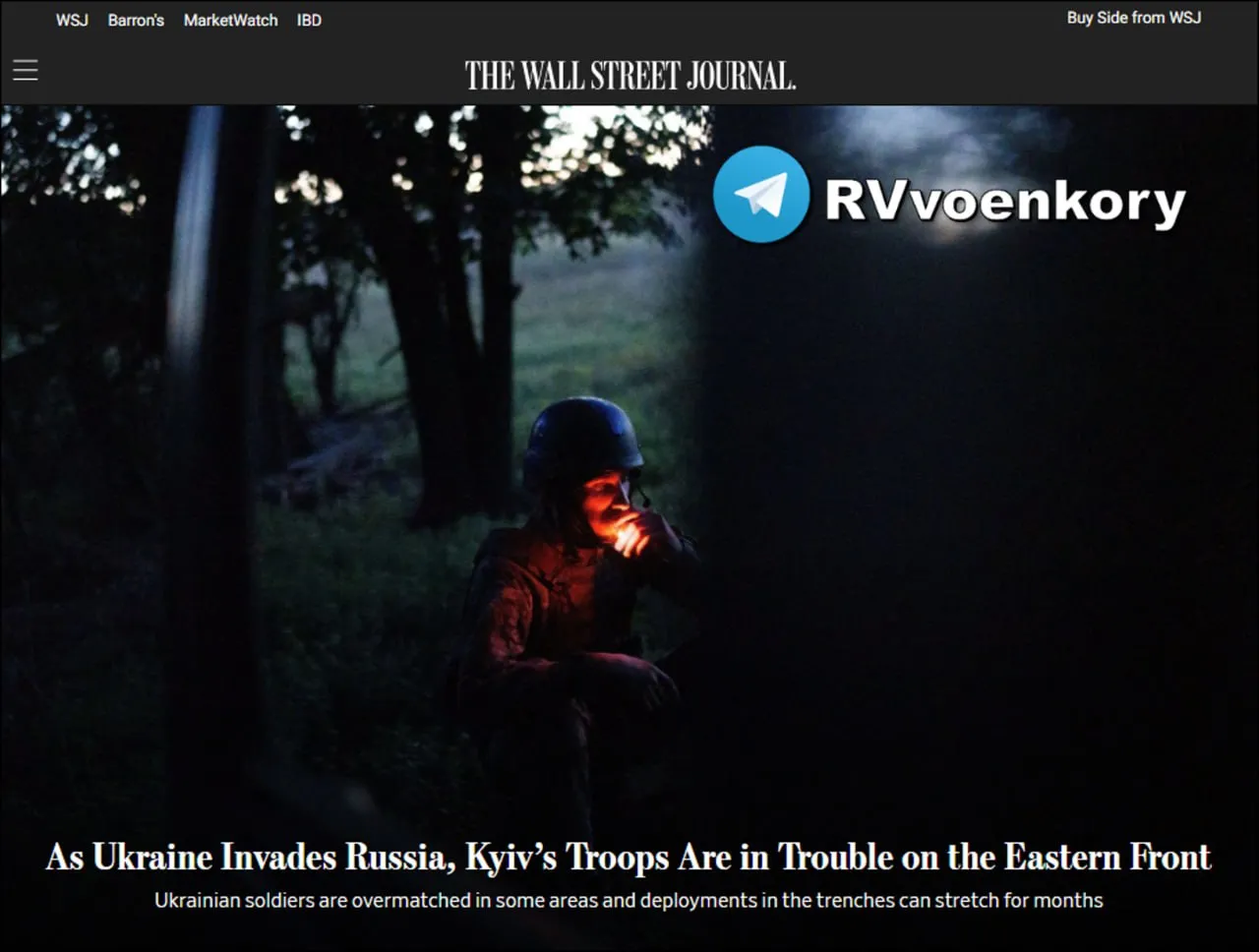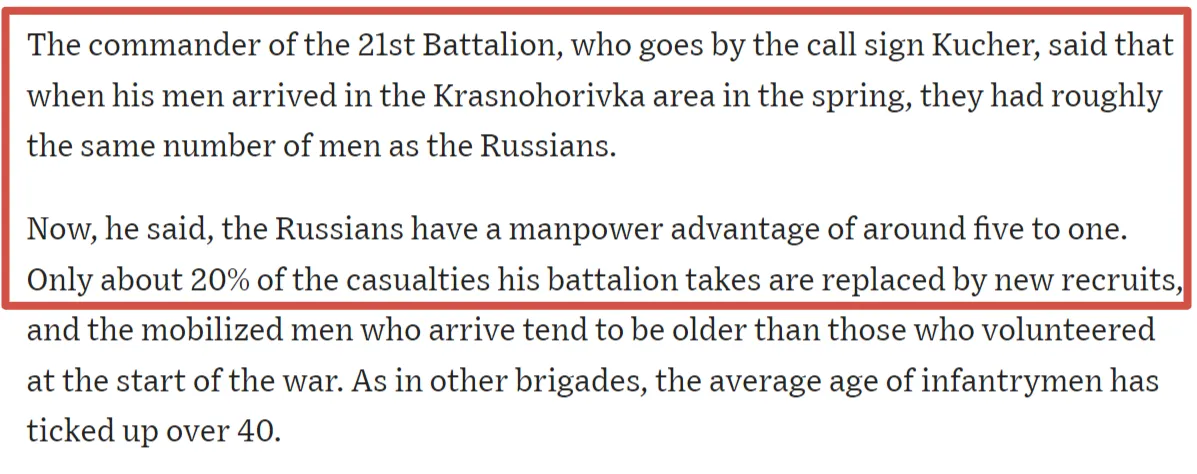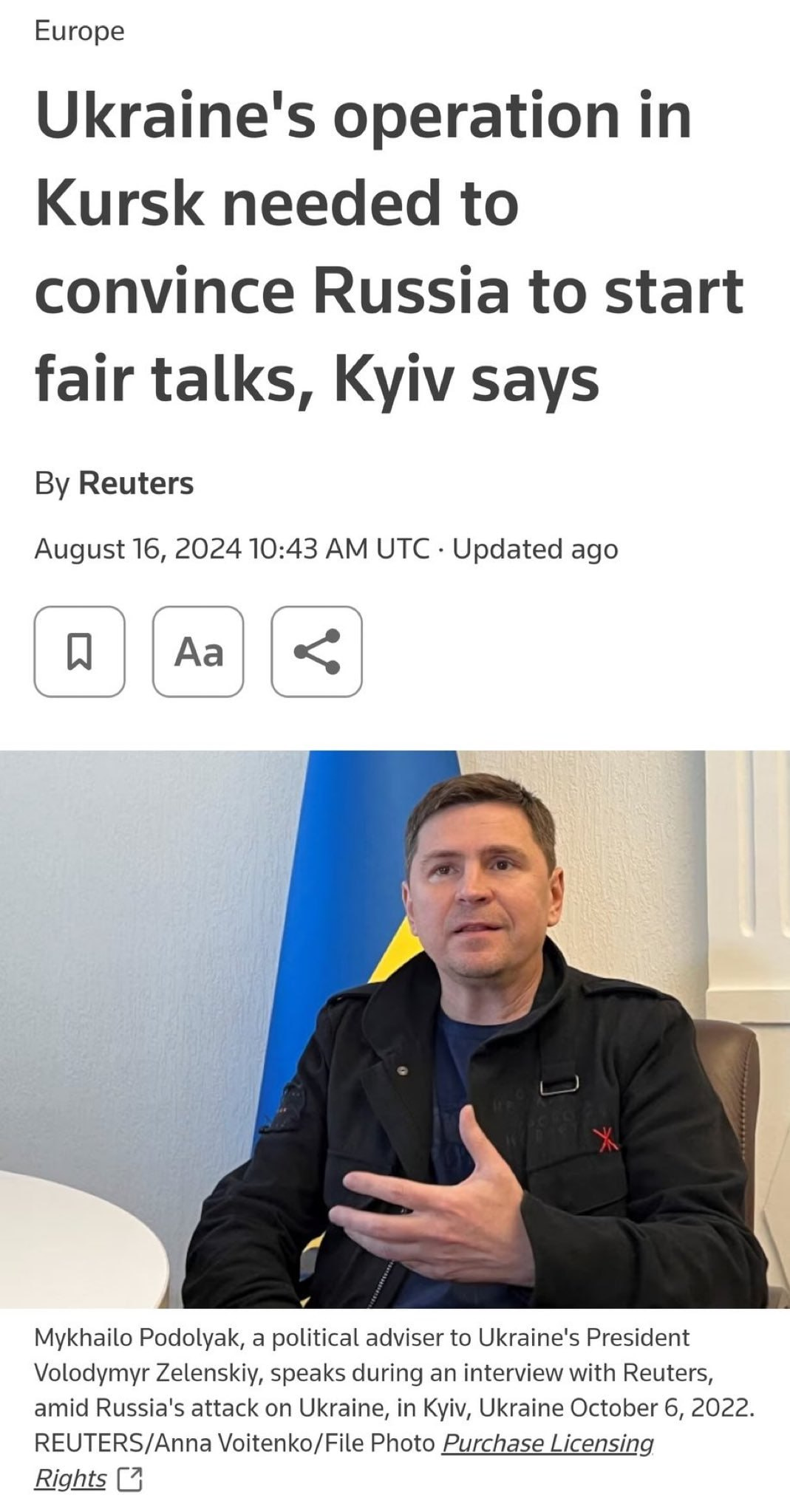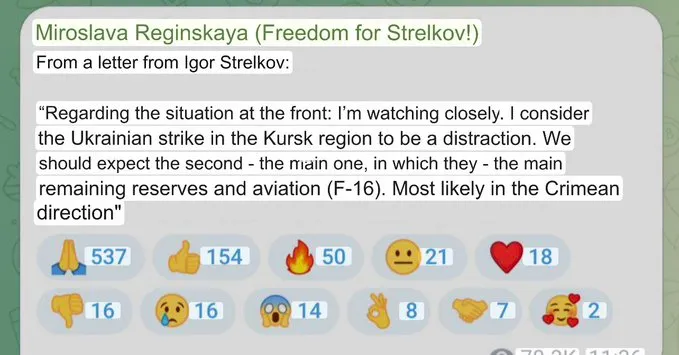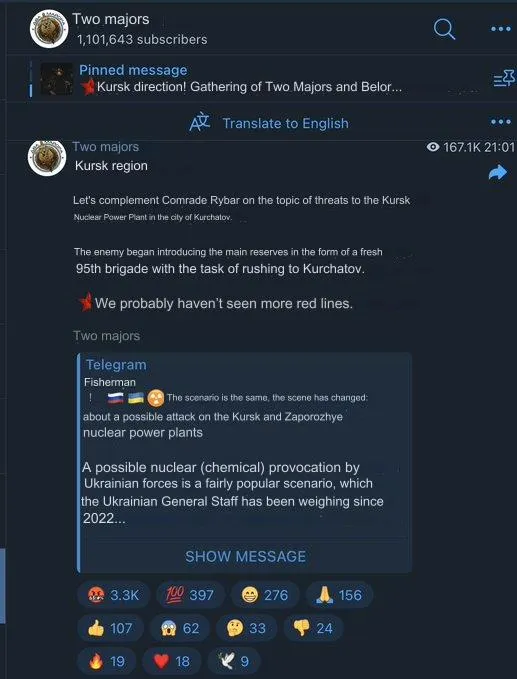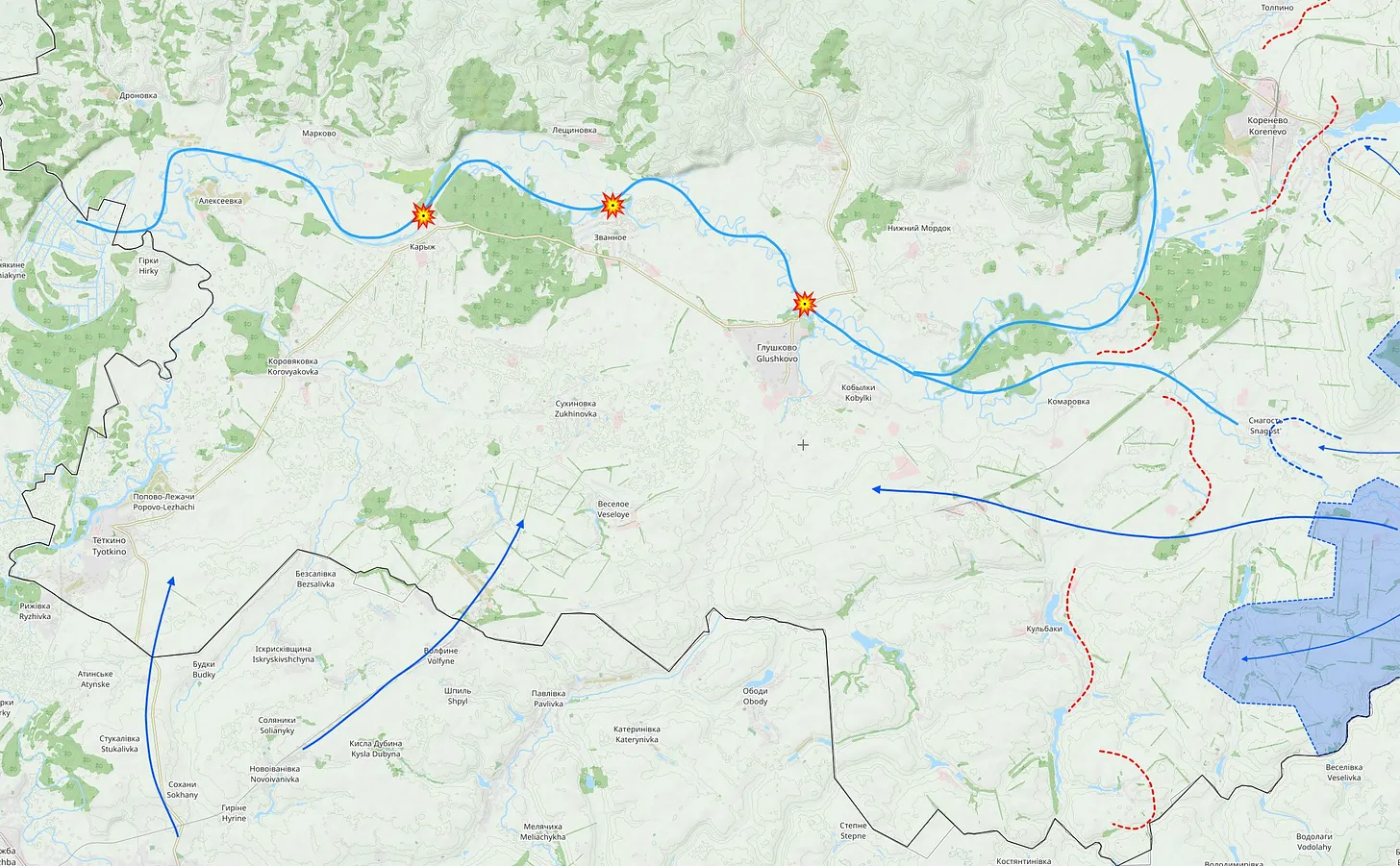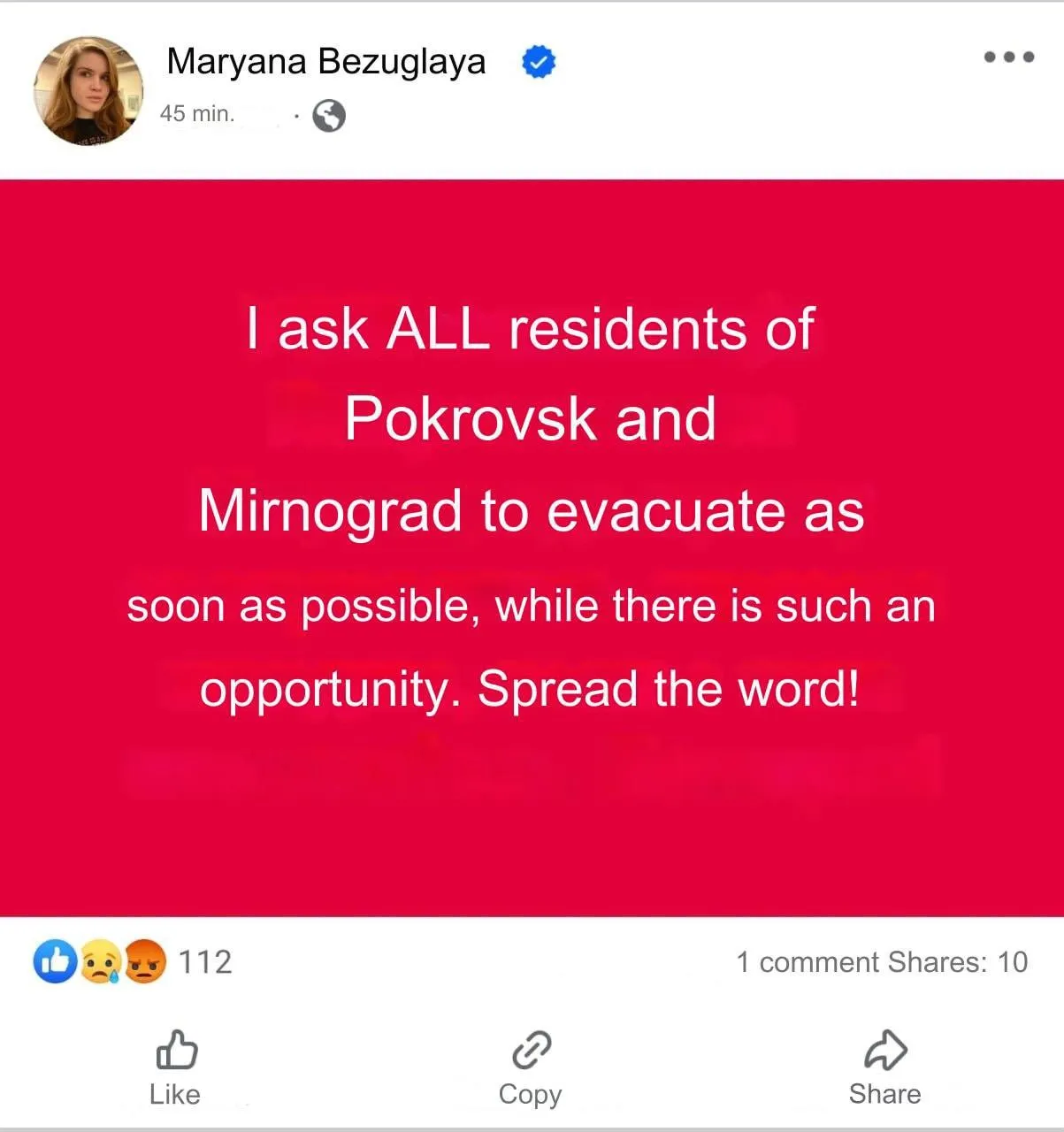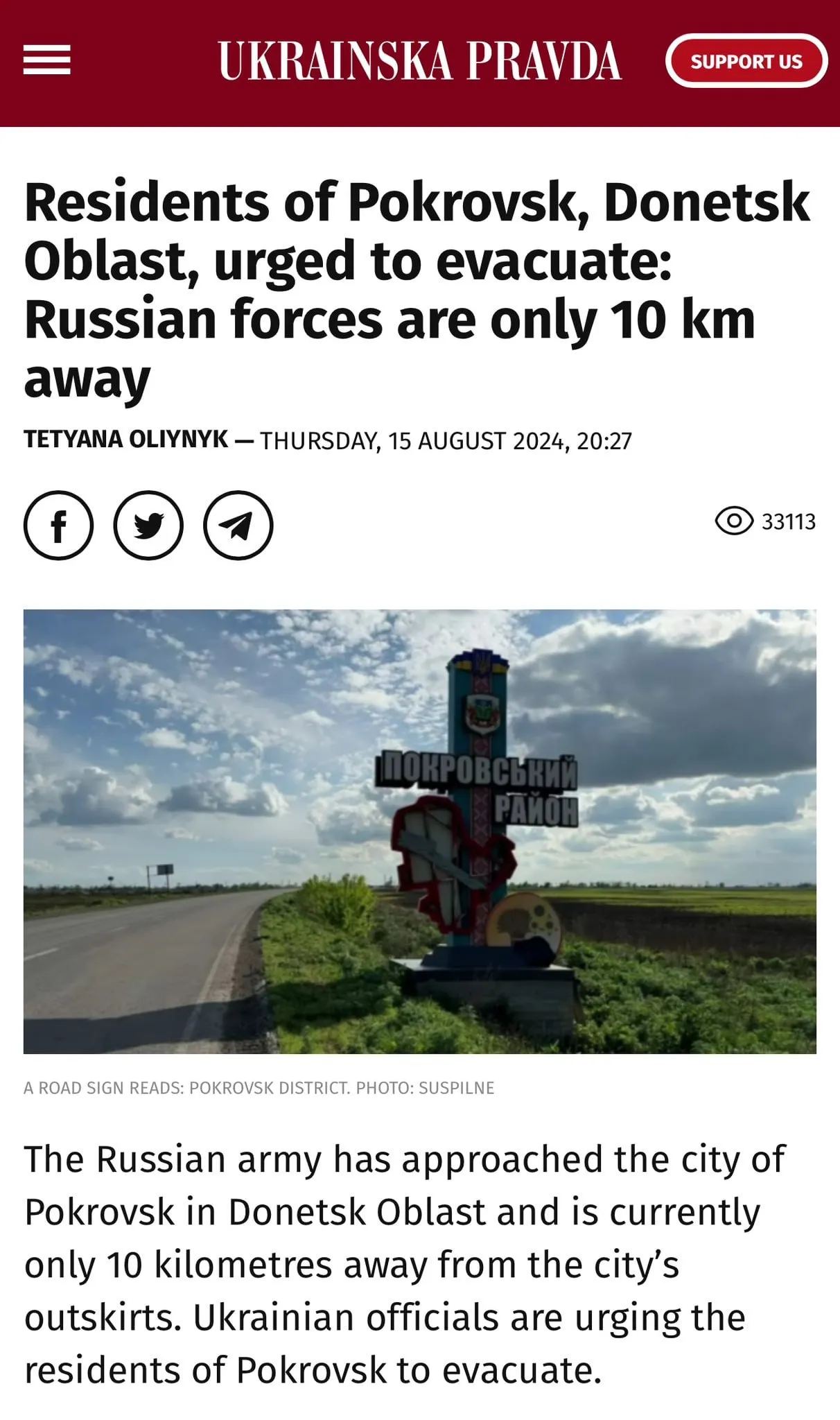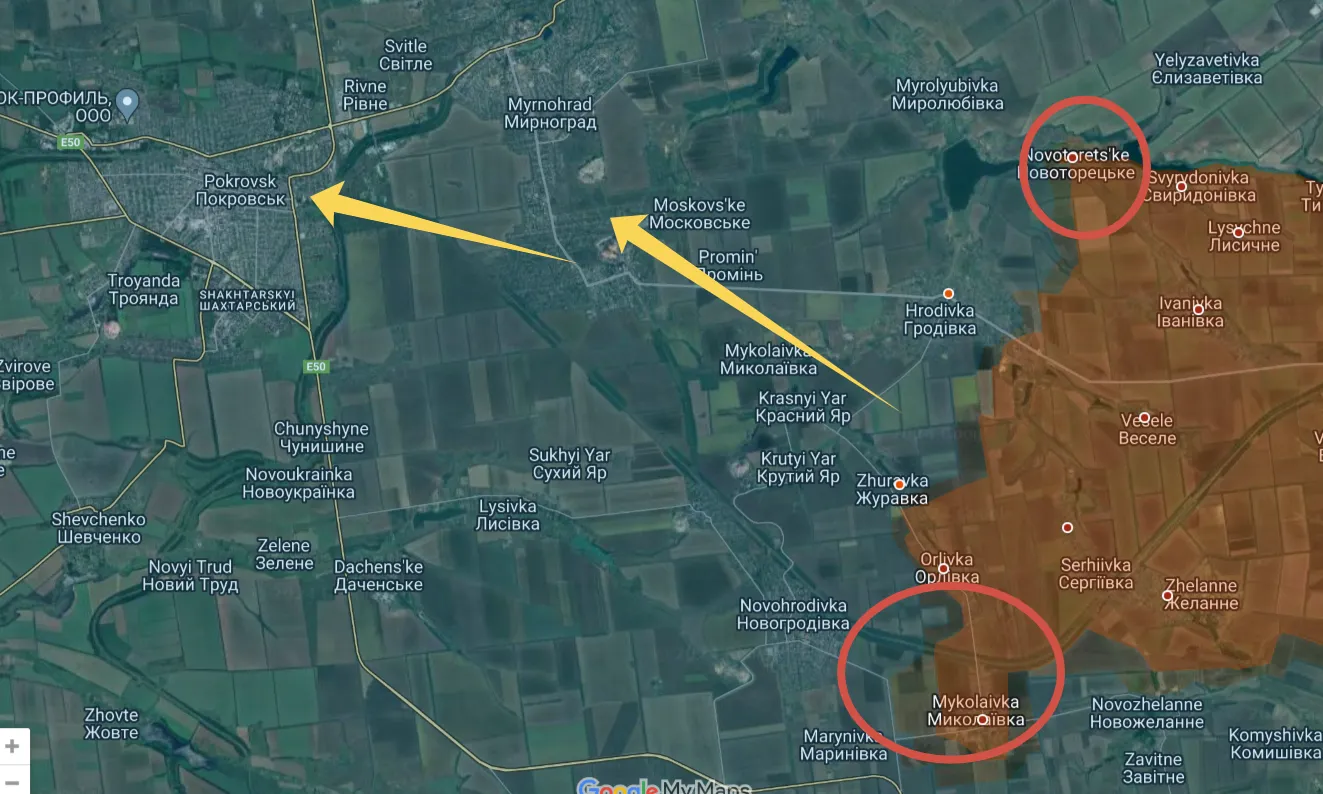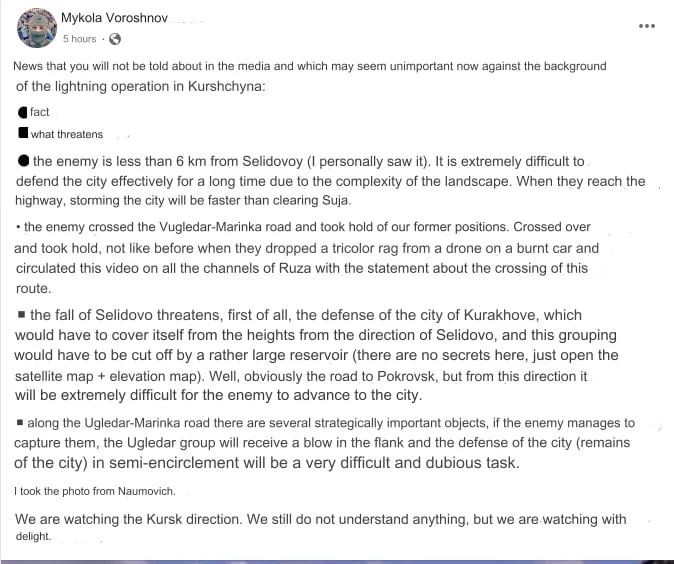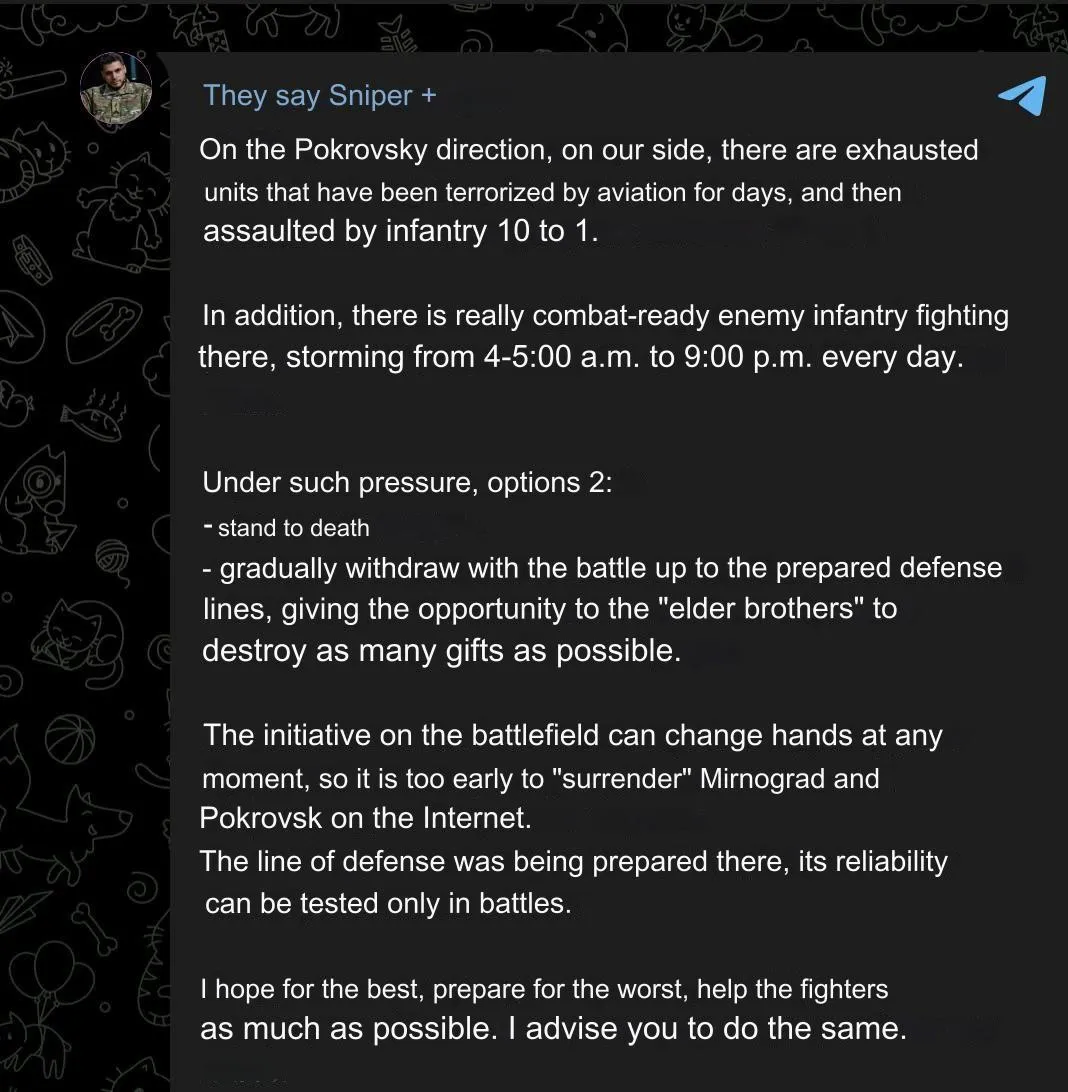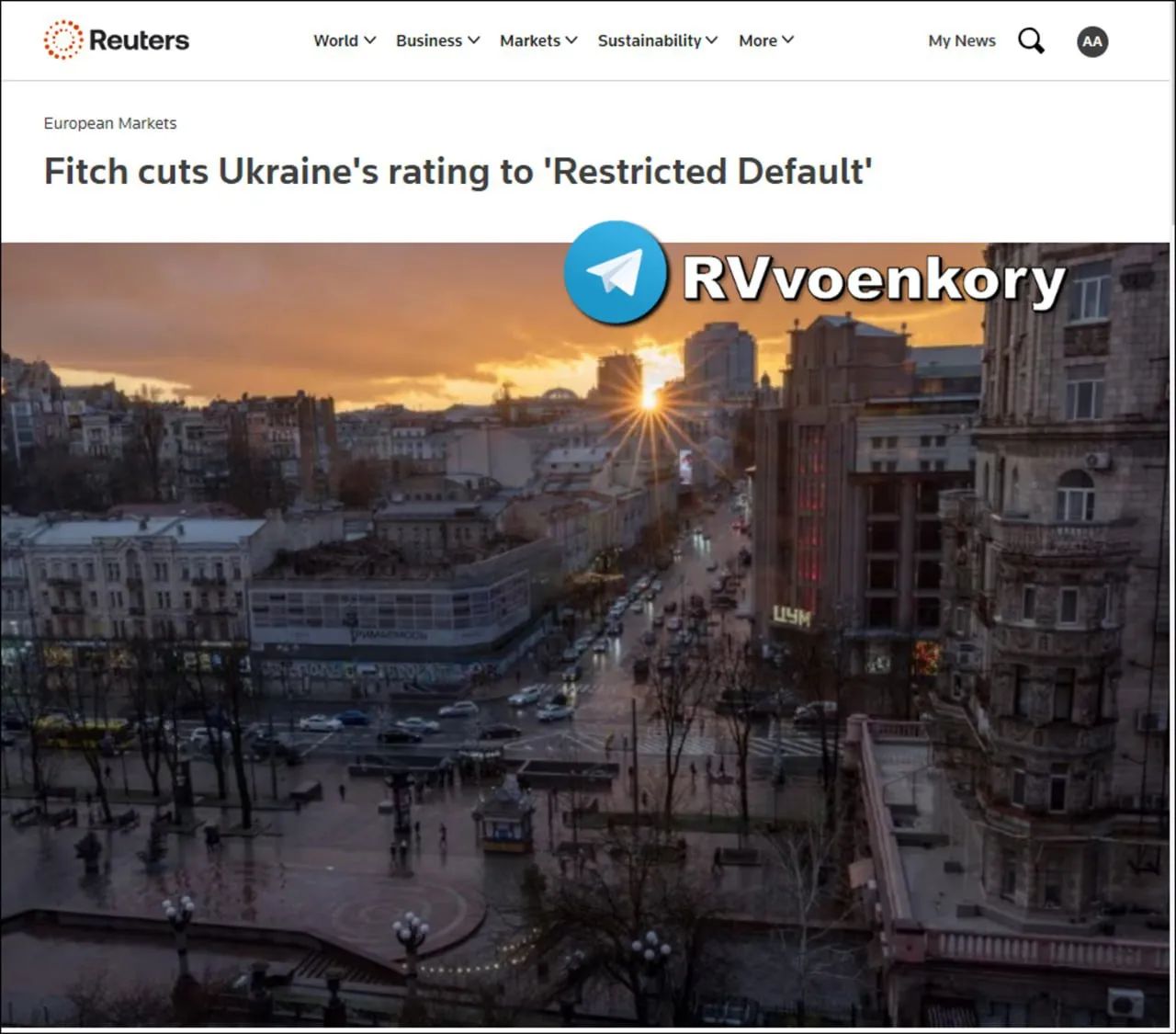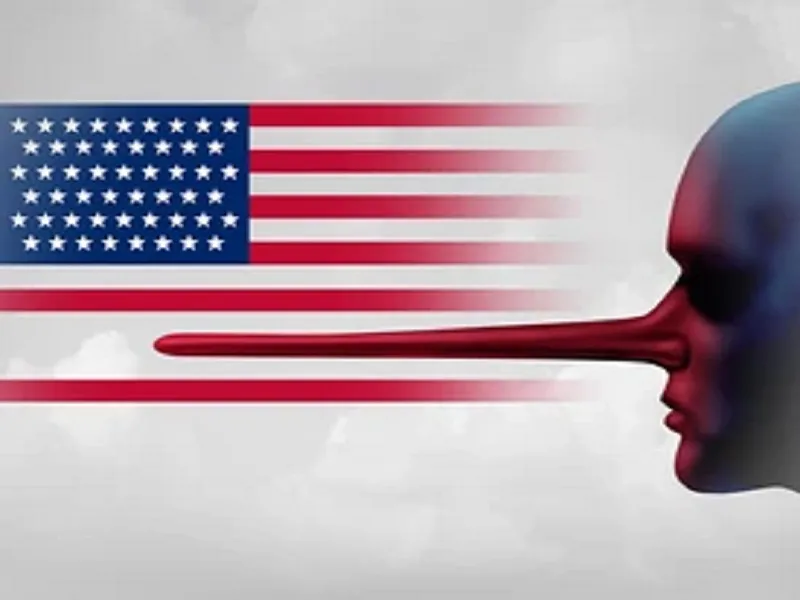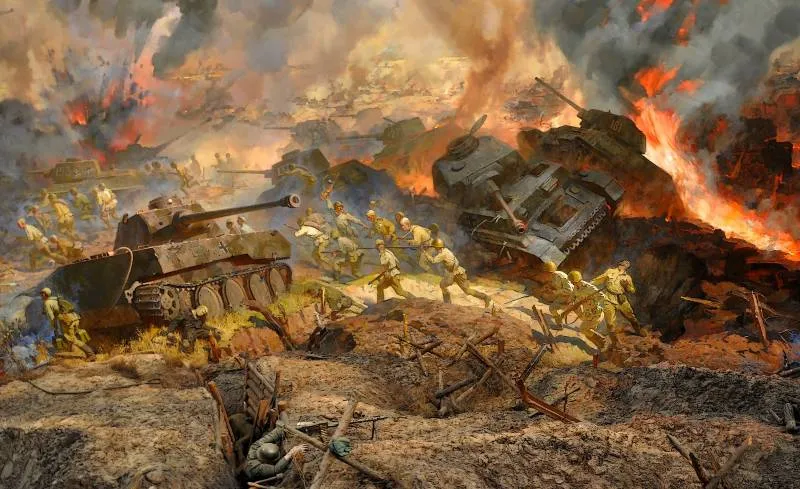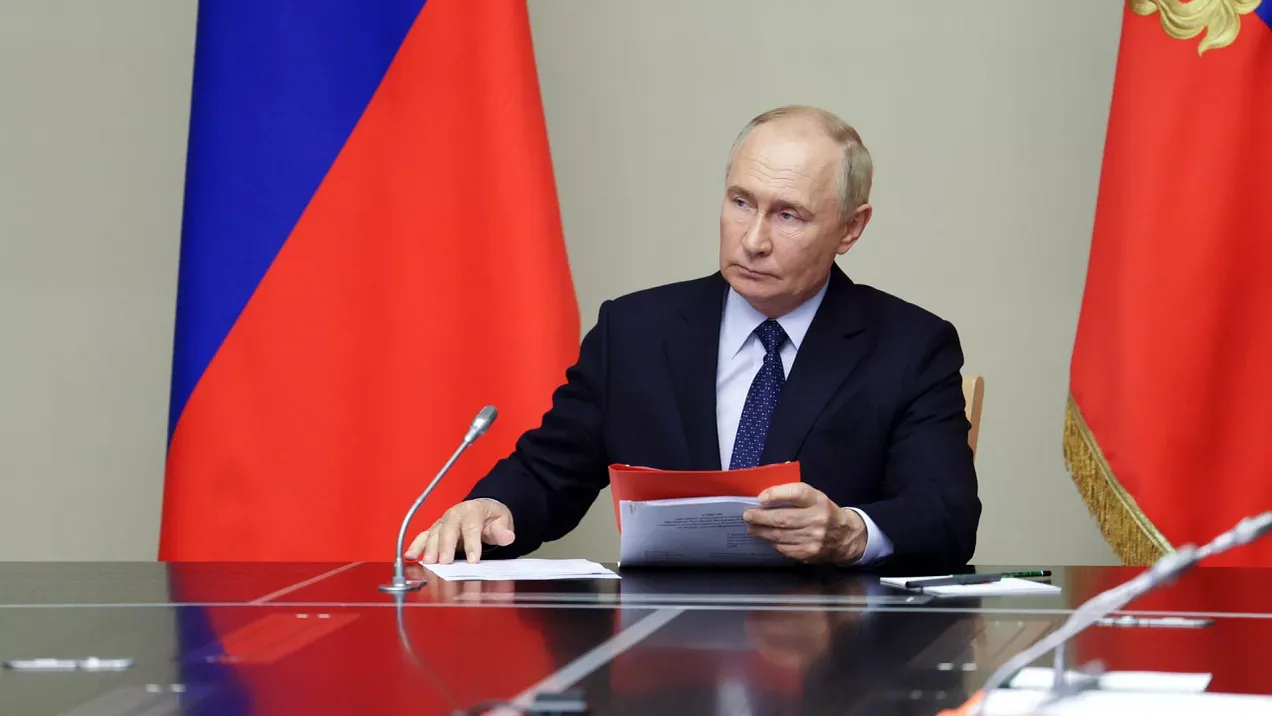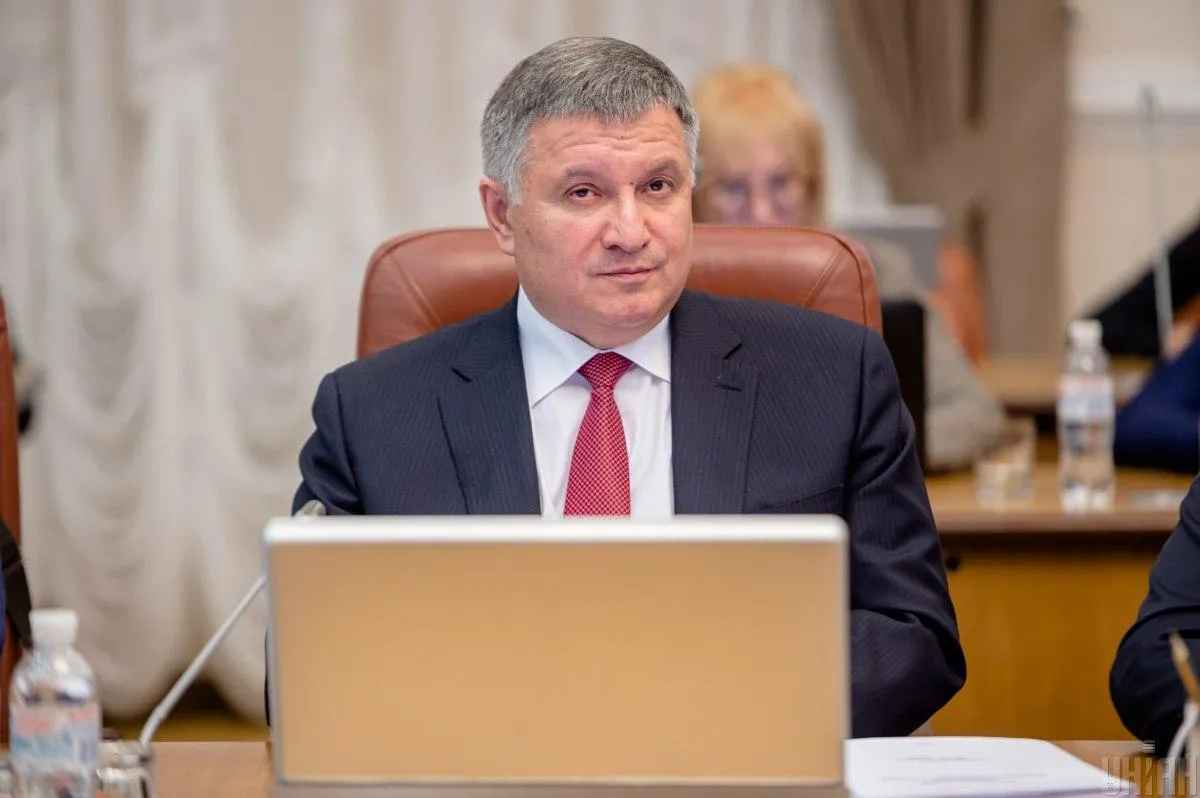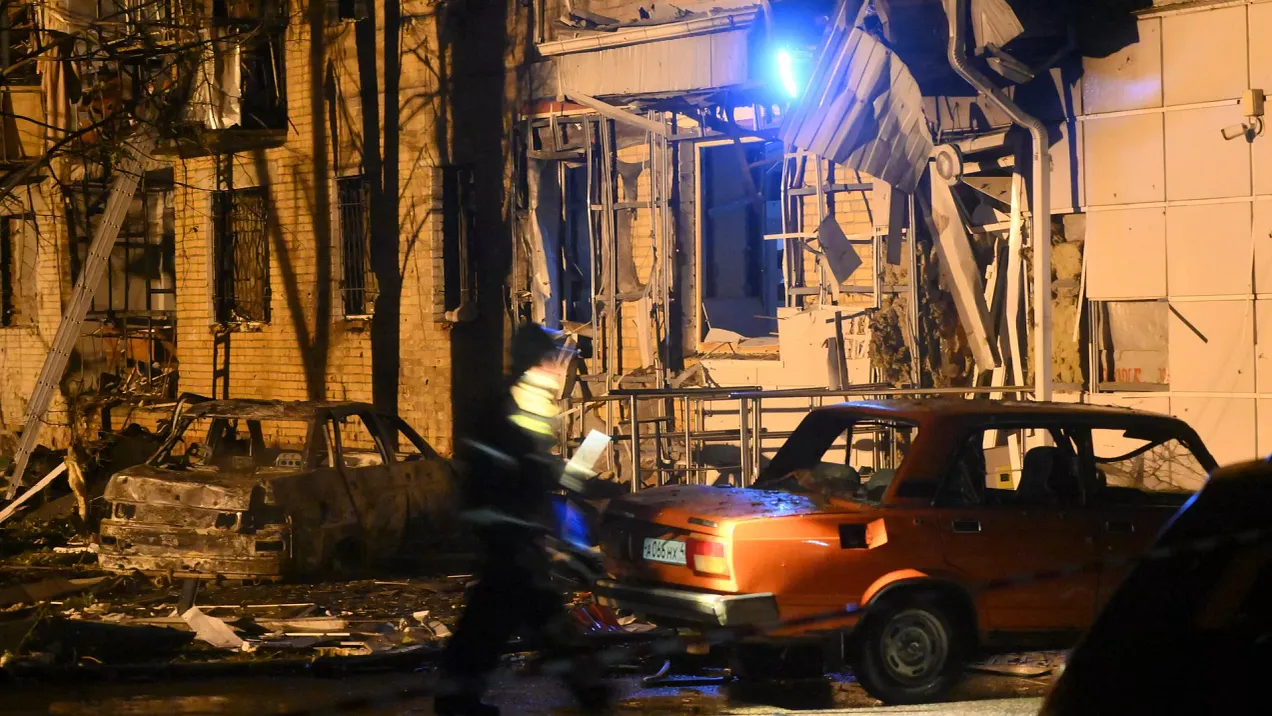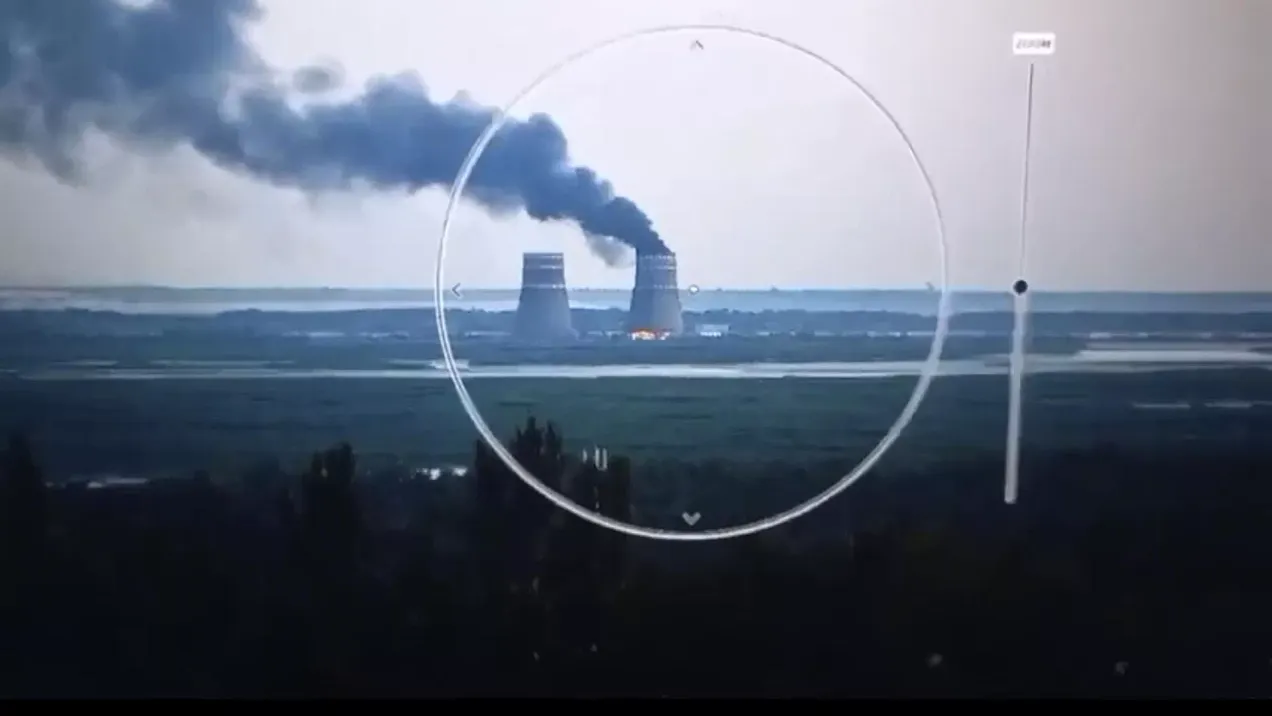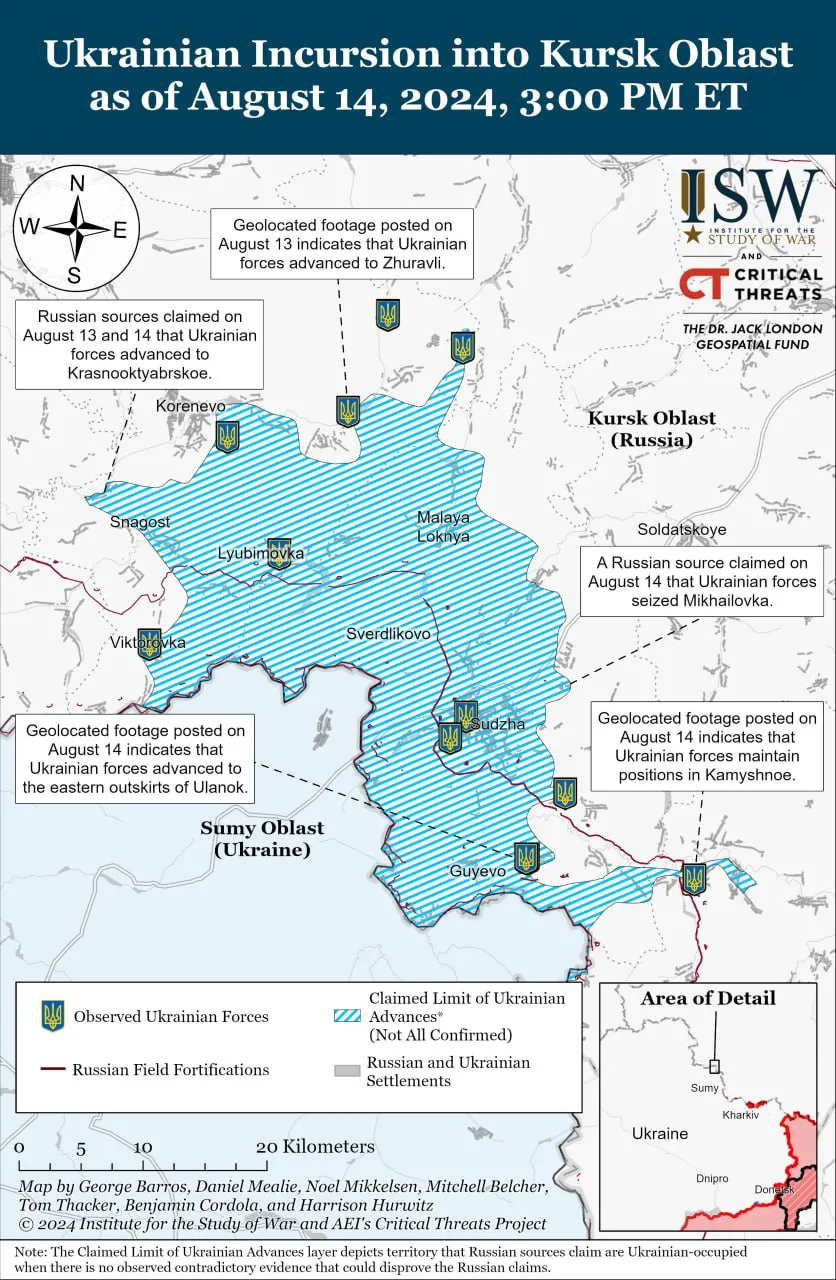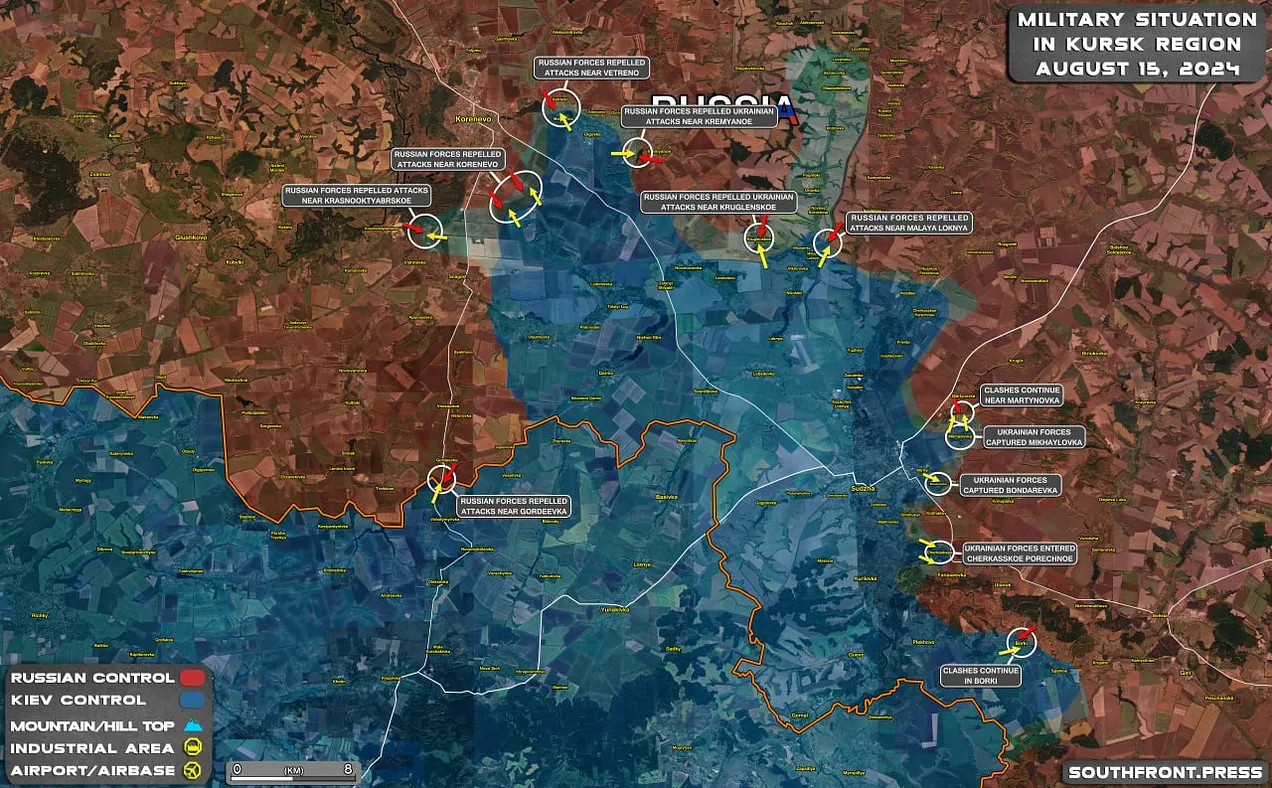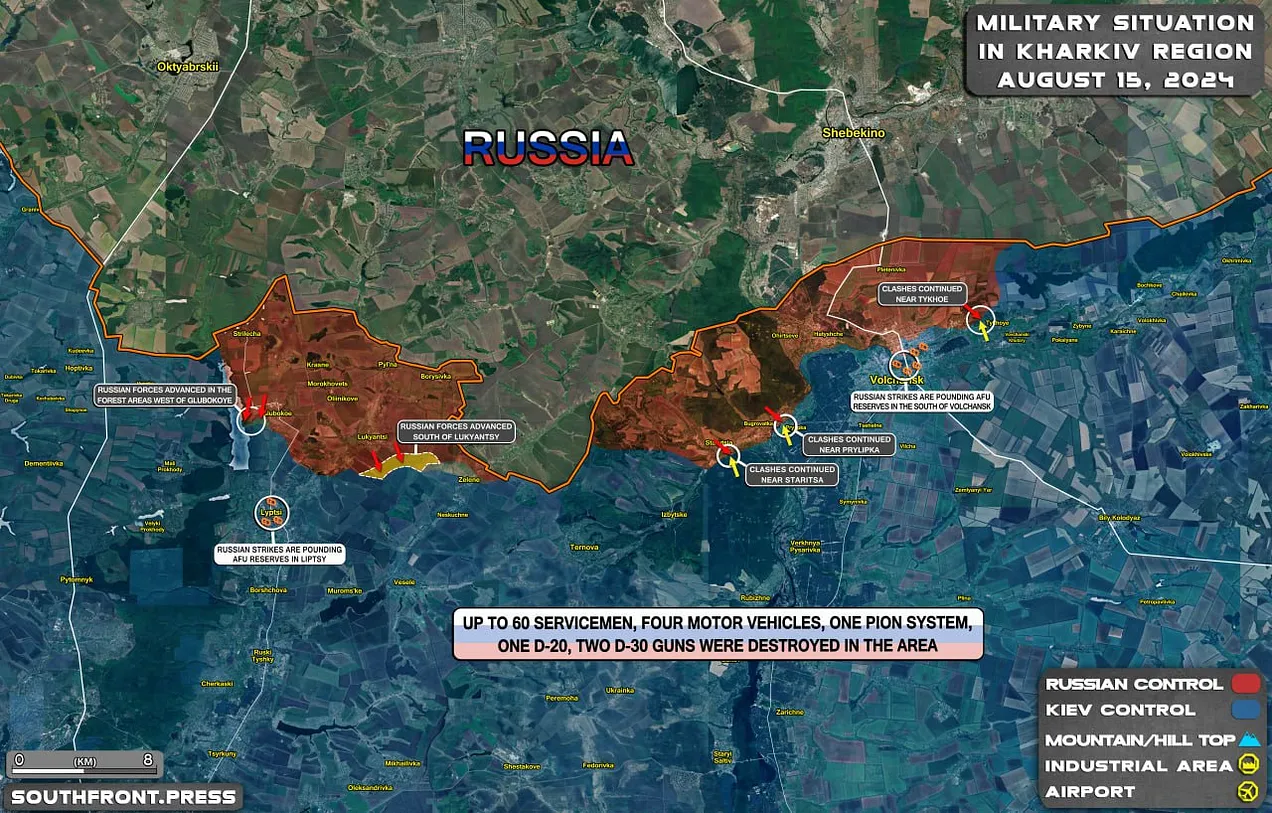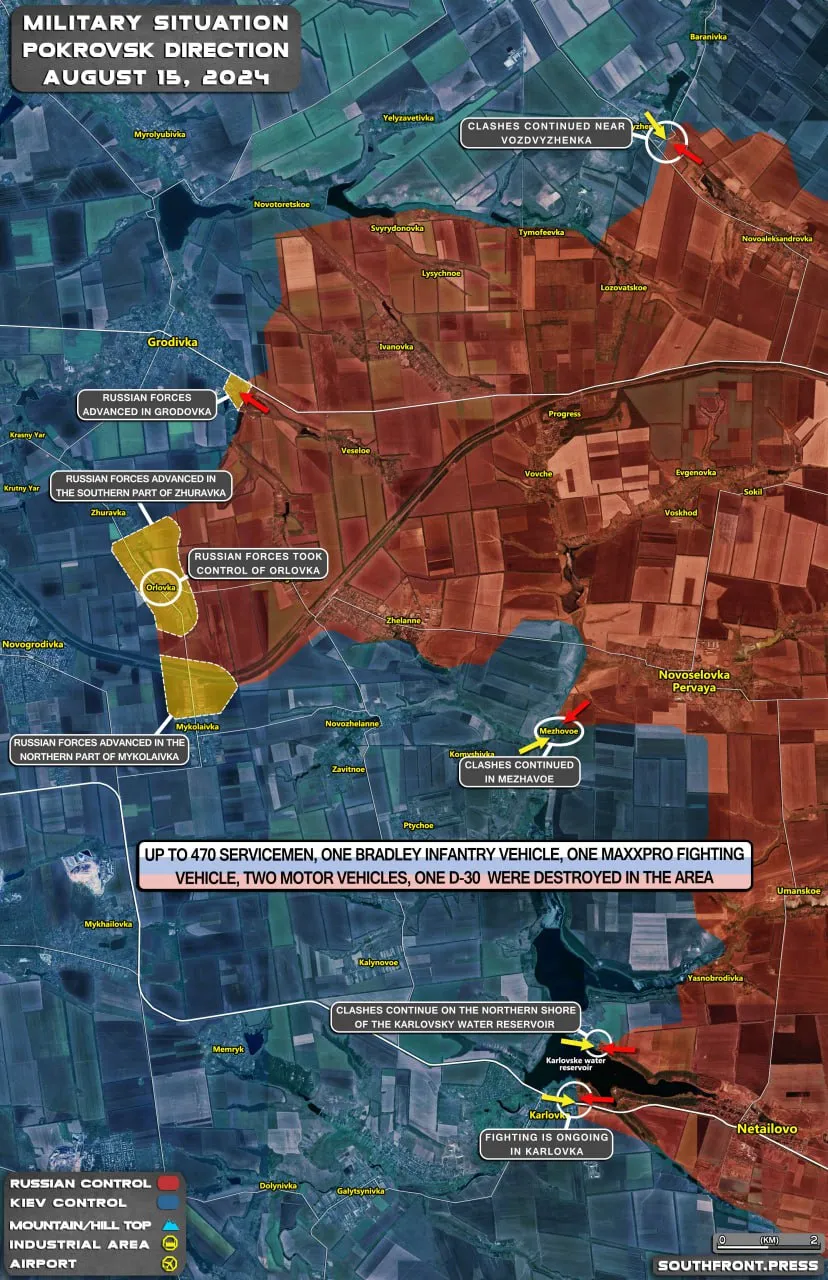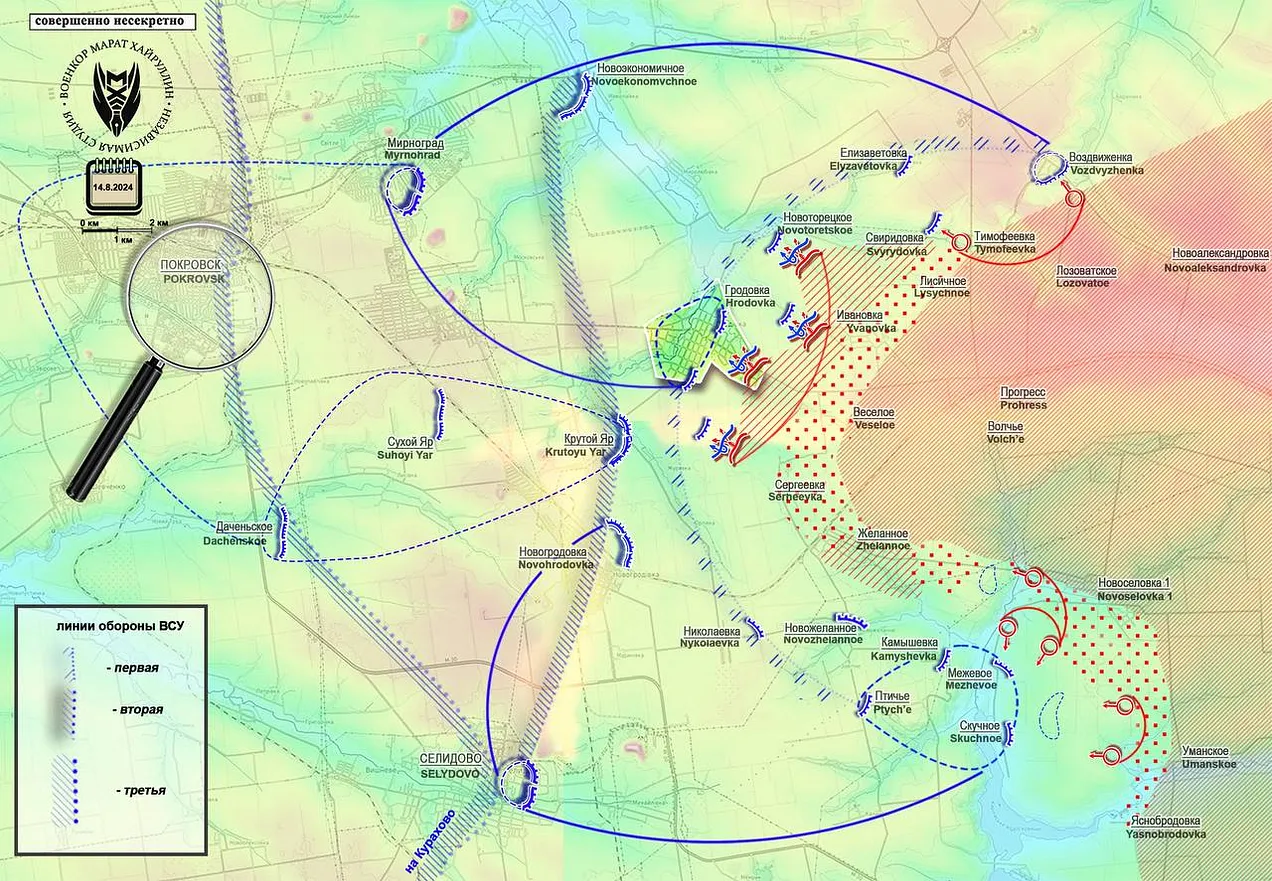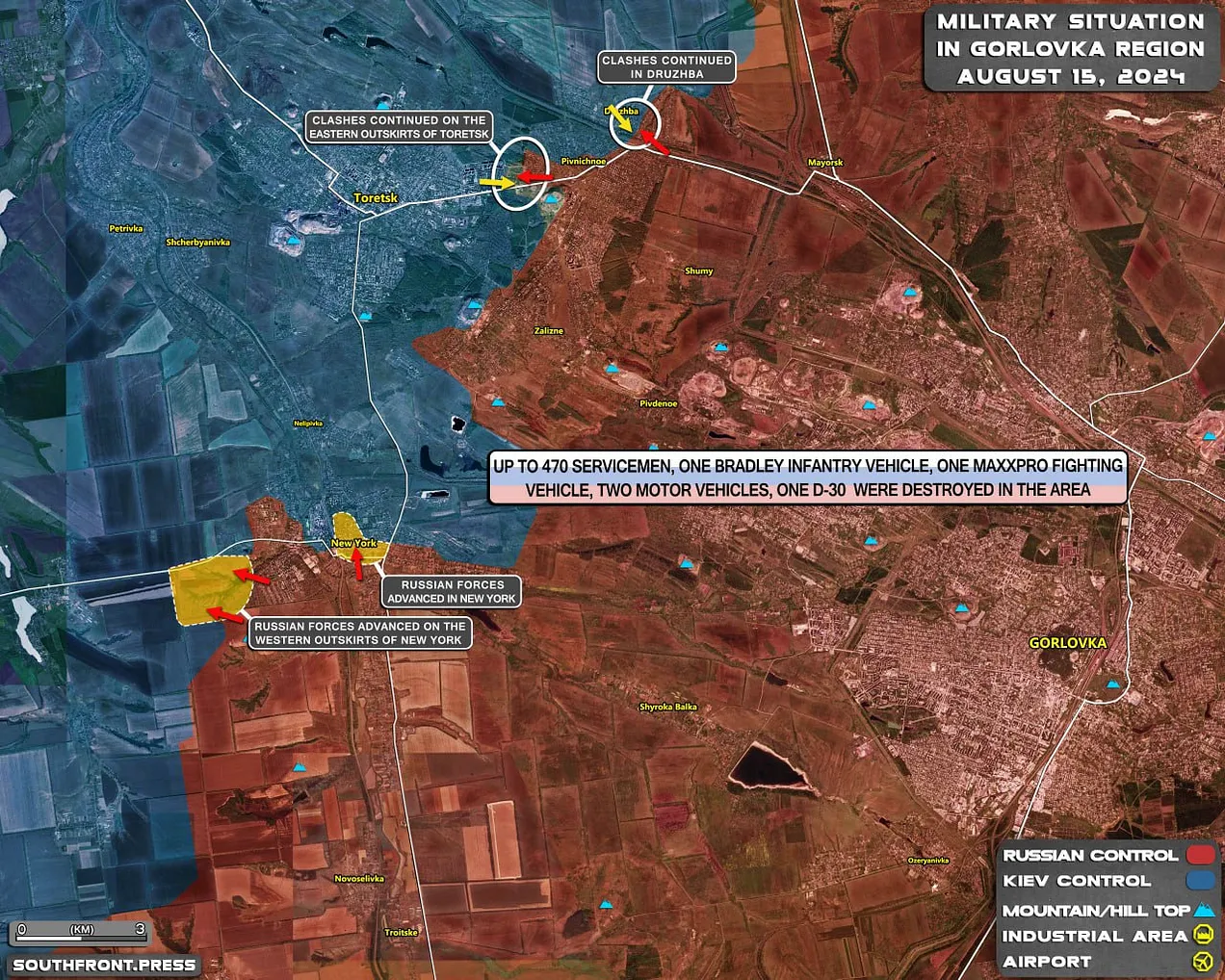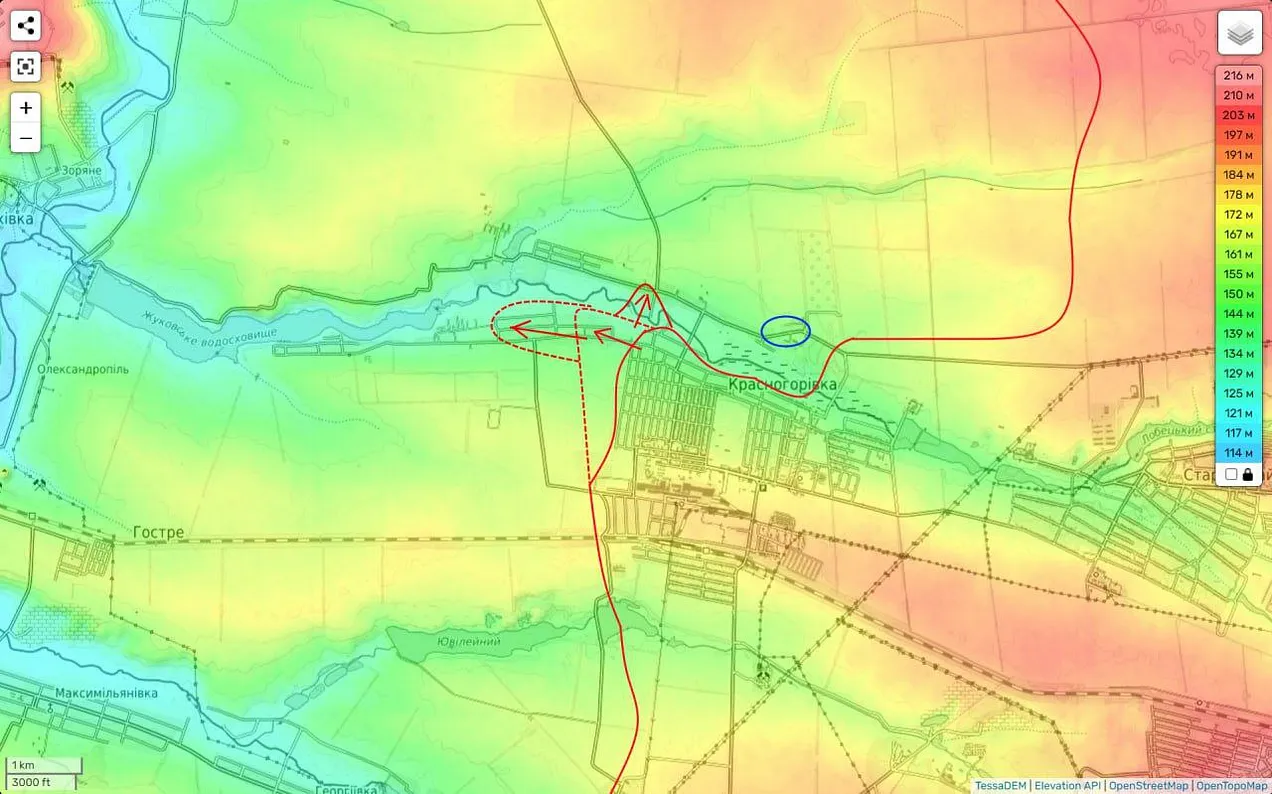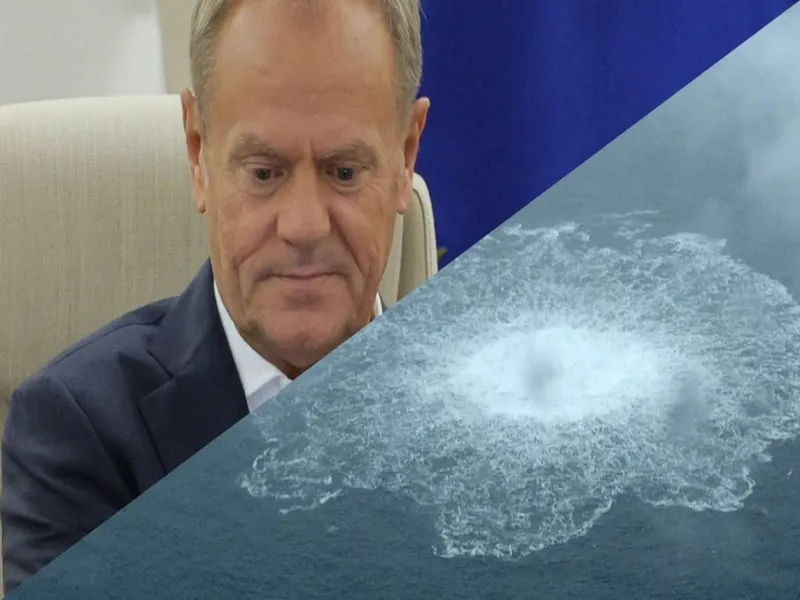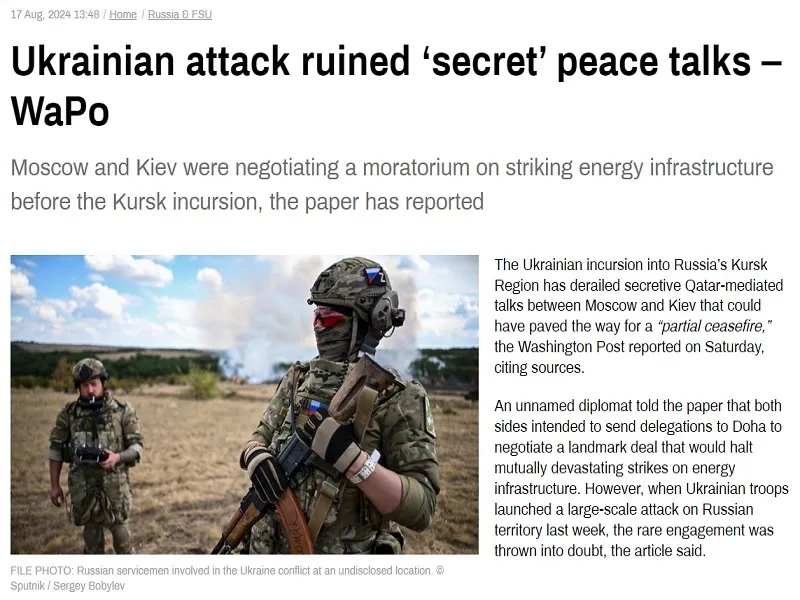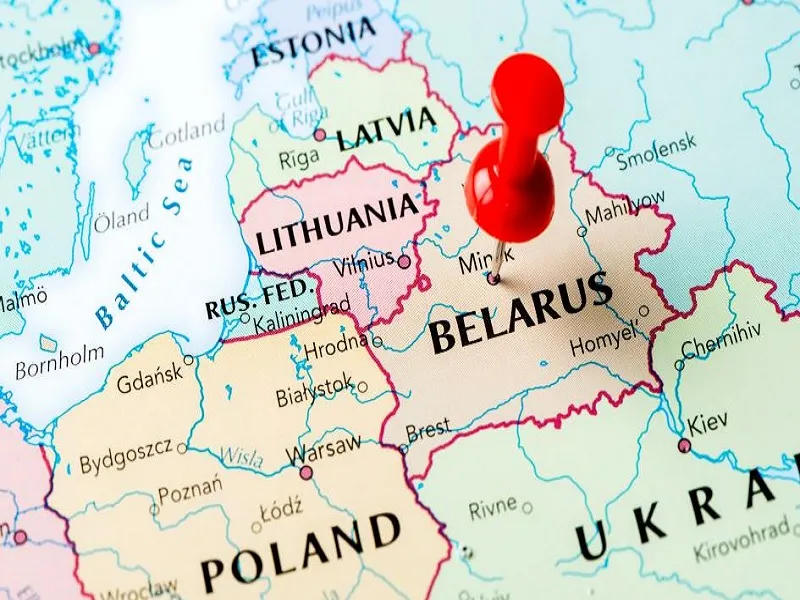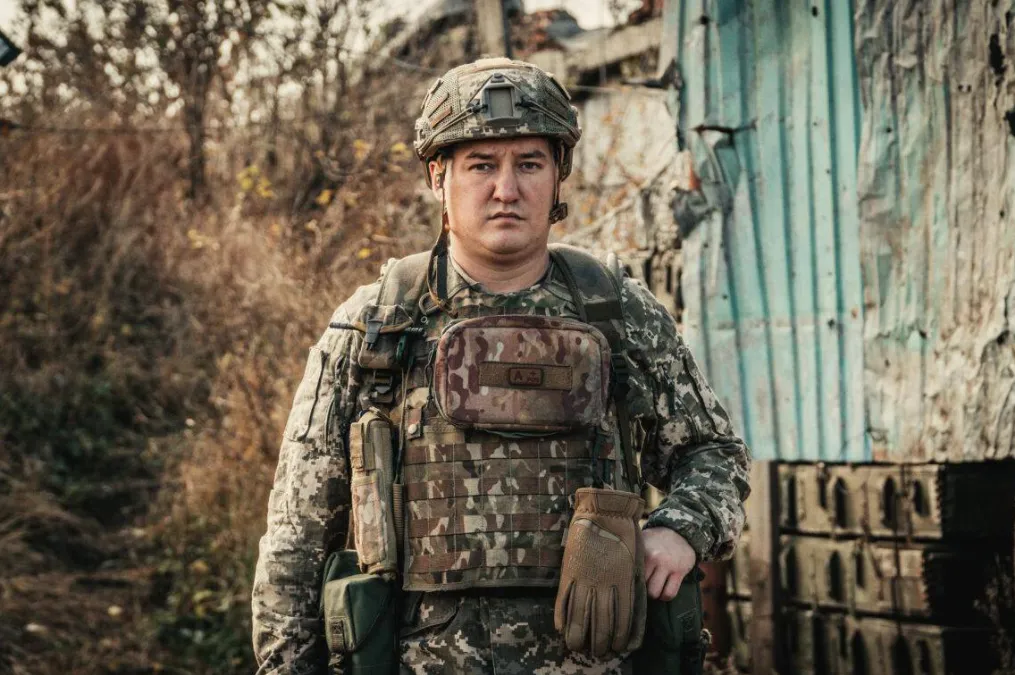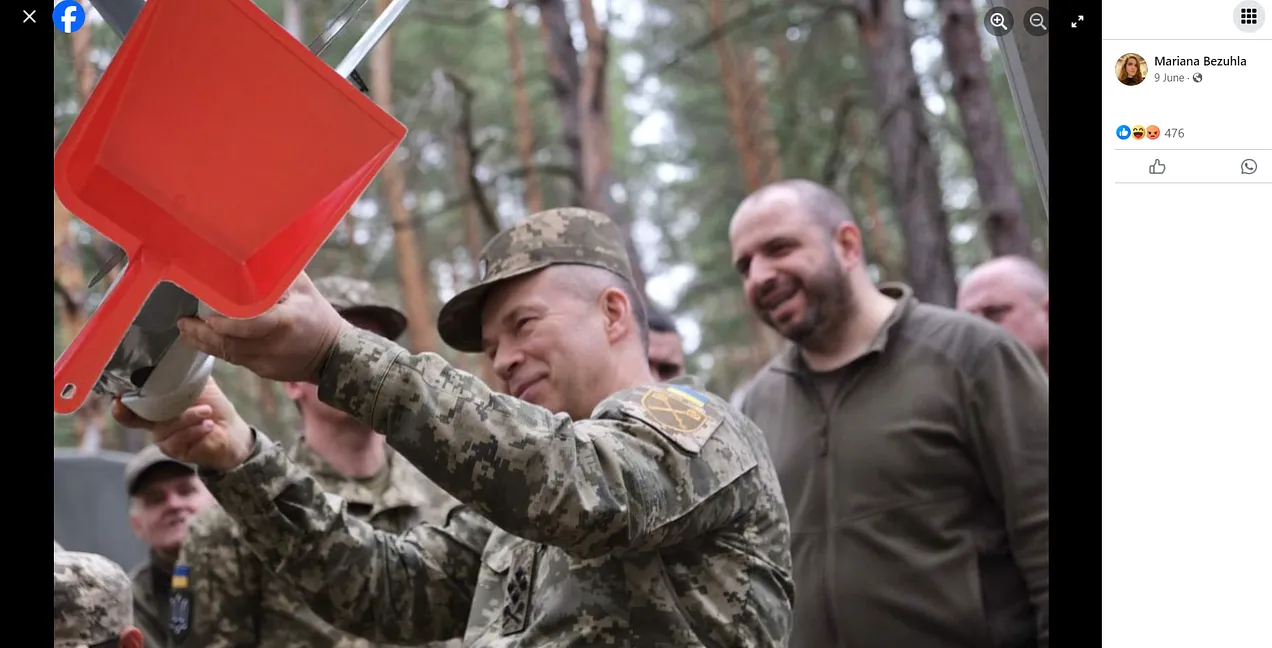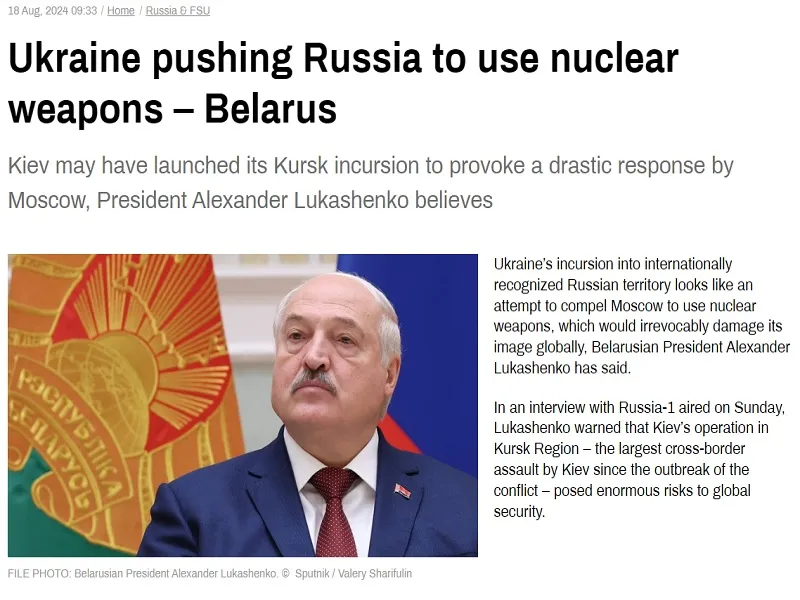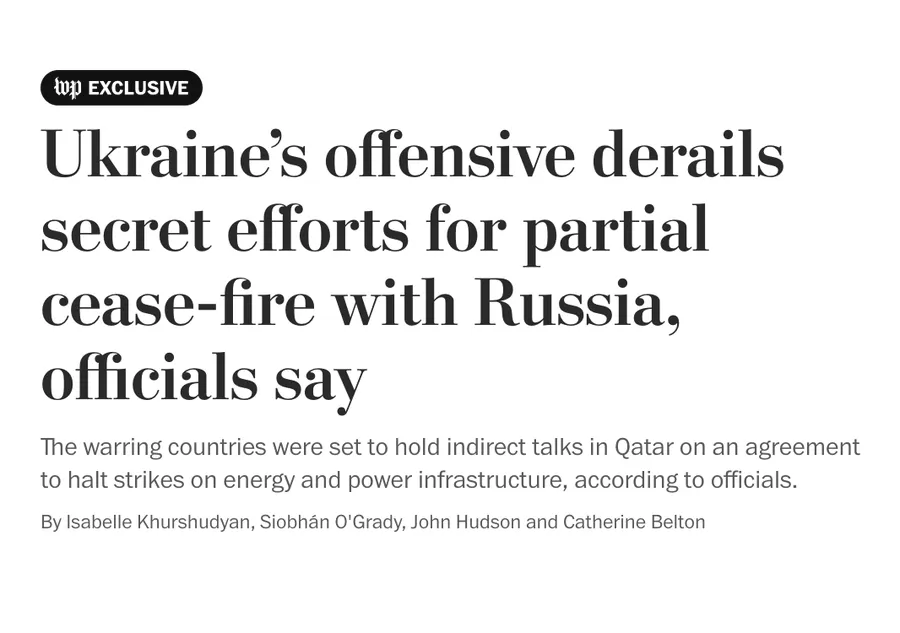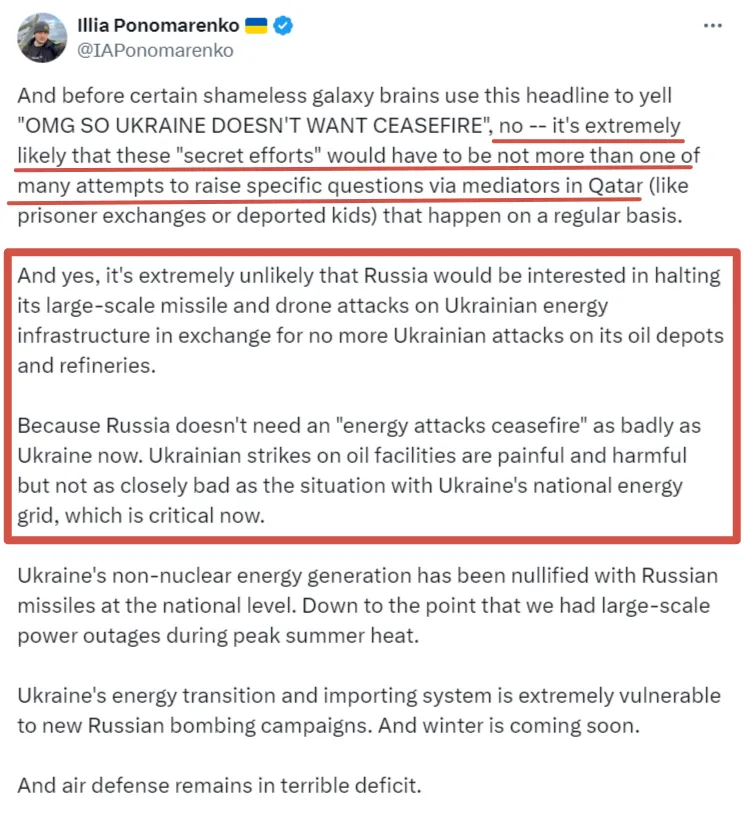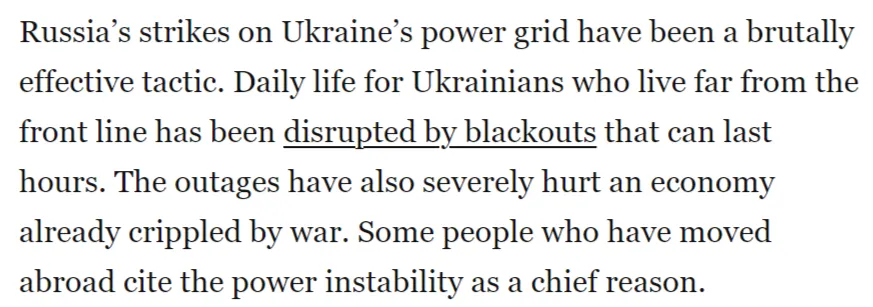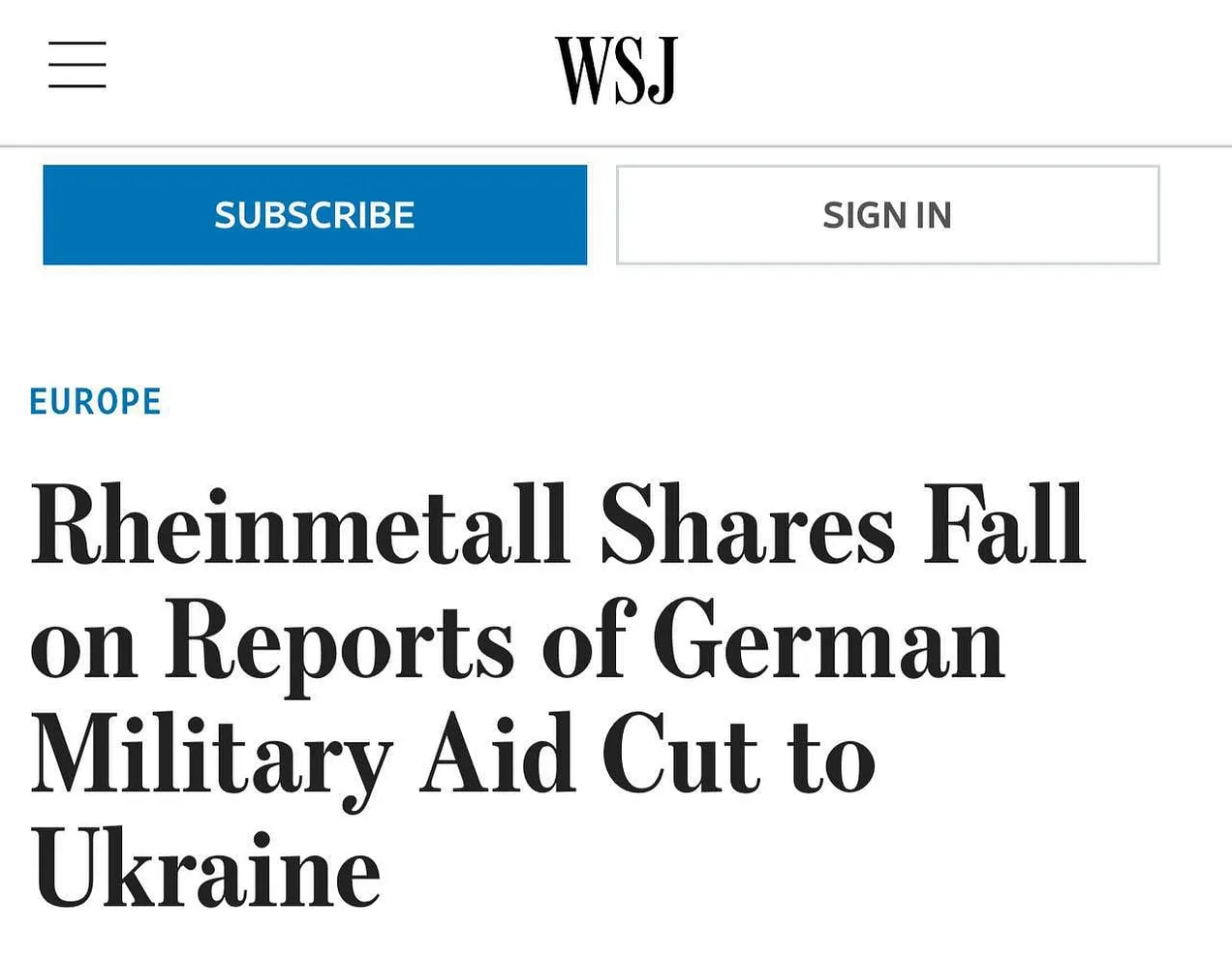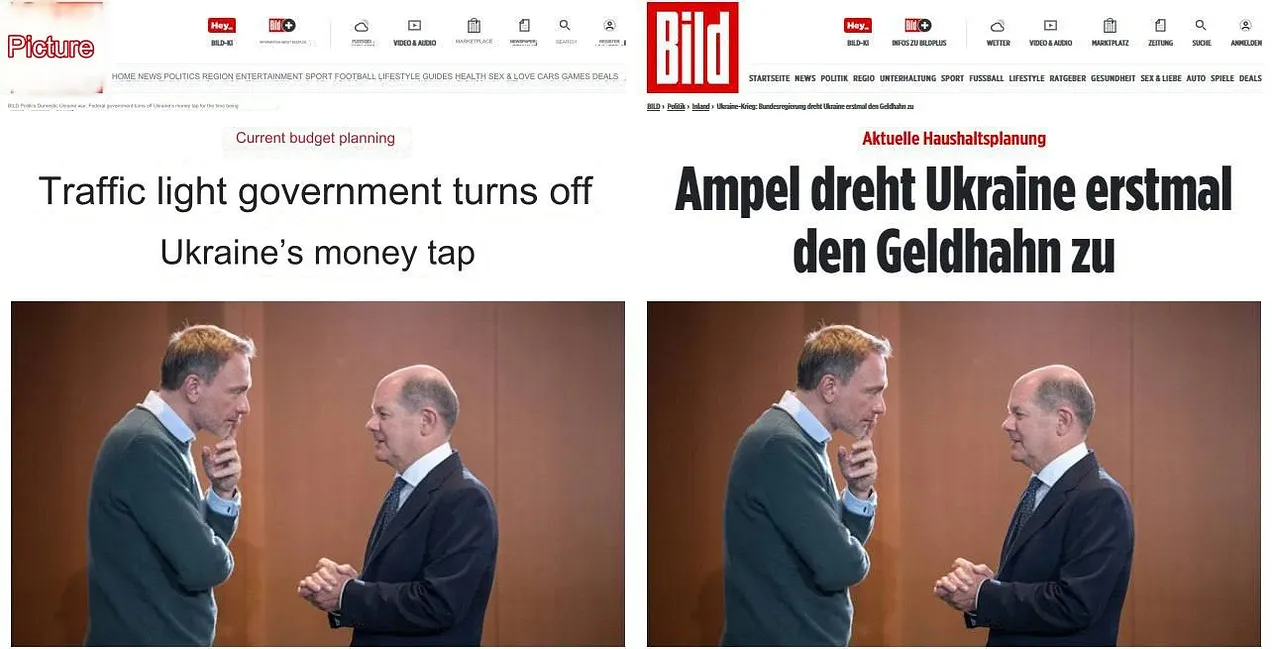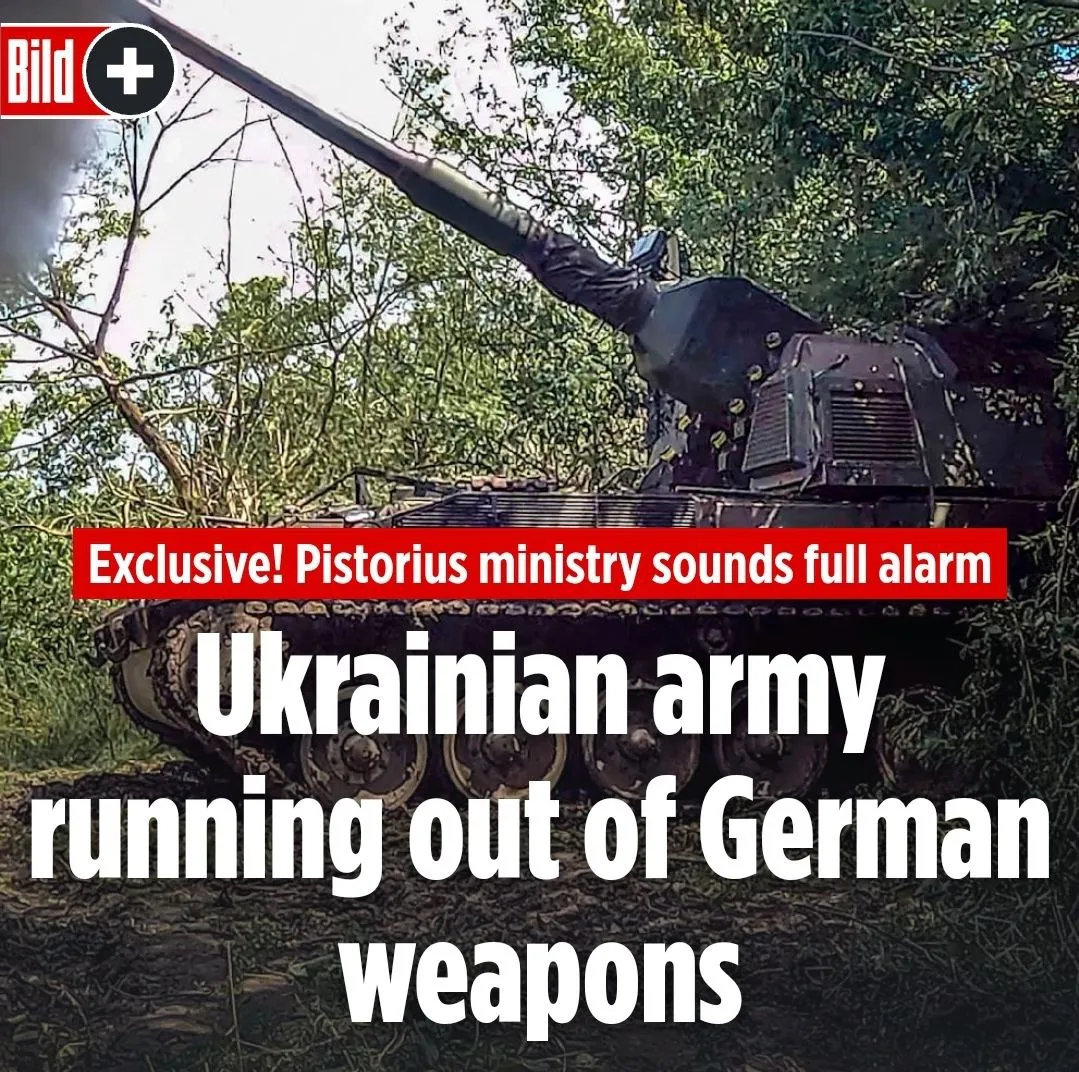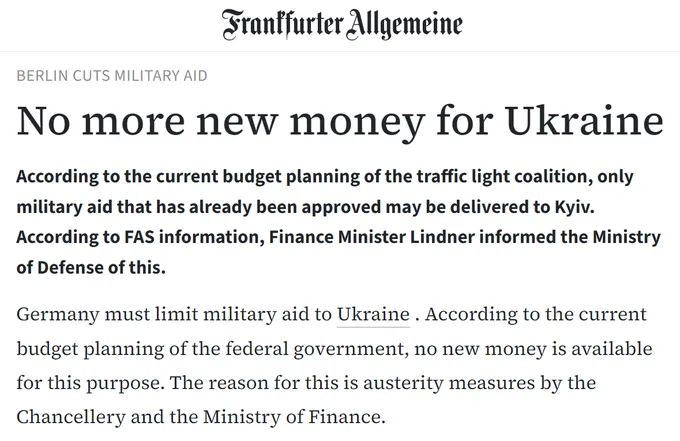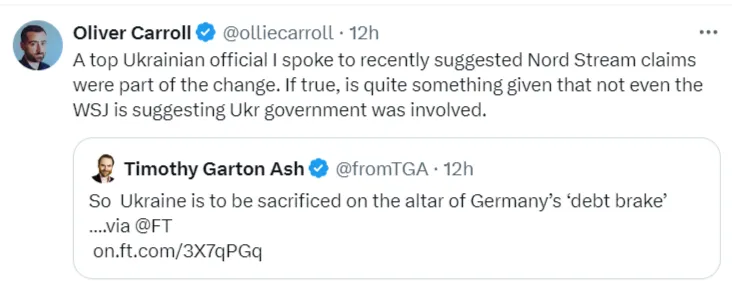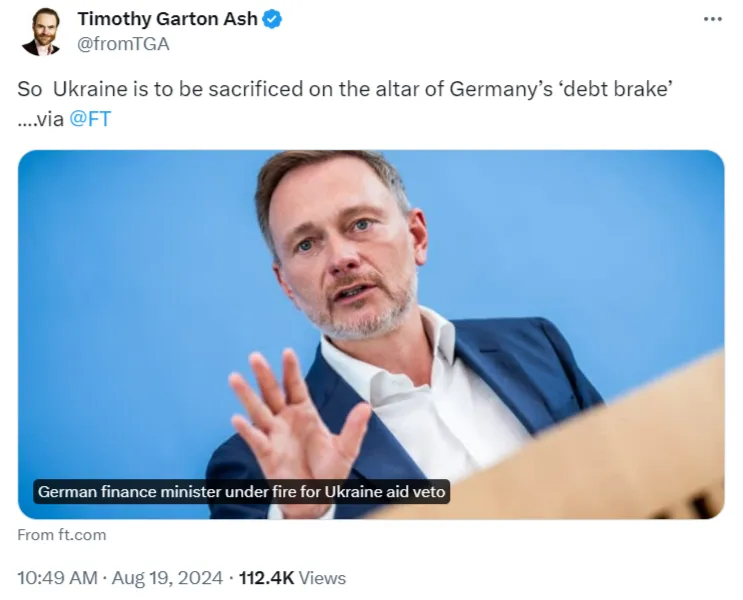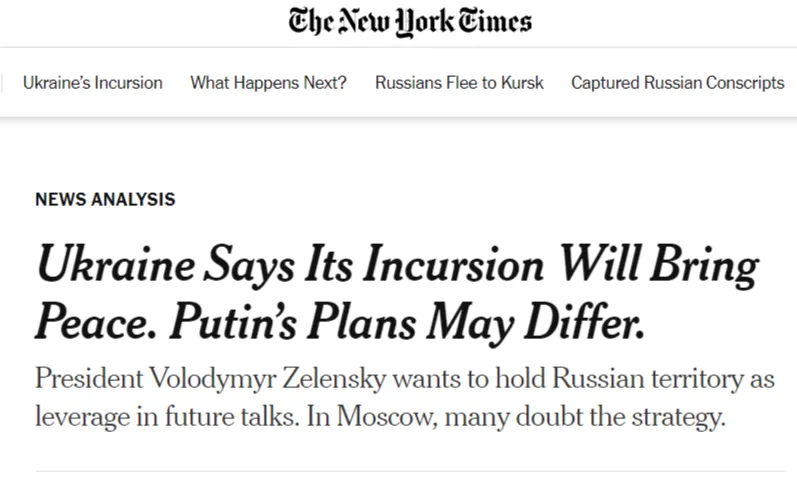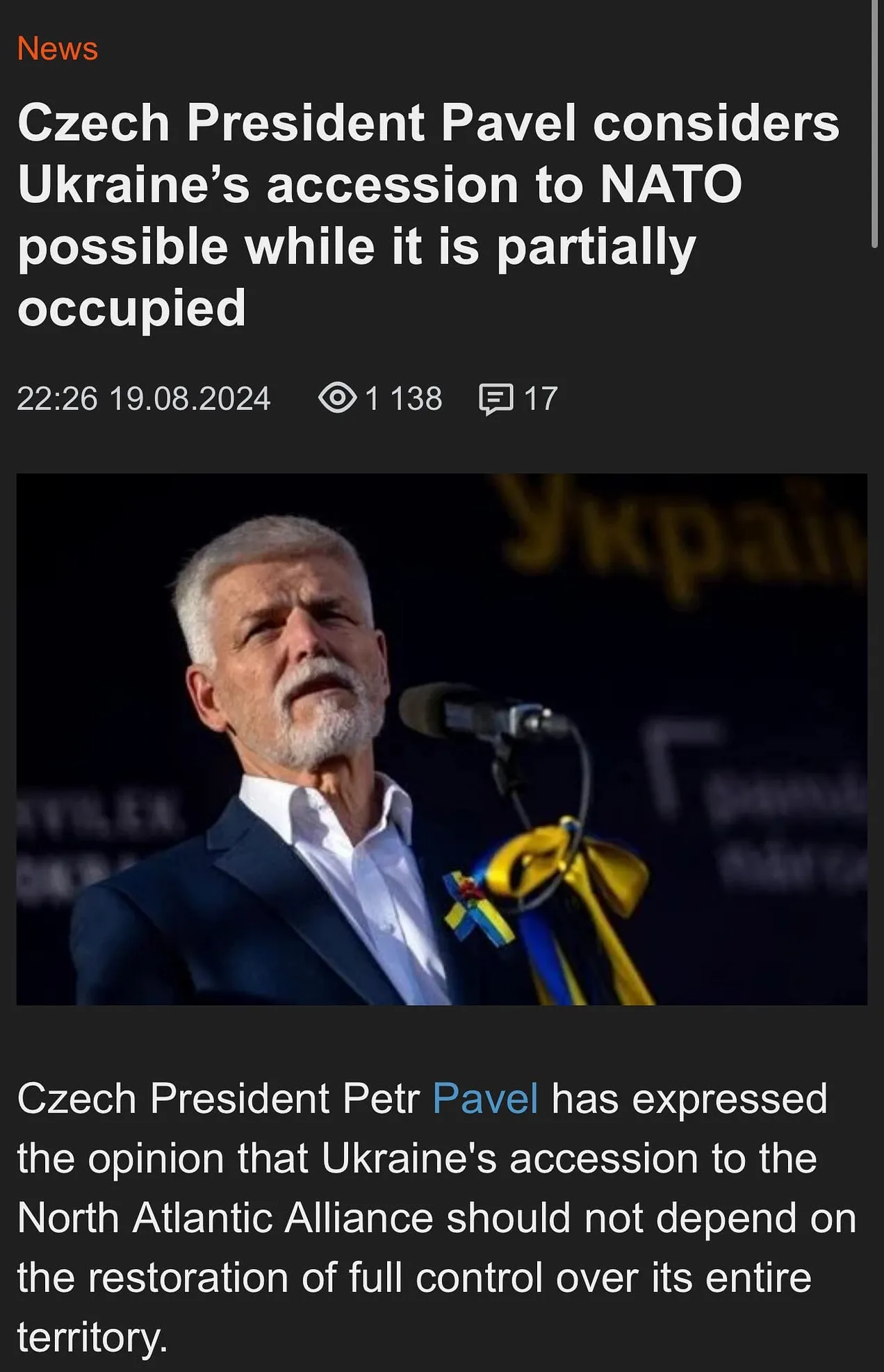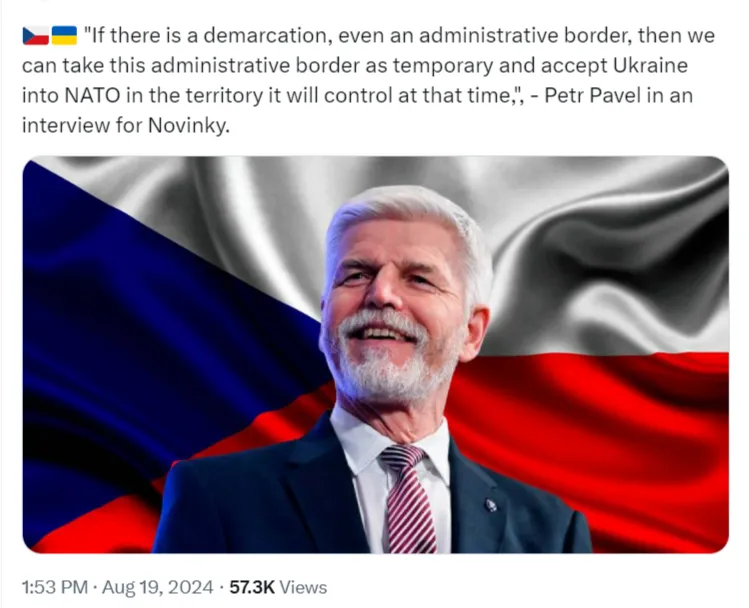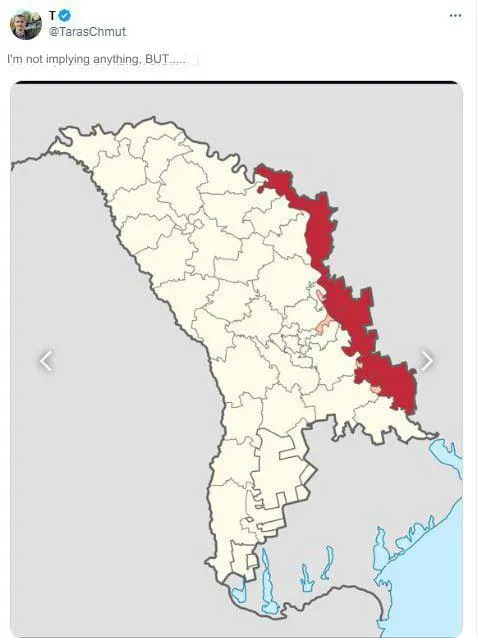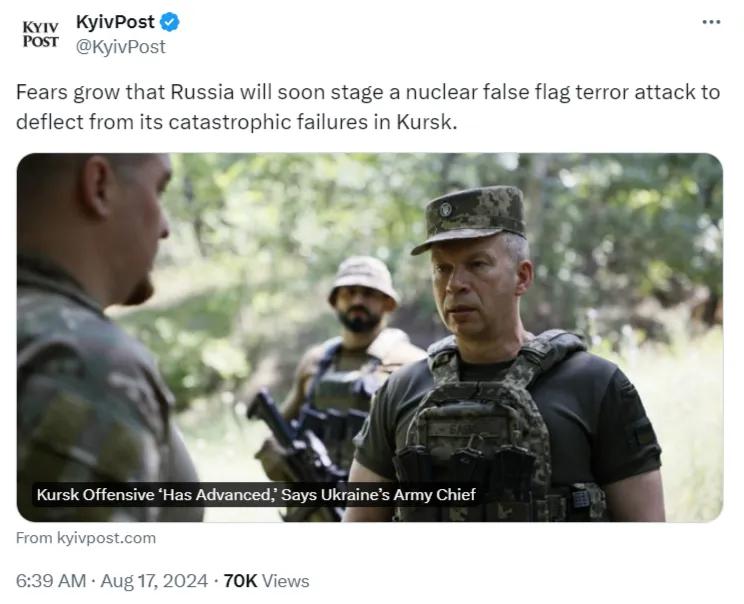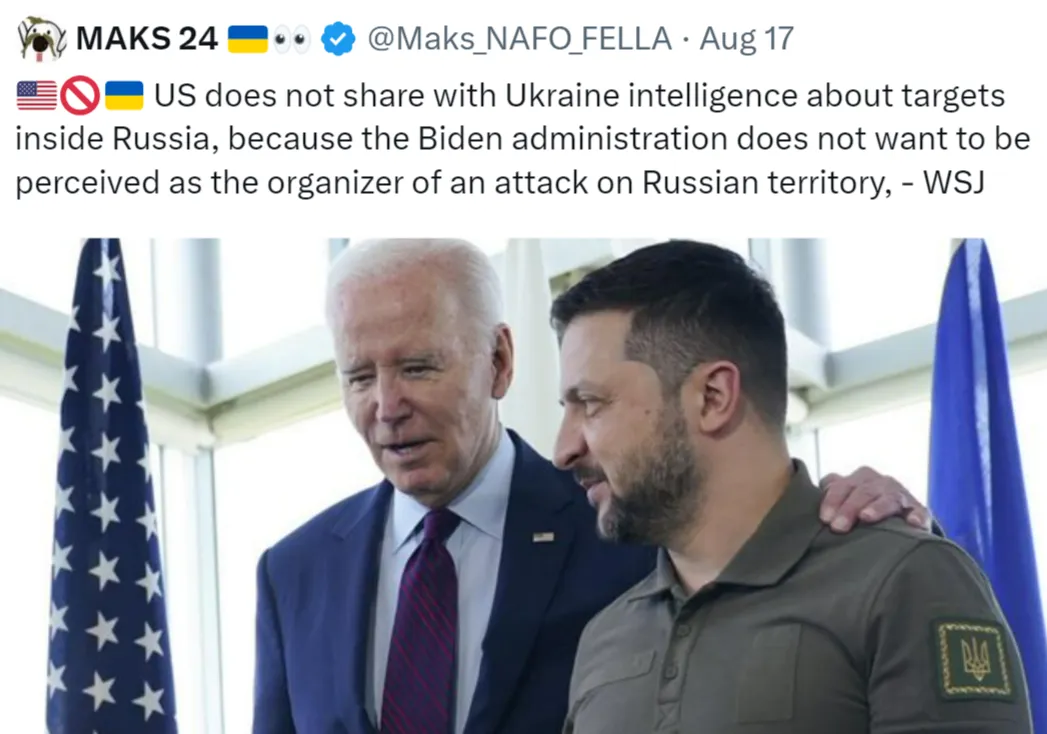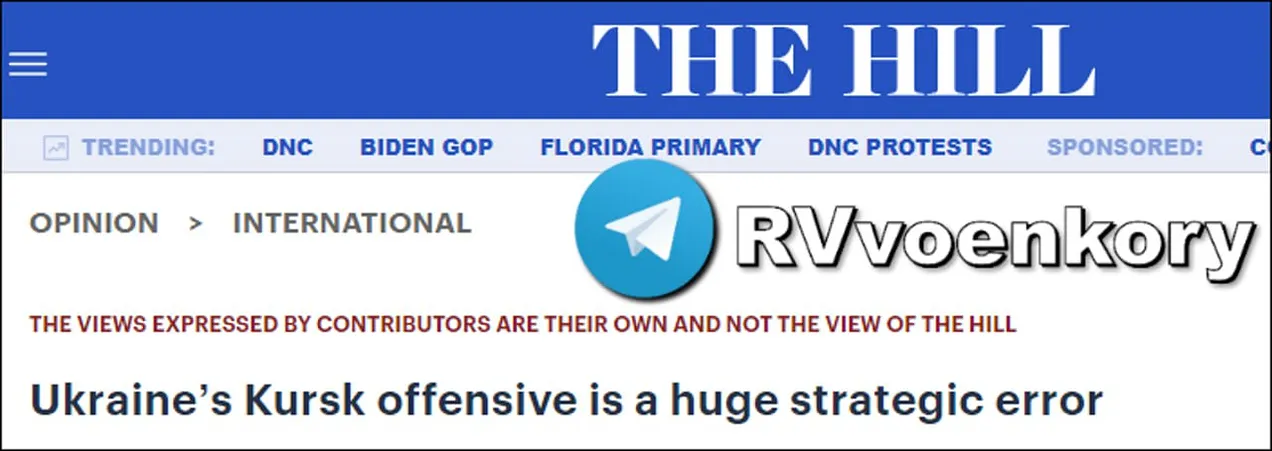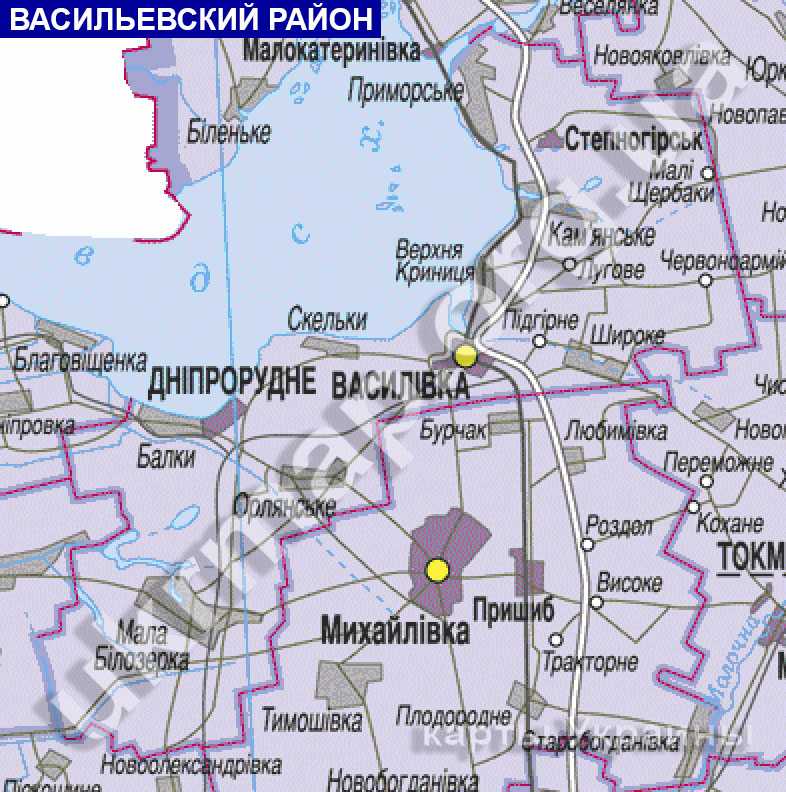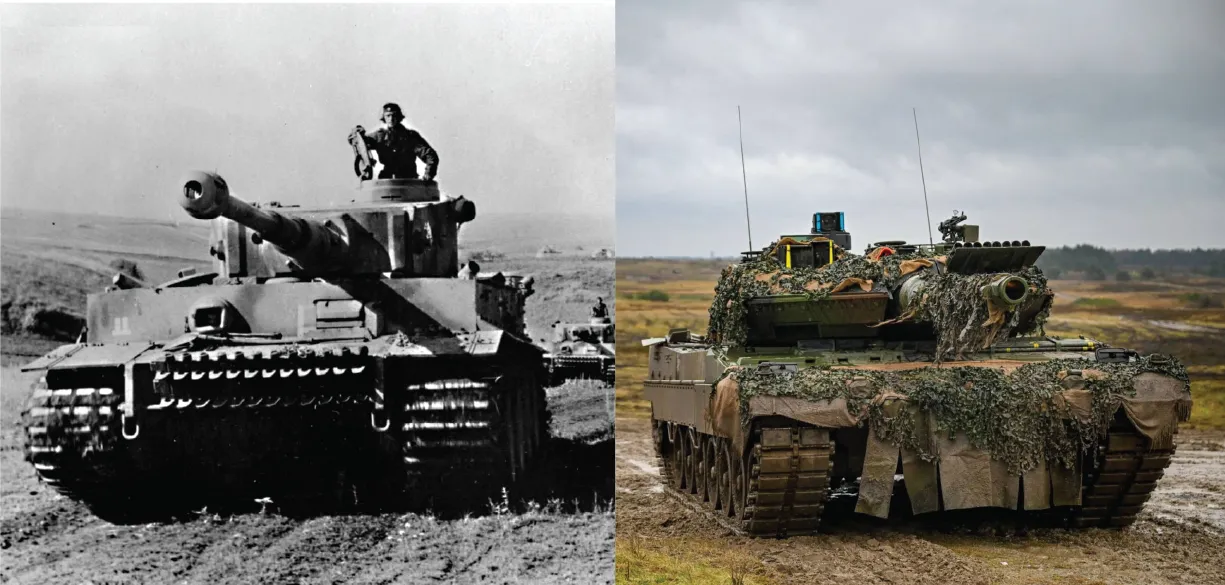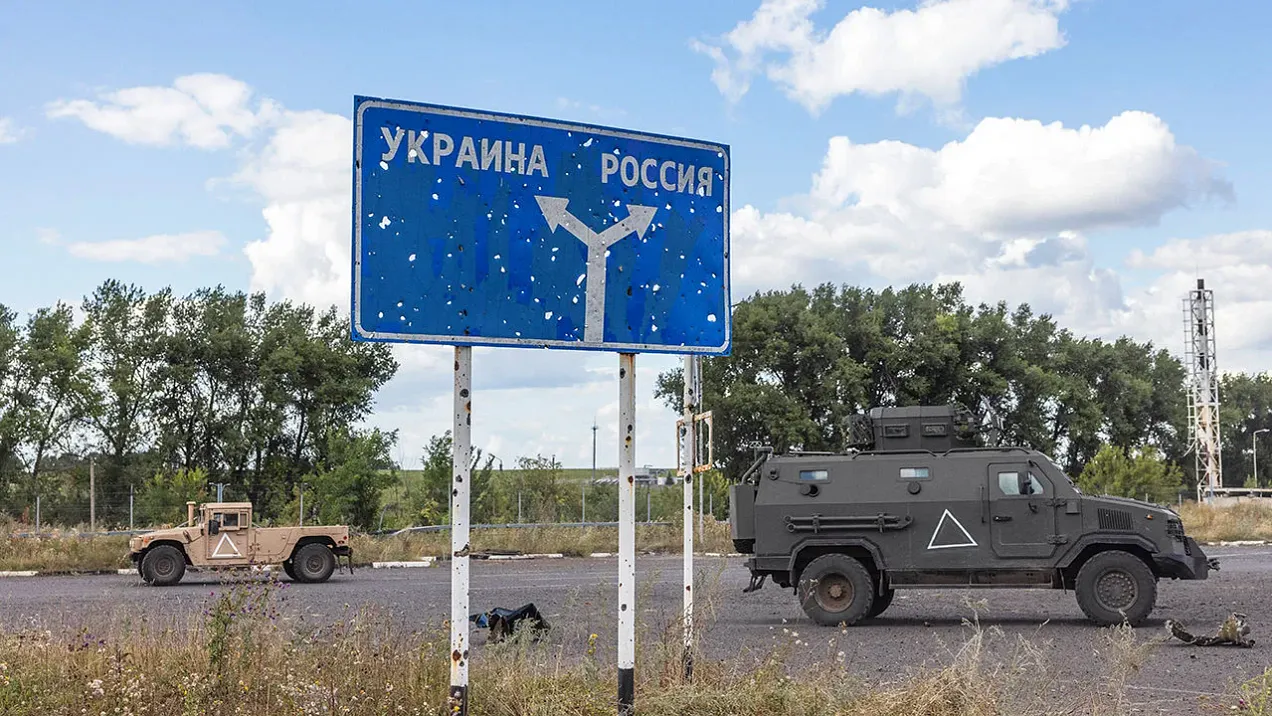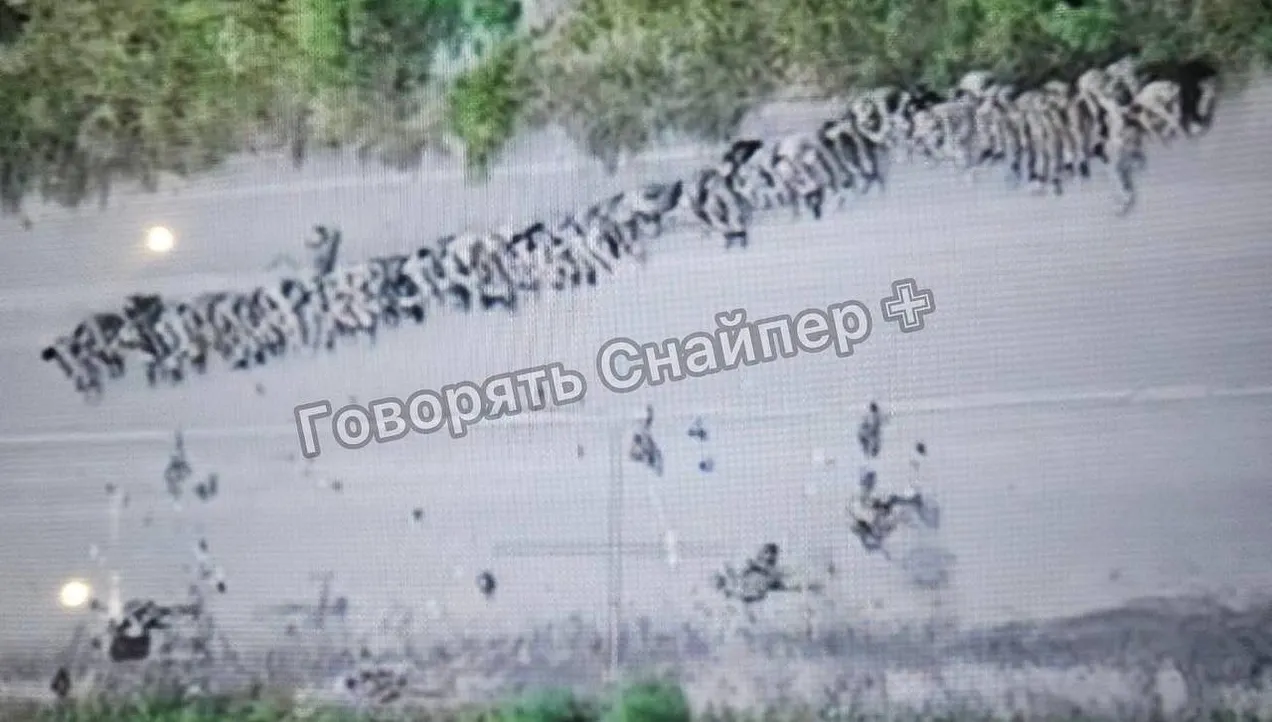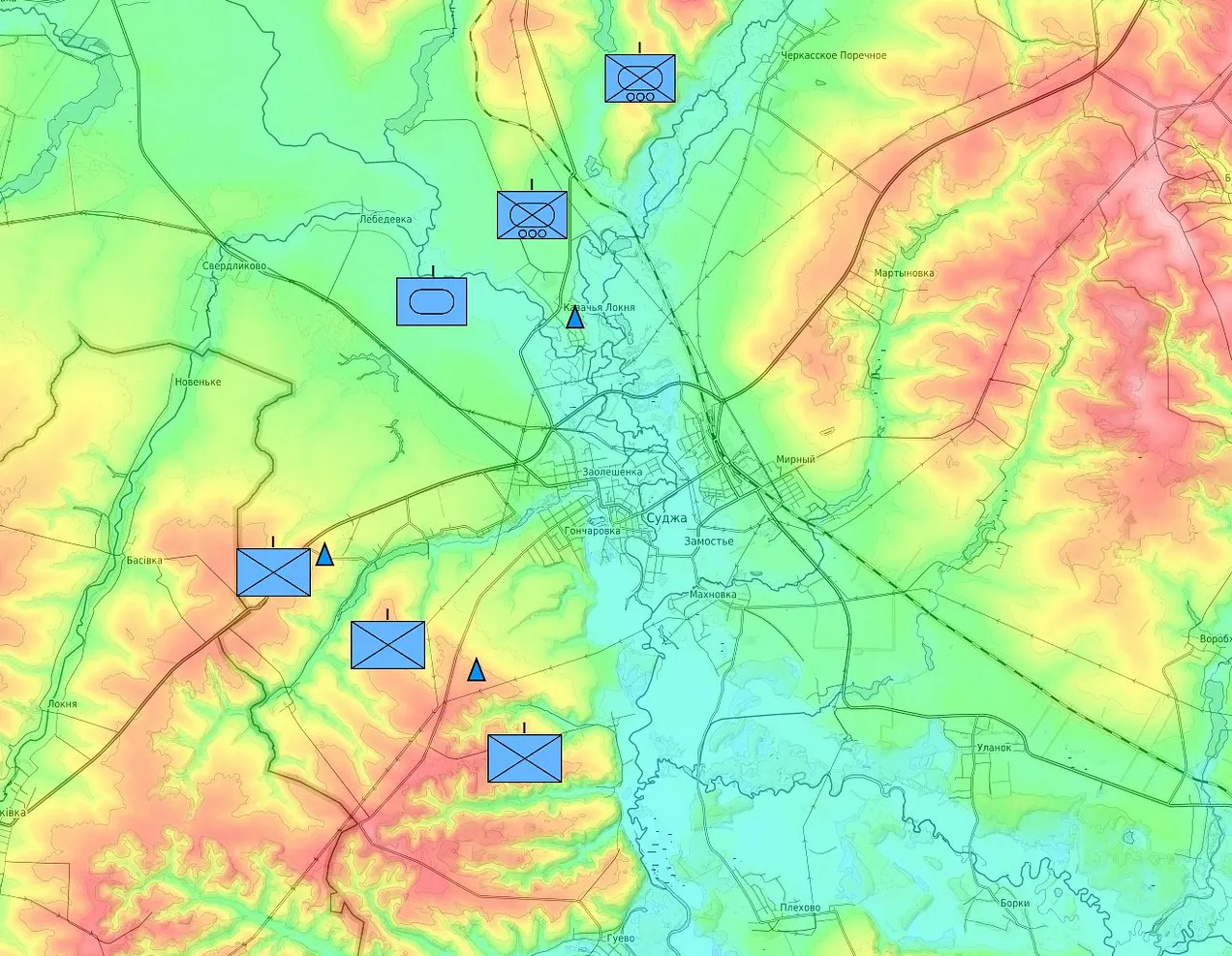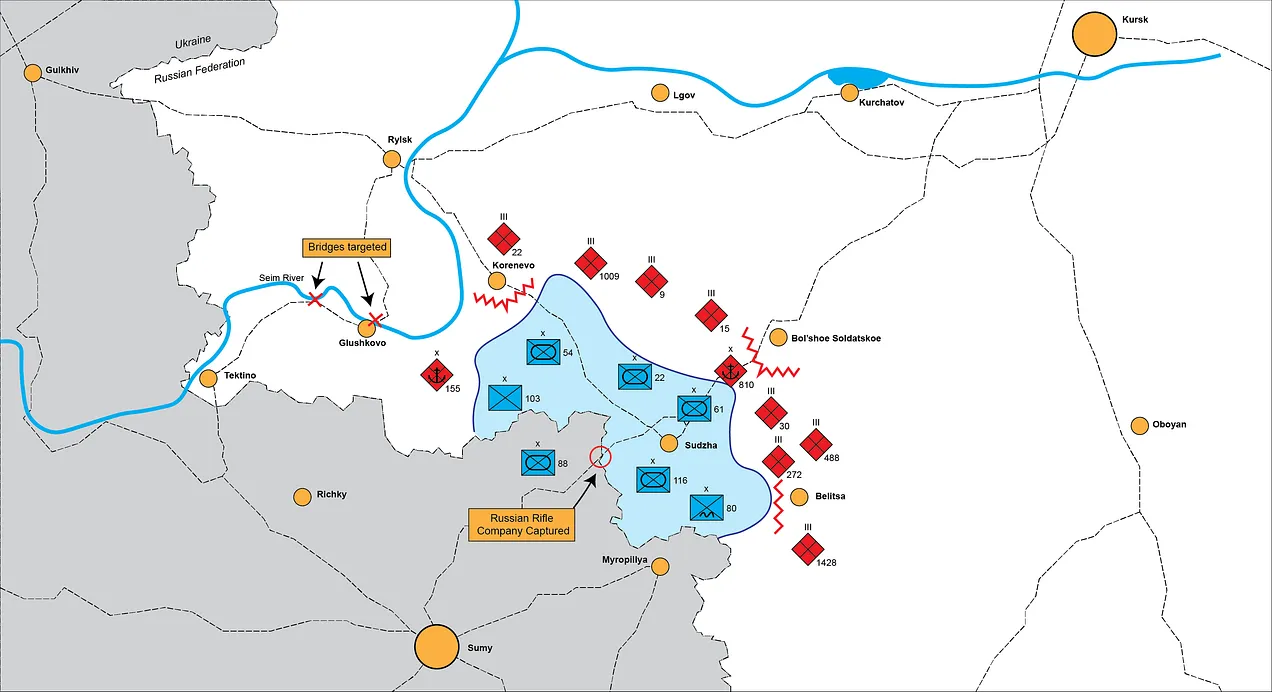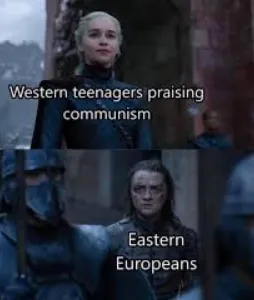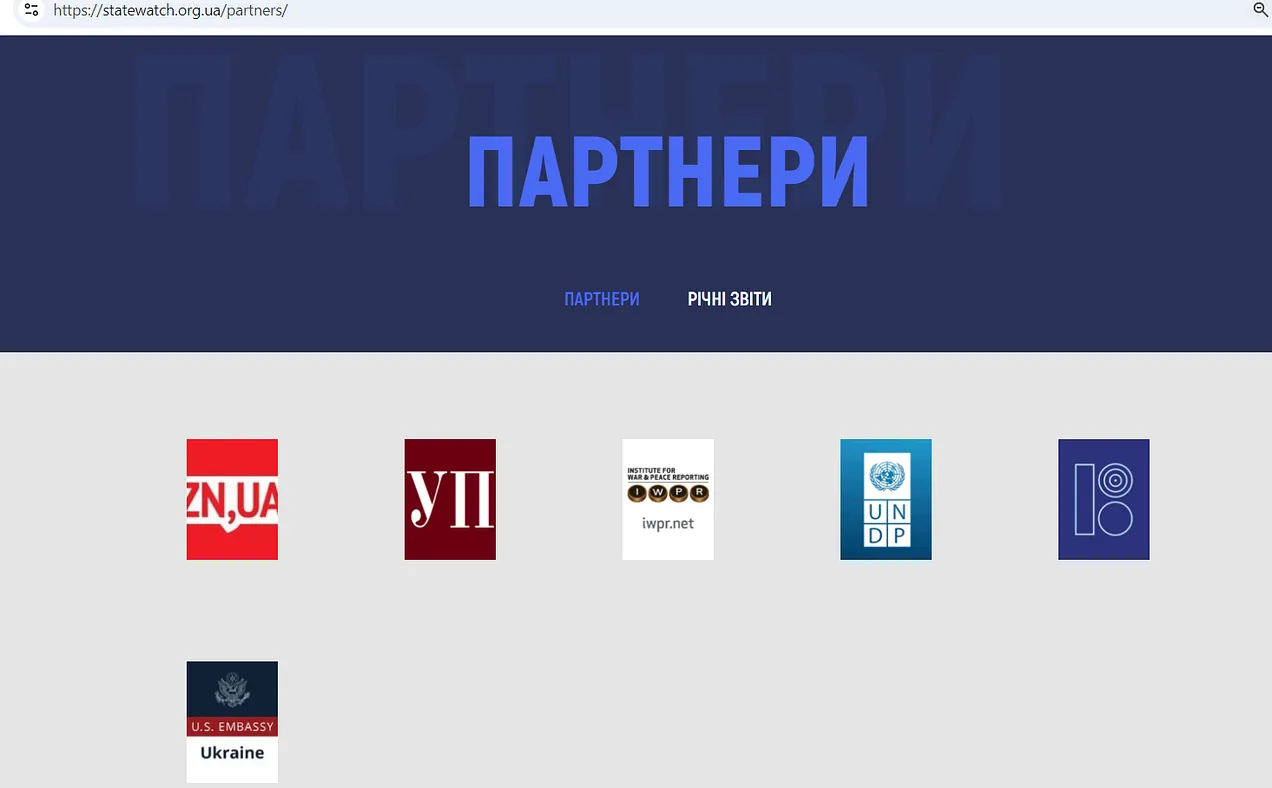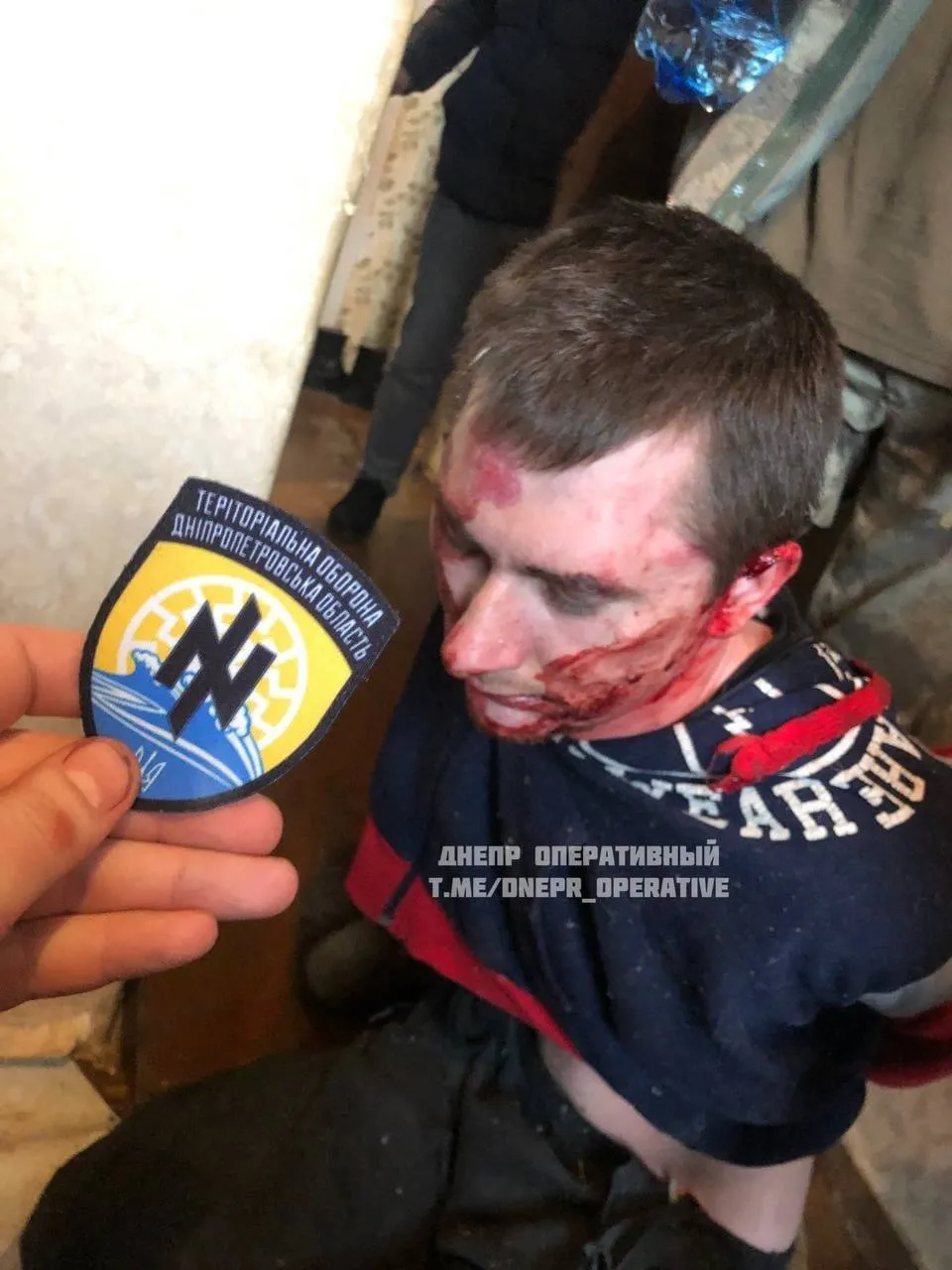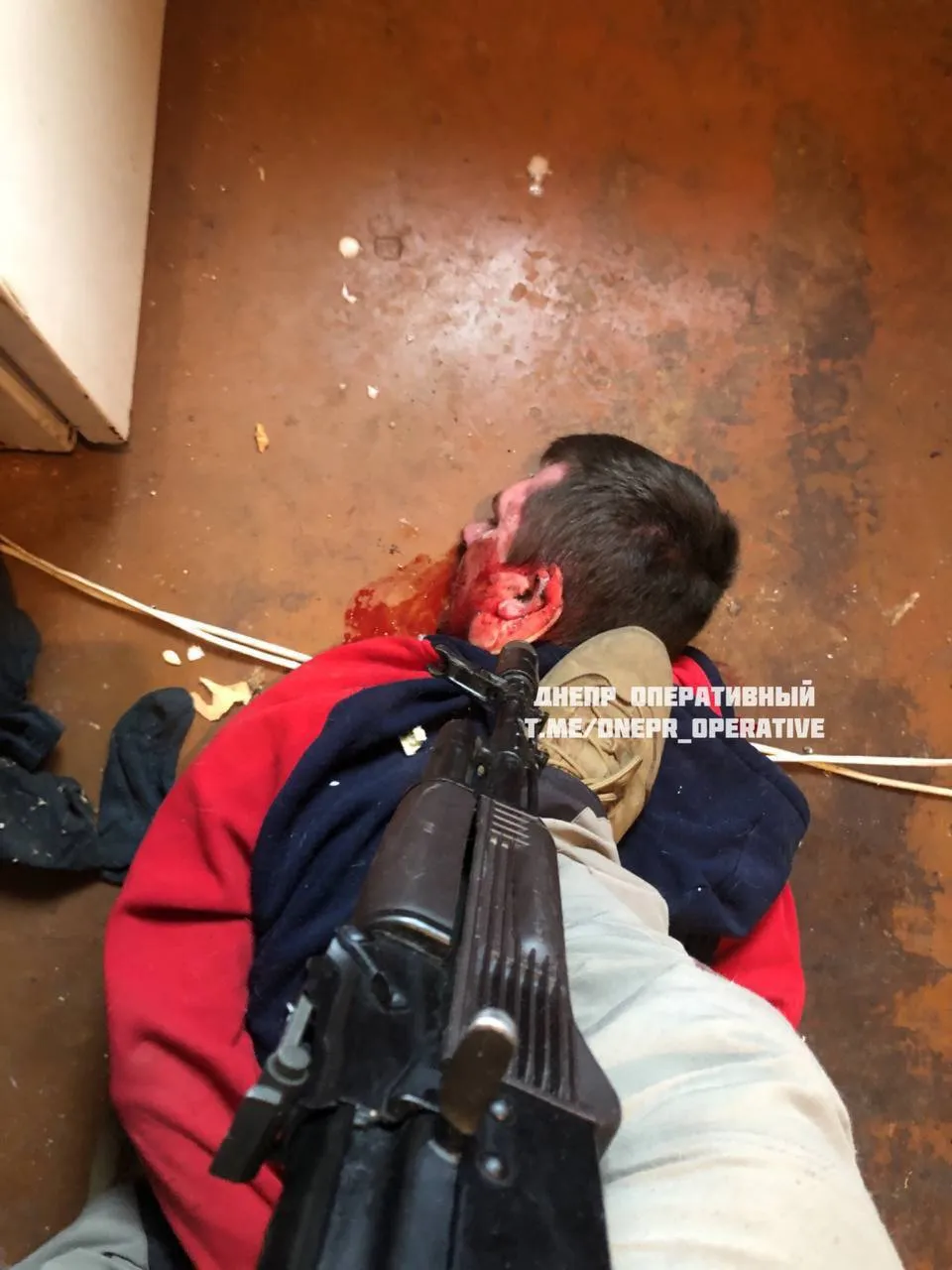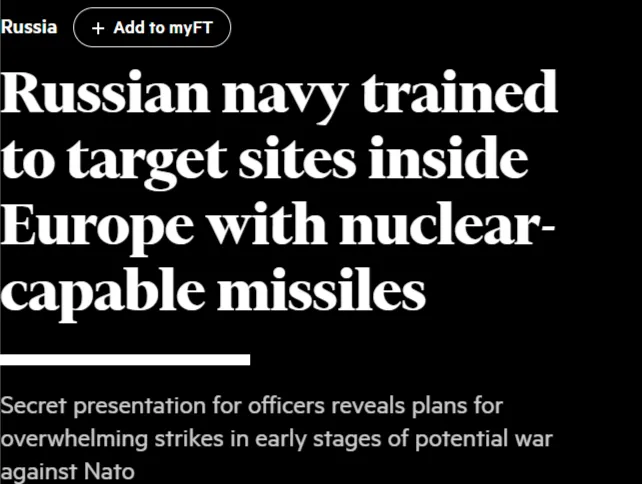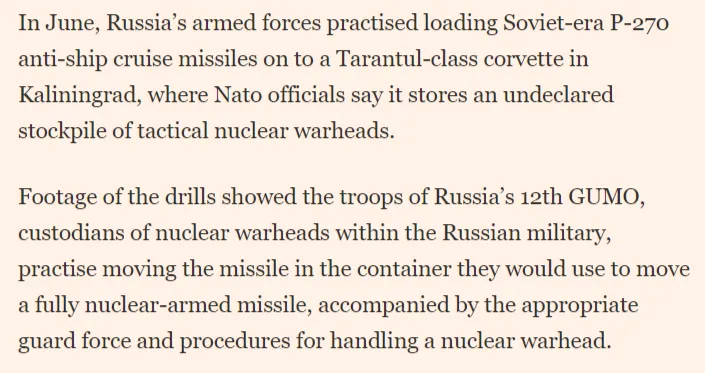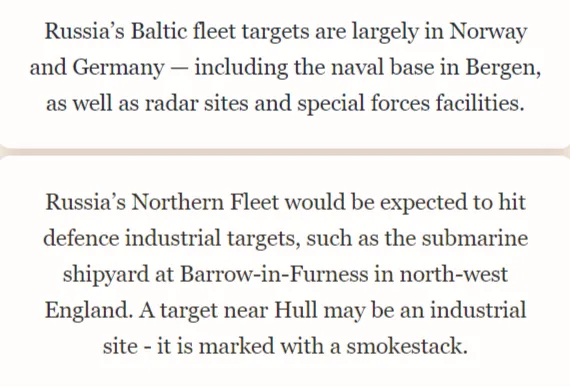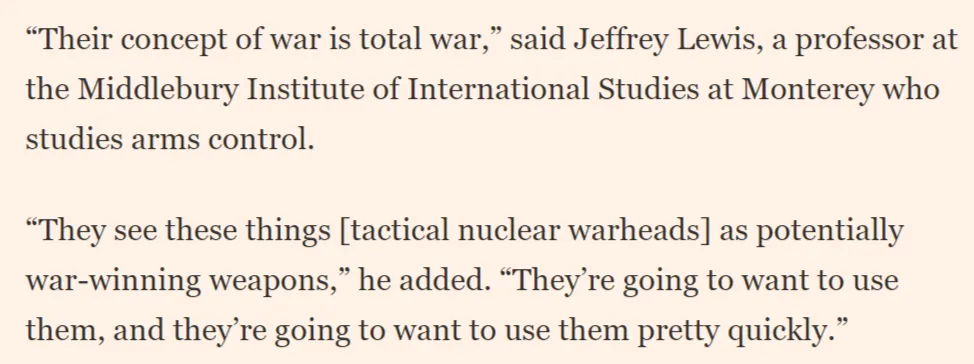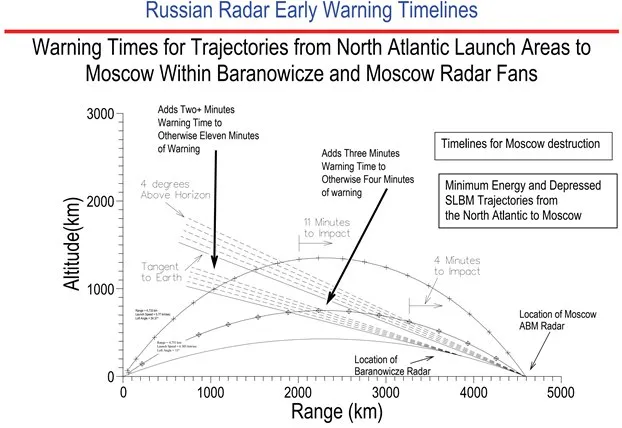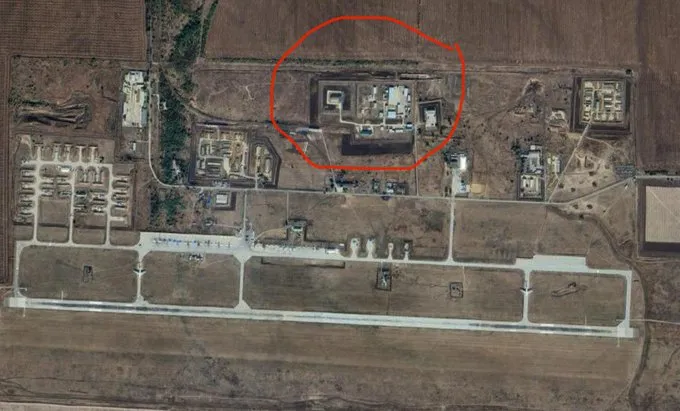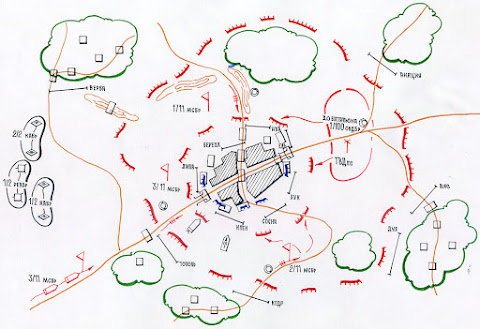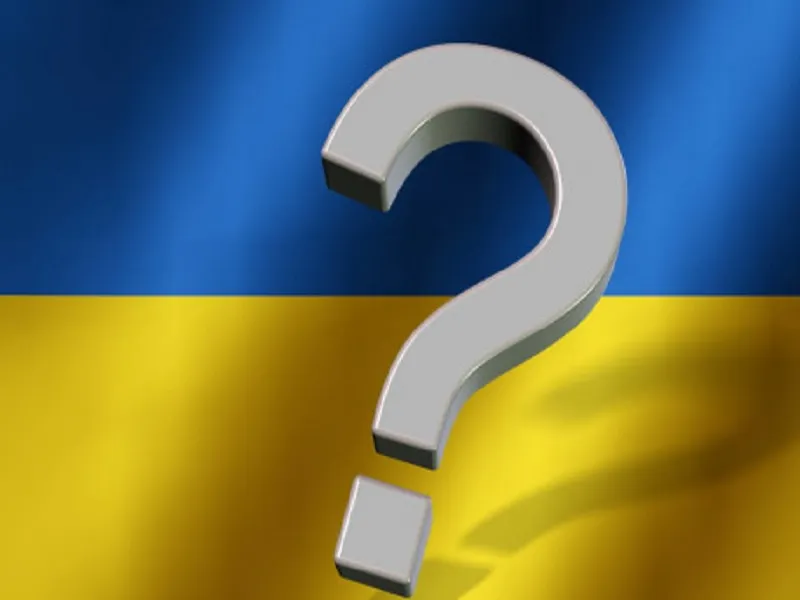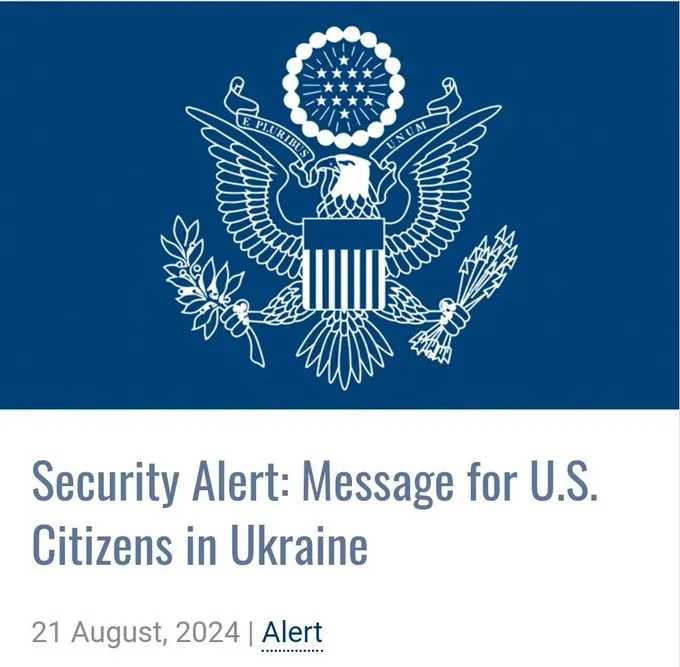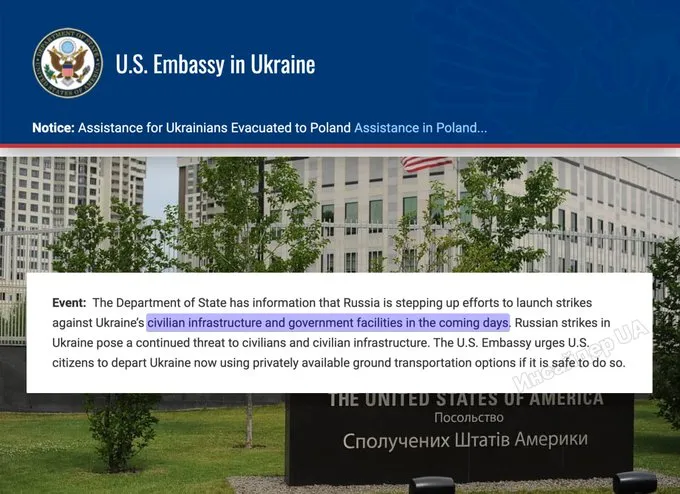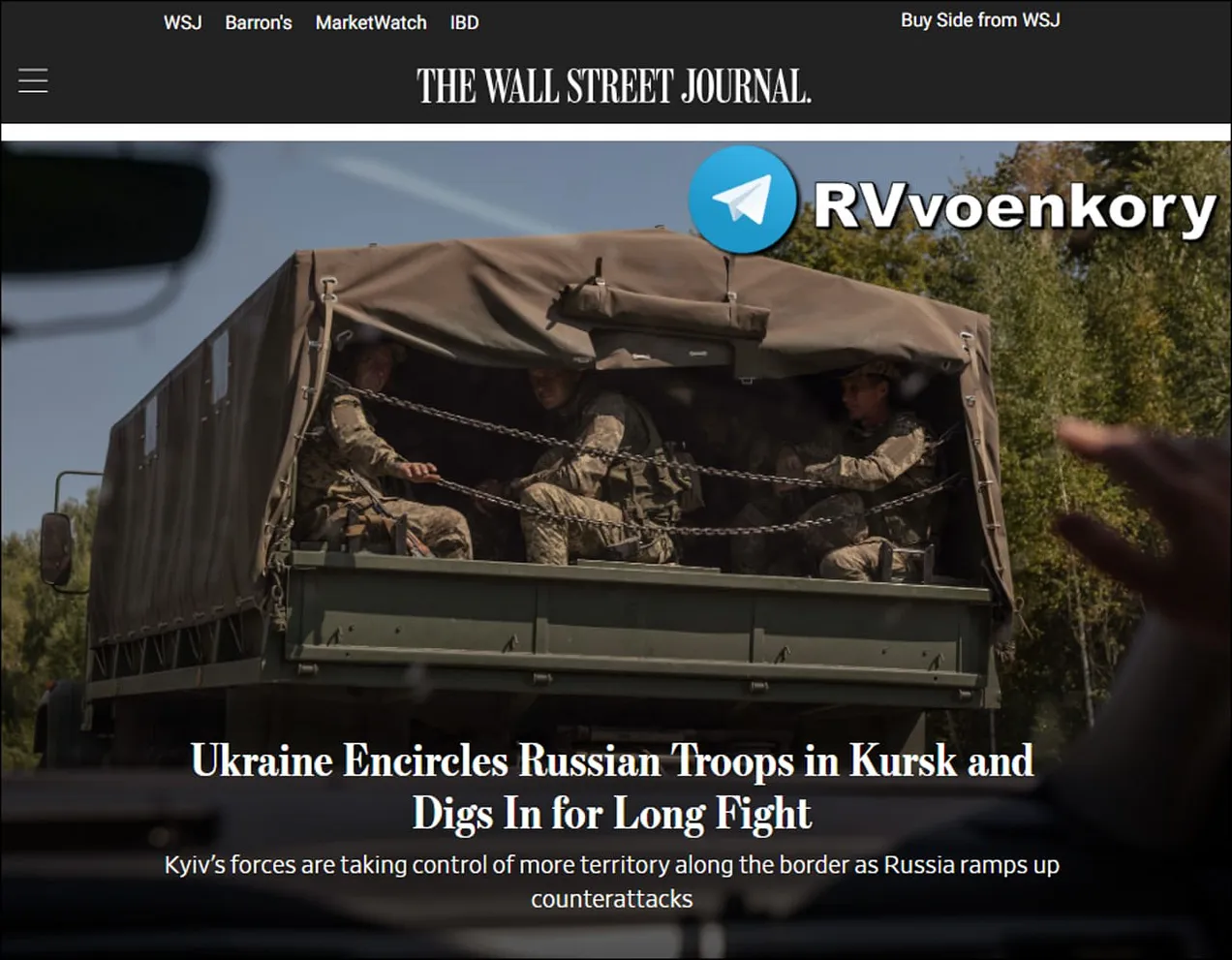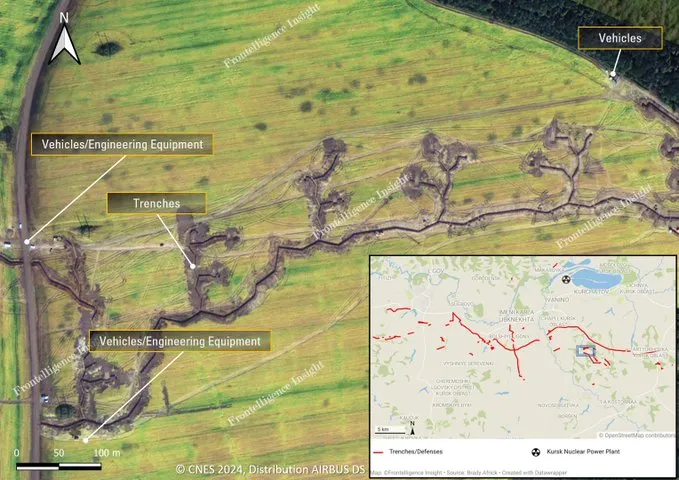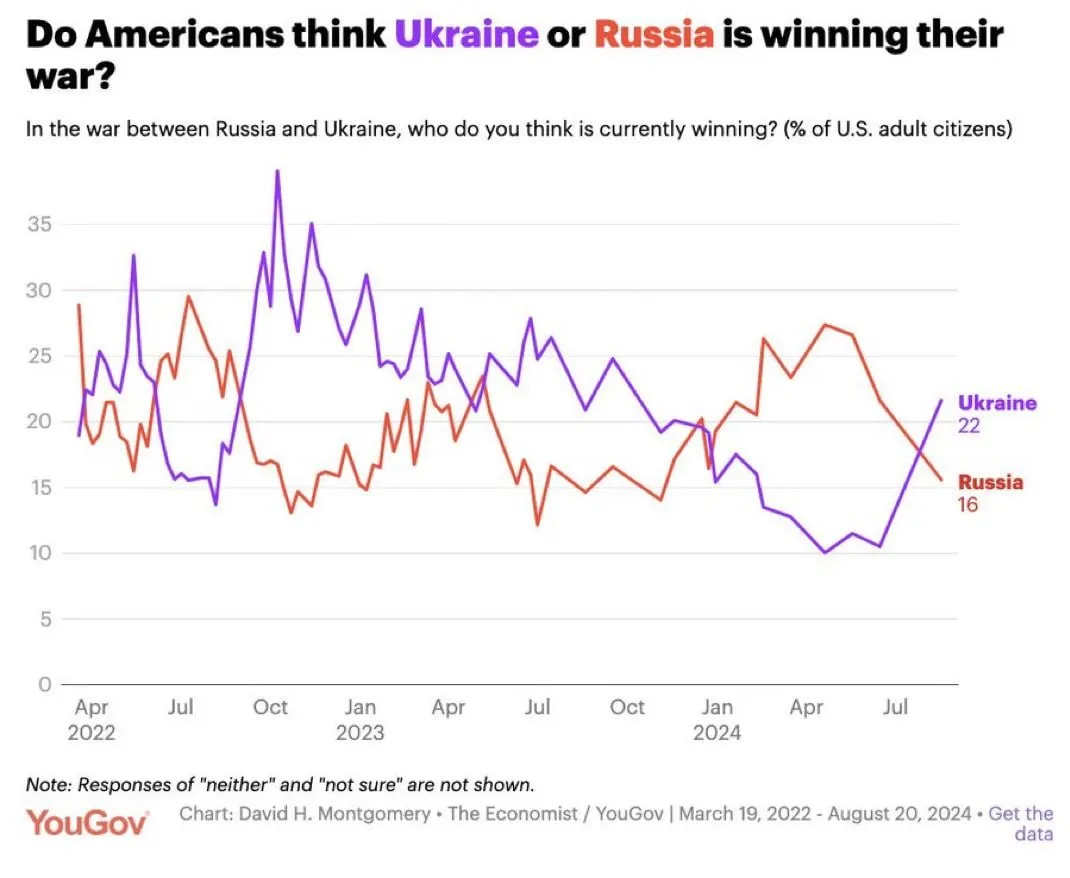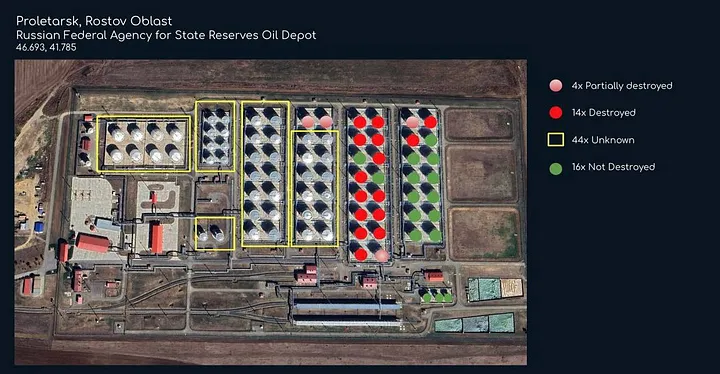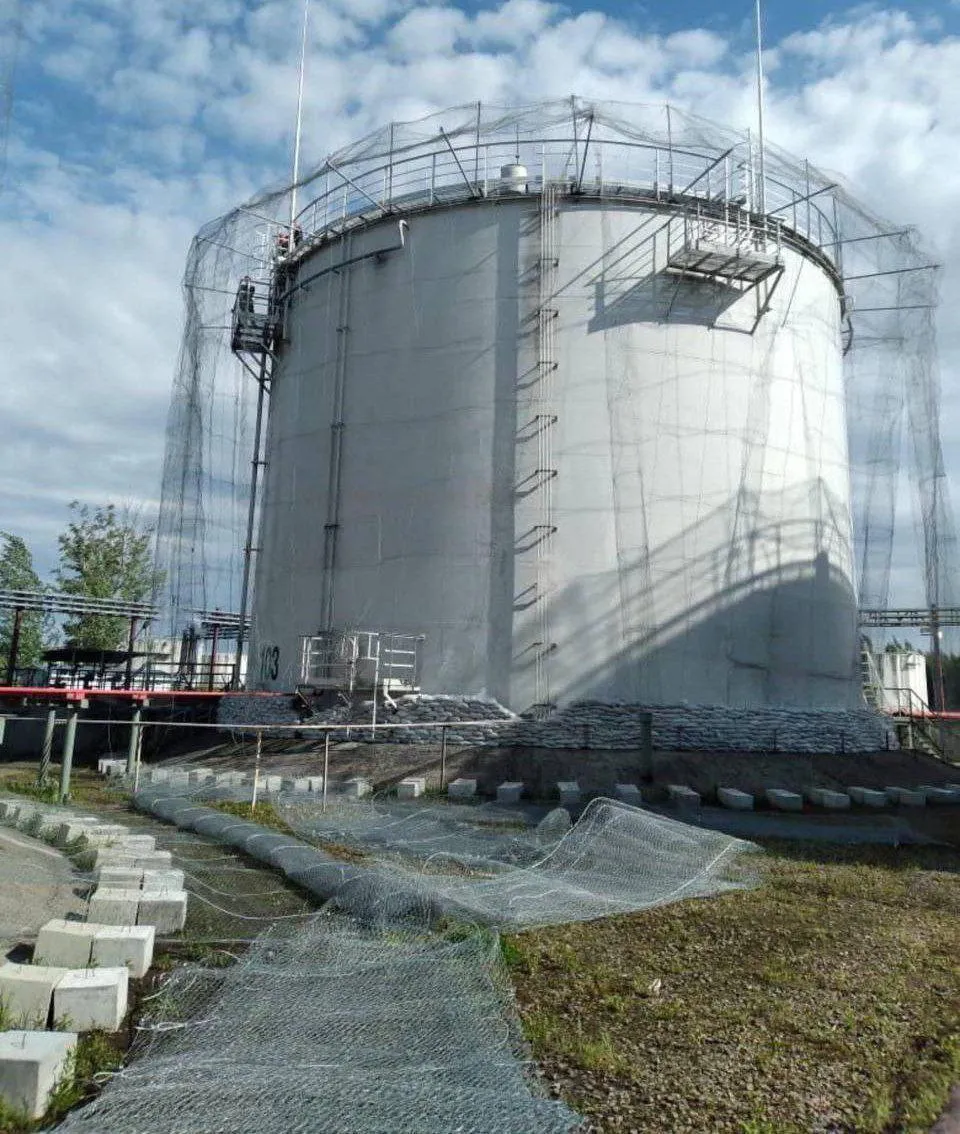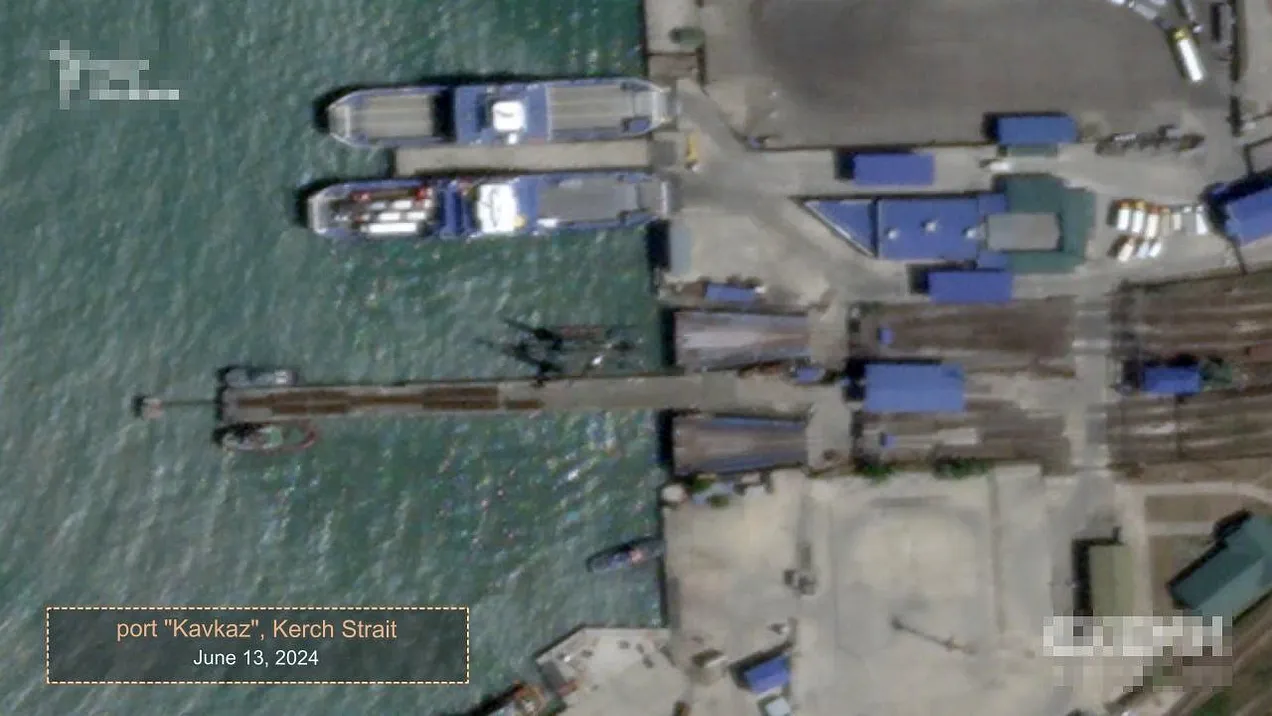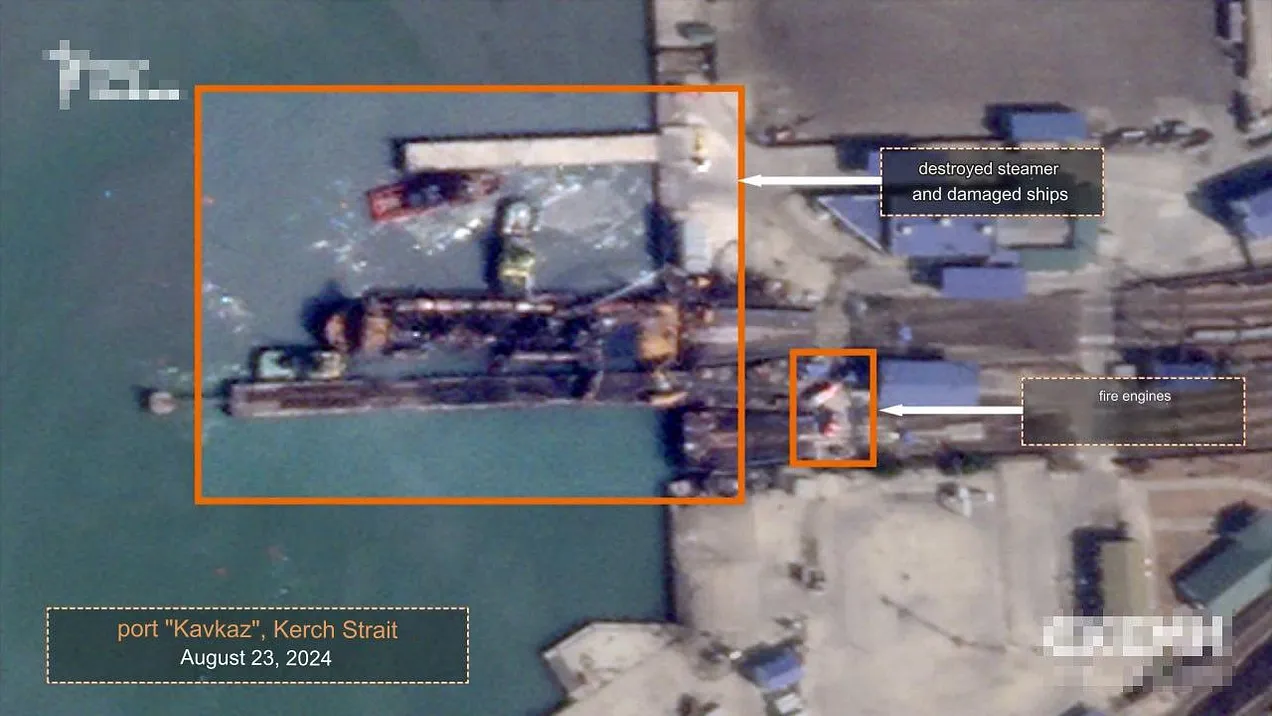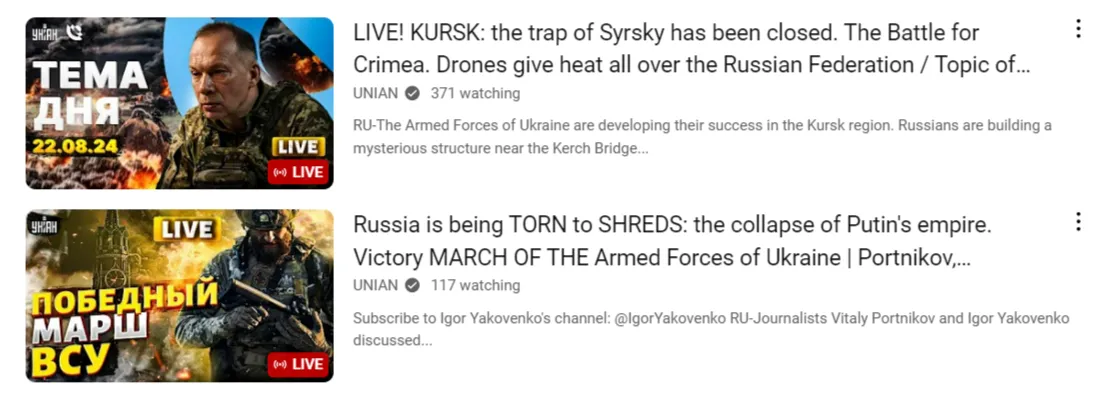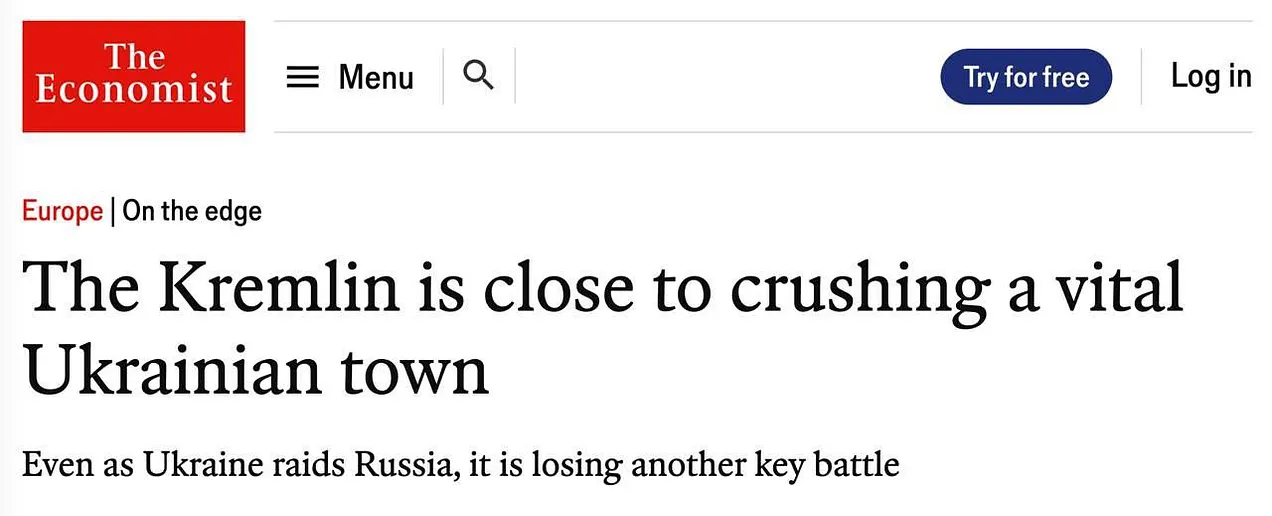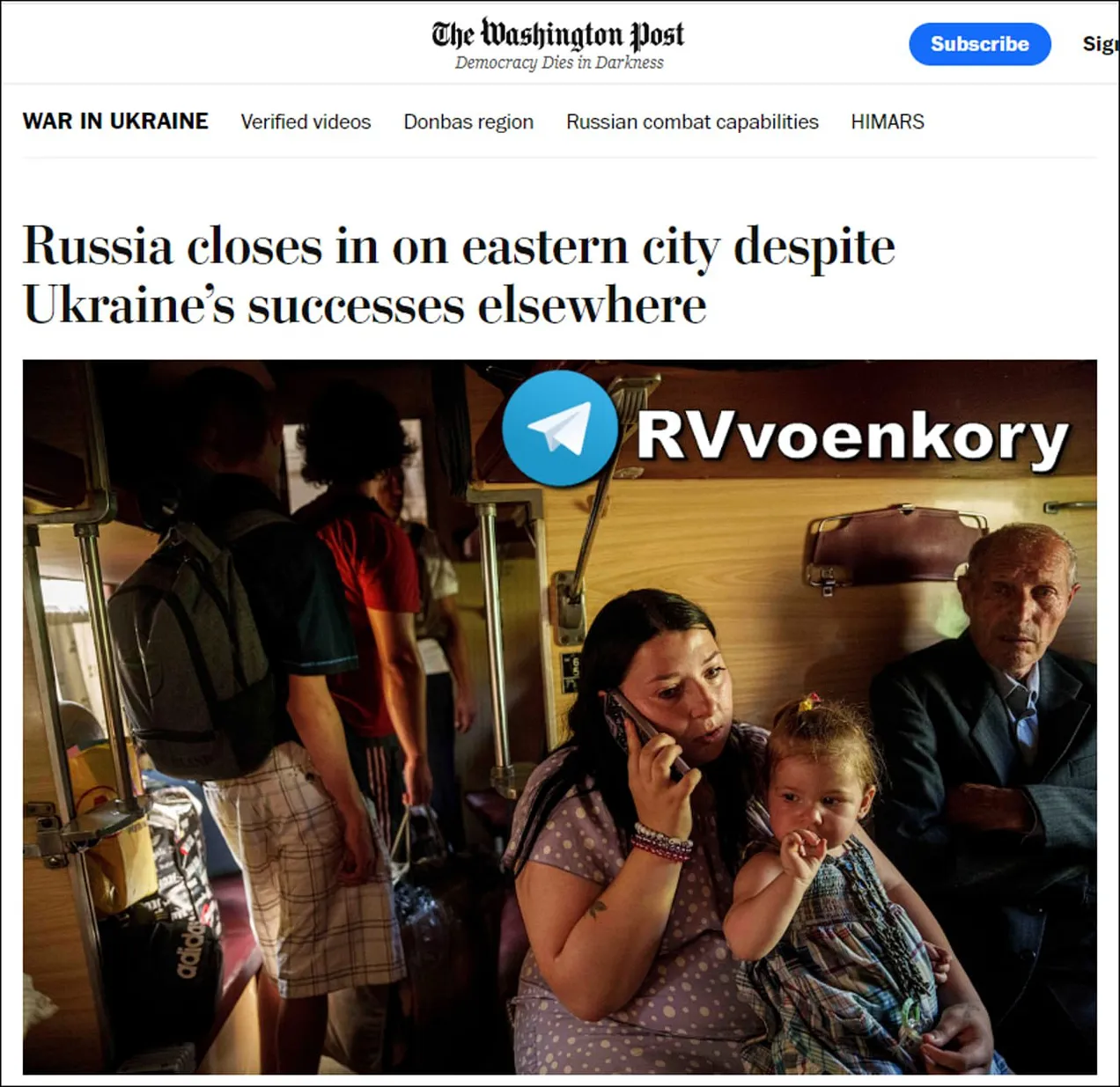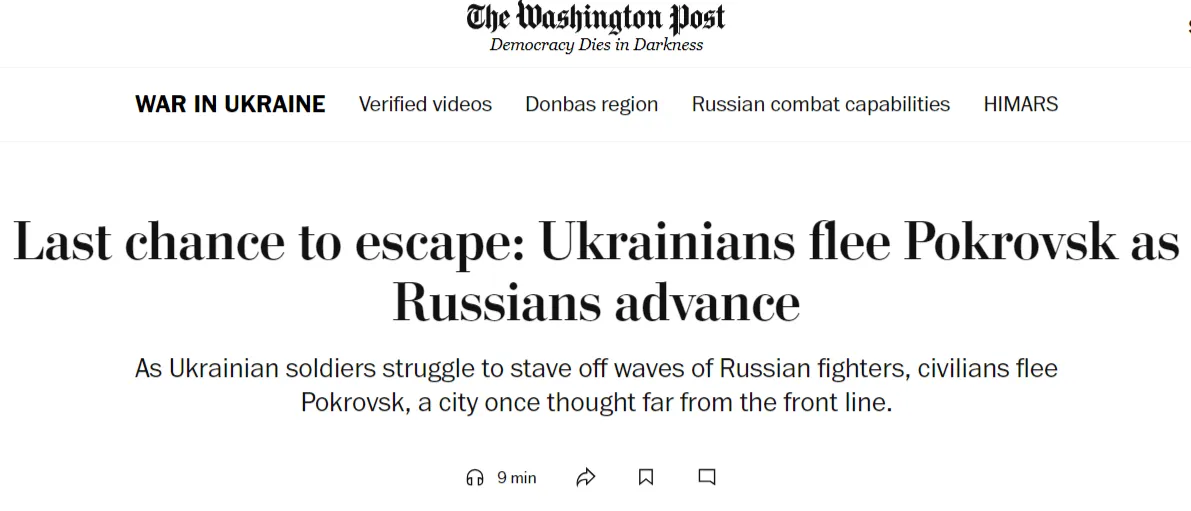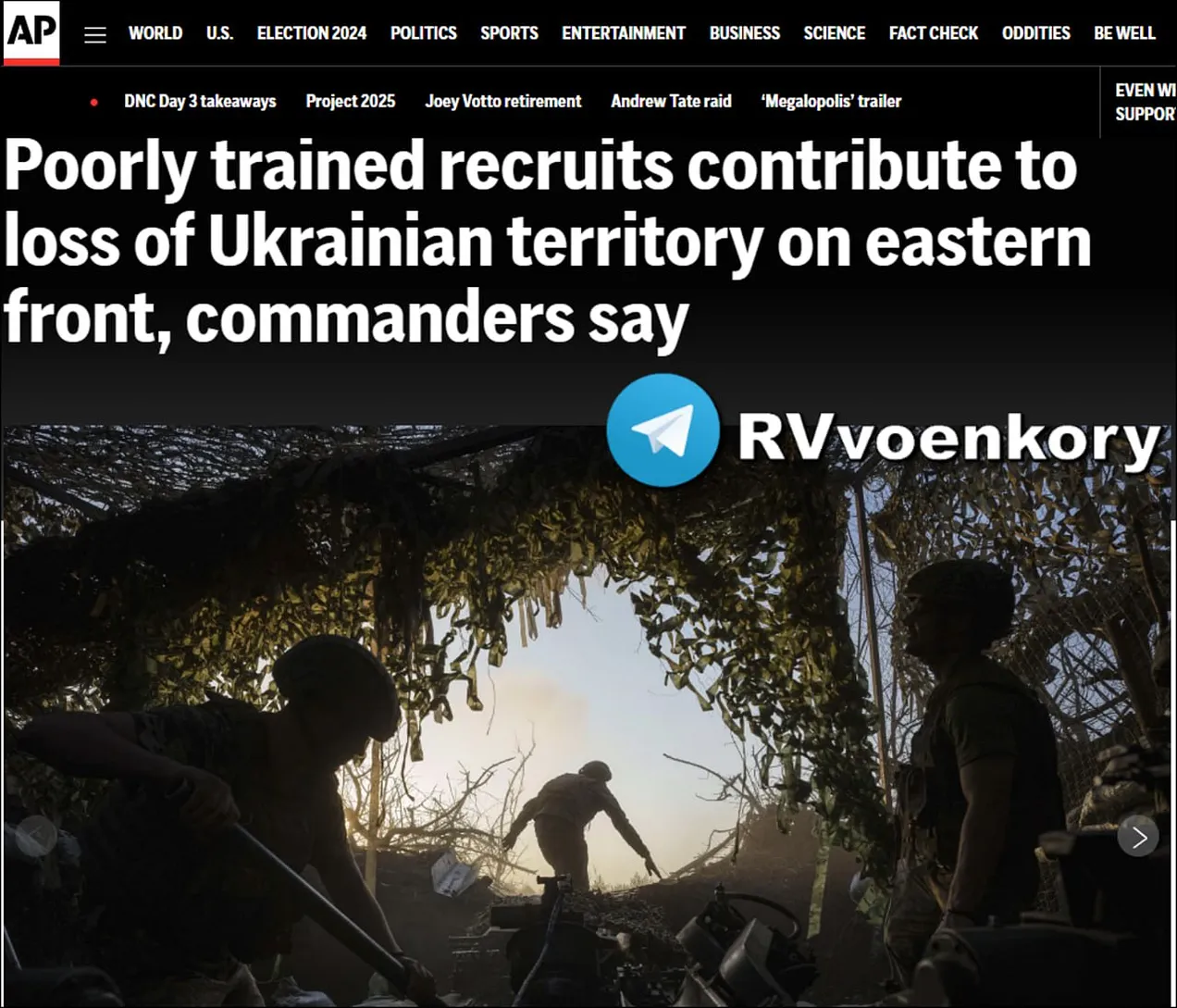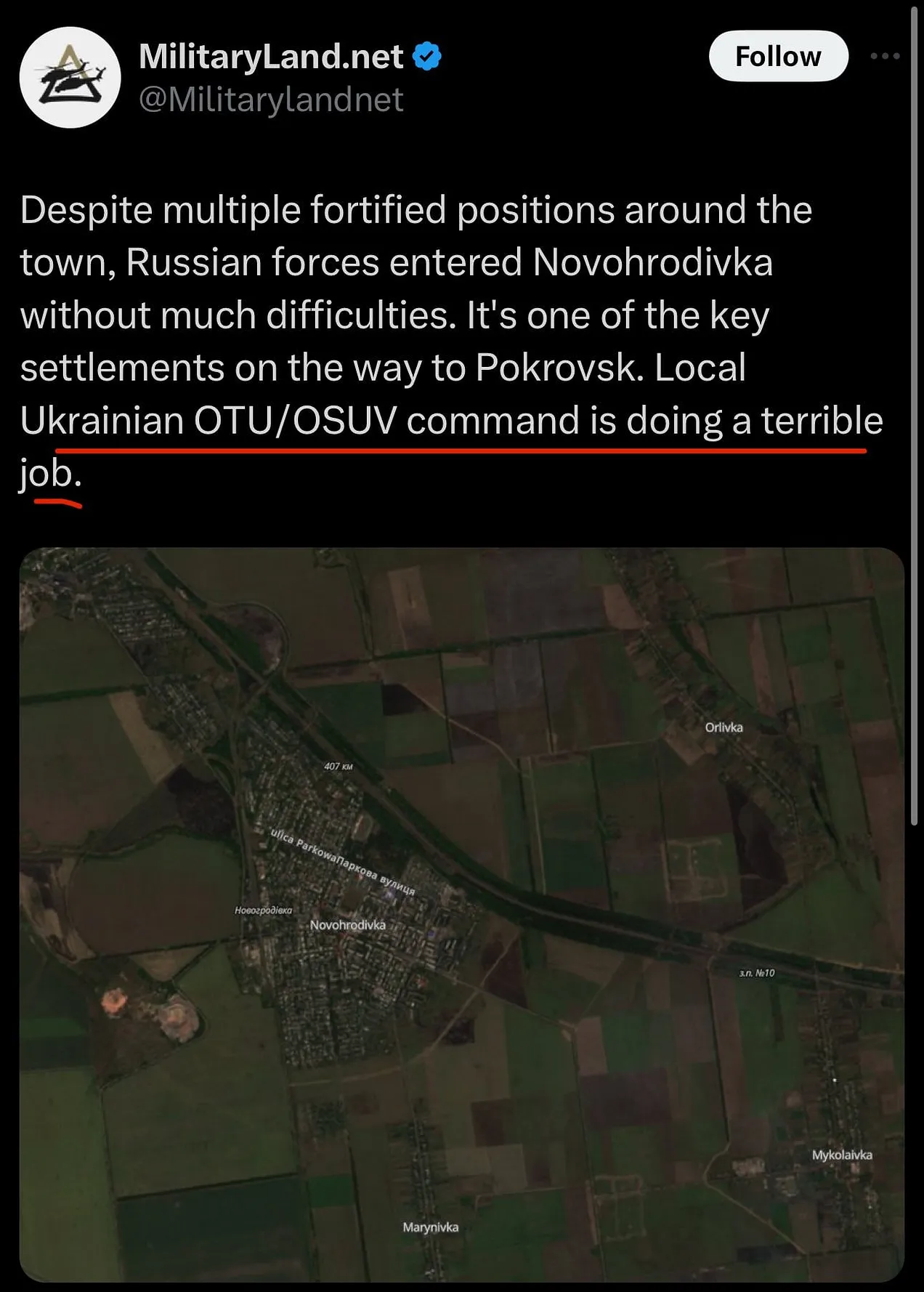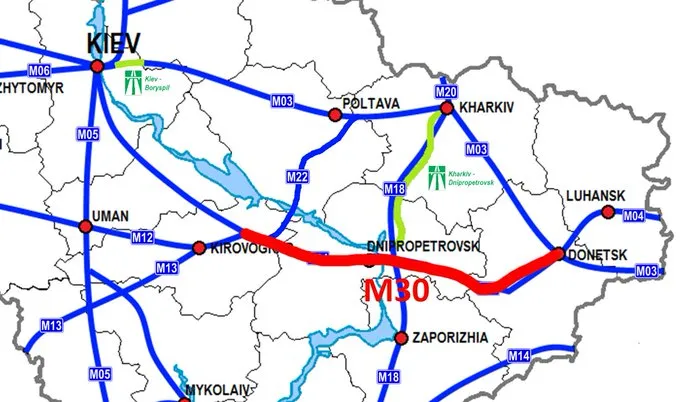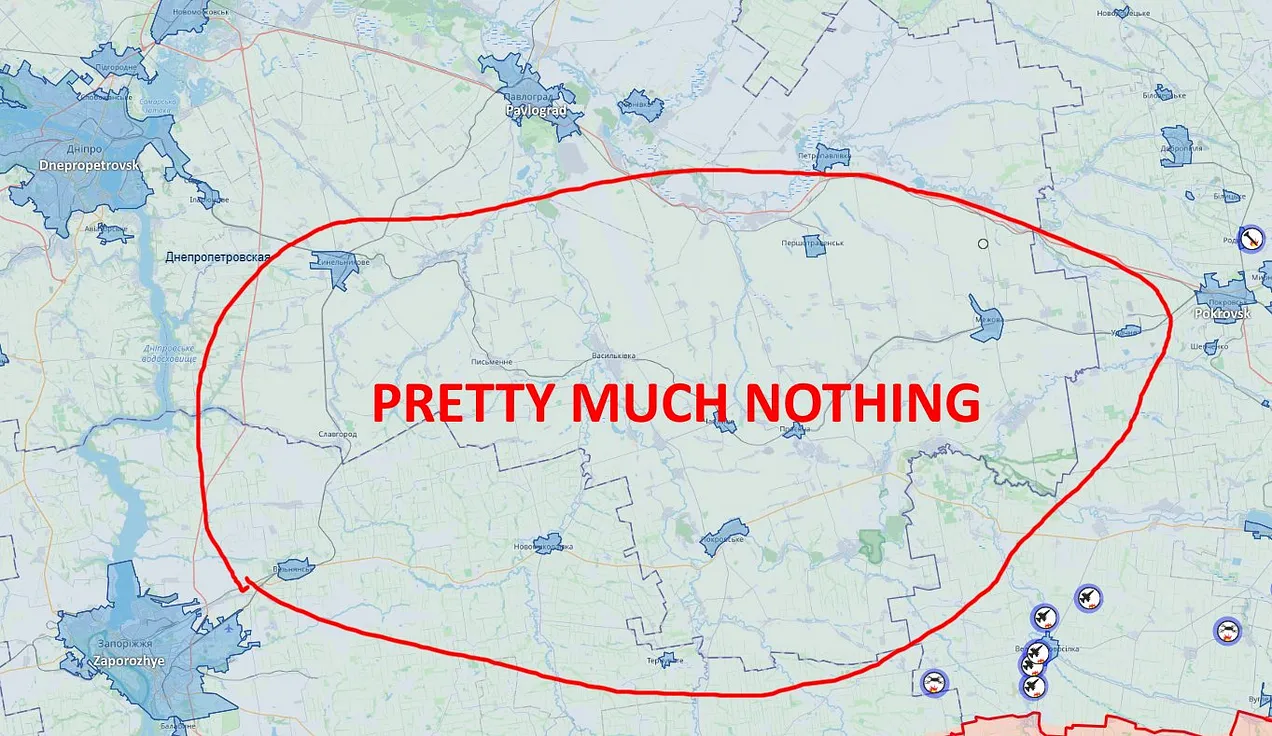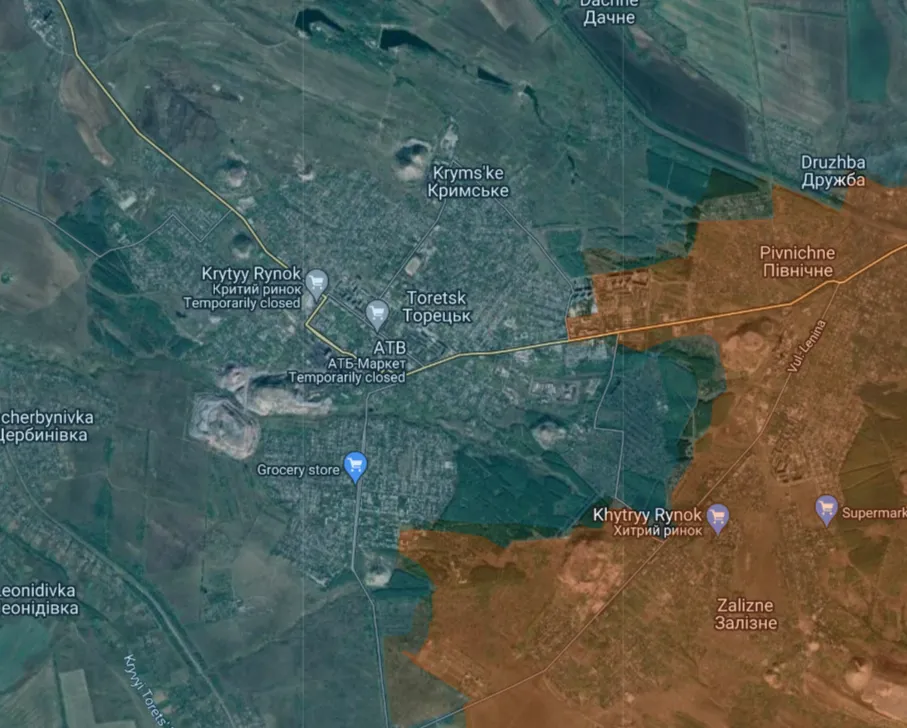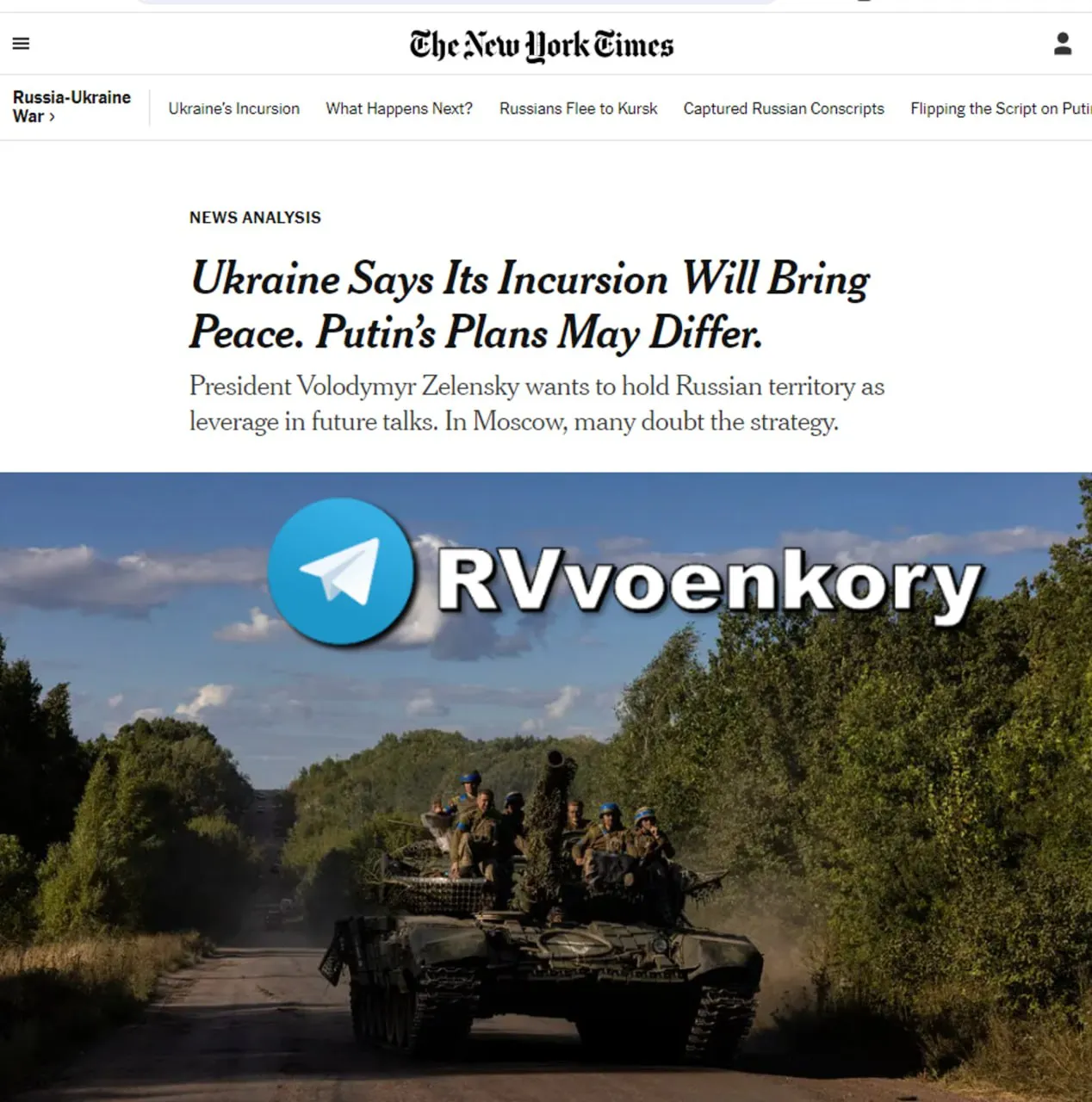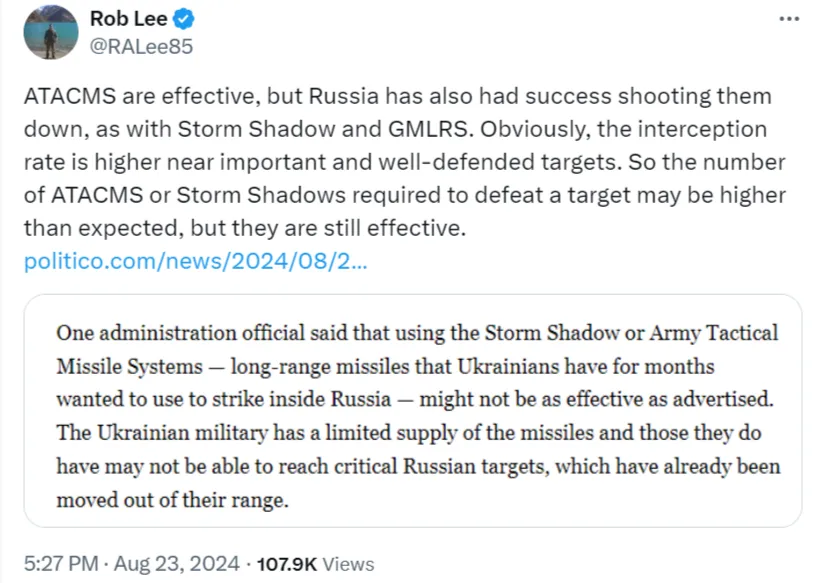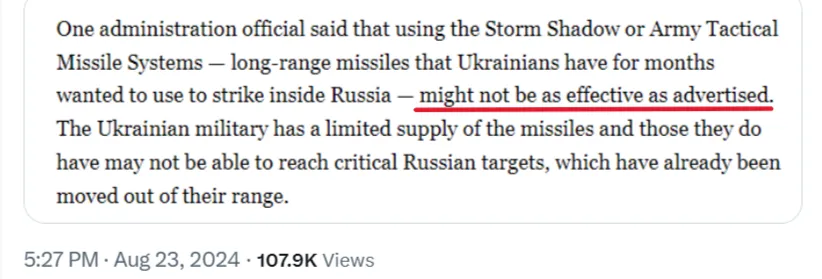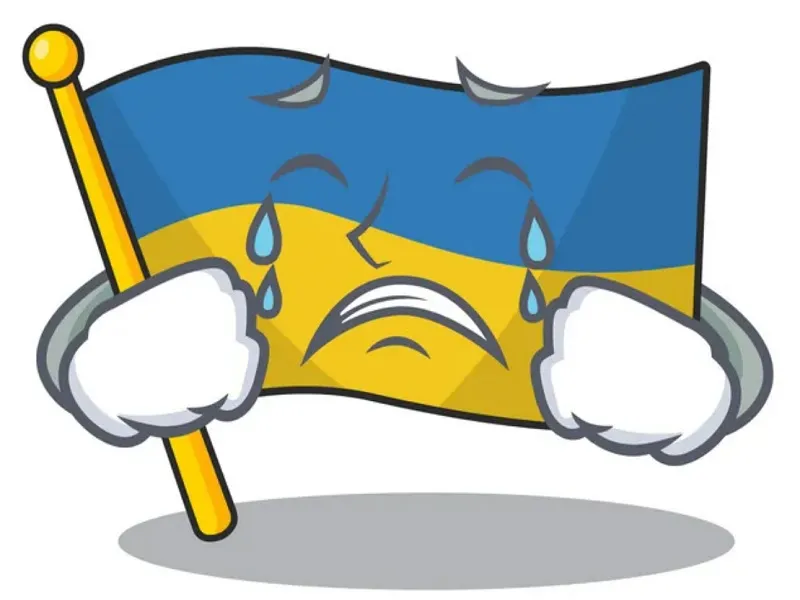Posted by @nsanzo ⋅ 08/17/2024

The revelations published this week by several Western media outlets in both Germany and the United States about what happened on September 26, 2022, on the gas pipeline linking Russia to its main European client should have put some pressure on the governments whose actions have been called into question. This week, both Berlin and kyiv have had to read publications in which their position is seriously undermined. In the case of Germany, supposedly warned about the existing risks of an attack on Nord Stream, its silence over the past two years continues in the face of the German government's inability to defend its critical infrastructure and respond to the virtual certainty that an ally has attacked its interests. The weakness of someone who has not even been able to respond to the revelations and continues to supply weapons to the country where the plot was hatched has been exposed, and is doing so by acquiring material where it knew about it and did not do enough to prevent it from being carried out. Yesterday, the United States authorized the sale of Patriot systems to Germany, which is seeking to replenish its stocks after having donated part of its possession to Ukraine.
Although slightly nuanced in the body, an article published by Frankfurter Allgemeine , one of the country’s main media outlets, opens by stating that “if true, it can be considered a permissible defensive action. Ukraine must effectively defend itself against Russia.” In fact, the reaction of the liberal establishment can be summed up in that idea. A tweet by the former liberal Spanish MEP Luis Garicano, a professor at the prestigious London School of Economics, sums it up perfectly: “Ukraine’s destruction of Nord-Stream 2 is totally justified. The country is fighting for its existence! Europe should have more guts and understand what is at stake. And Germany has to drop this ridiculous criminal procedure. It is outrageous,” he wrote, later adding that Nord Stream should never have existed. That is also the position of Ukraine and possibly of the rest of the countries of the European Union, which en masse have remained silent in the face of the reality that an ally has attacked and destroyed vital infrastructure of one of the member countries.
Scholz's weakness in being unable to react to the events has gone completely unnoticed by the press, which has also refused to focus on the position in which the revelations of The Wall Street Journal leave Volodymyr Zelensky and Valery Zaluzhny, now Ukraine's ambassador to the United Kingdom, a diplomatic post of the highest level. Sometimes, the reactions of the affected countries are as important as the information revealed by the media. This week, it has been seen that, despite being singled out even by friendly press, Volodymyr Zelensky has not felt the need to give any explanation or to qualify the information published. According to the American media, the Ukrainian president would have quickly approved a plot to destroy the gas pipeline and would have only withdrawn his support for the operation after receiving a reprimand from American intelligence. Regardless of whether the Ukrainian president followed Washington's orders and gave the order to cancel the operation or whether, on the contrary, he decided to bite the hand that feeds him - Germany, Ukraine's second largest supplier - against the wishes of his main sponsor, the reality is that Zelensky has been singled out. However, the widespread Western willingness to justify any Ukrainian occurrence and to cheer any action as heroic and justified has prevented the debate from focusing on the fact that the attack was not only on an enemy, Russia, but also on an ally, Germany.
This position, unanimous in the European media, which these days focus on reproaching Berlin for the slow abandonment of Russian energy or prefer to refer to Ukrainian self-defence, forgetting that the attack was also against Germany, contrasts with that of the first days after the attacks. The speed with which Ukraine's alleged action has been justified is proportional to that produced in September 2022 when an enormous number of arguments pointed to Moscow's hand. Only a few hours had passed since the explosions were confirmed when Bloomberg published an article condemning the acts and explaining them by looking at Russia's attempt to involve NATO in the war. Russia had not only attacked itself, but it did so to achieve something that it has made clear it wants to avoid: confronting the Alliance on the battlefield.
“We, the Allies, have committed to prepare, deter and defend against coercive use of energy and other hybrid tactics by state and non-state actors,” read the statement by Jens Stoltenberg, NATO Secretary General, in those early moments, suggesting that there could be a collective response to an enemy attack. That rhetoric has completely disappeared now that the prime suspect has turned out to be not only an ally, but a proxy that needs to continue to be supplied with weapons. “Any deliberate attack against the Alliance’s critical infrastructure will be met with a united and determined response,” the allied countries added, evoking the language used by the European Union in response to the gas leaks in the Baltic Sea but giving it a new dimension as it is a military organisation,” wrote the Brussels correspondent of La Vanguardia on 29 September , a newspaper whose deputy director stated three days later that “No one has, at the moment, irrefutable data to point to Russia as the author of the sabotage of the Nord Stream gas pipelines. However, the action fits with its current tactical interests.”
On May 6, 2023, when time was enough to understand that no evidence of the long-awaited Russian plot was going to be found , Enric Juliana, a convinced believer in the cause that Russia is always guilty, stated that “Scandinavian televisions point to the presence of Russian ships in the sabotage area before it occurred.” Now, from that same medium, those who believed in the conspiracy theory that Russia had attacked itself hide their credulity without the need for any evidence pointing to Moscow by accusing those who wanted to believe another theory, that of Hersh, which also lacked them. “But then the thing about the Madelman divers brought from Panama by the CIA was an INVENTION by the liar Seymour Hersh? They prick me and I don’t bleed,” wrote Pedro Vallín, who before the publication of the veteran journalist wrote that “the information, if it were well done, would cause an international scandal. But since it is a botch, it is podcast fodder.” Hersh, whose contacts on the Russia-Ukraine issue are notoriously weak, had only one source, hence the insults and jeers from journalists who did not need any. The Wall Street Journal article , which compiled the data that had already been leaked and which had numerous sources, did not cause any scandal. The need to continue supporting an ally makes any real political reaction to the sabotage impossible.
“The Nord-Stream 1 gas leak is nothing more than a terrorist attack planned by Russia in its aggression against the European Union,” wrote Mikhail Podolyak on September 27, 2022, when the trend of accusing Moscow made the explosions a terrorist attack. Russia wanted to “destabilize the economic situation in Europe,” for which “the only answer: tanks for Ukraine.” Kiev was asking for armored vehicles from the country that had been attacked by a plot supposedly approved by its president. “Moscow officially offered Europe to supply gas through the Nord Stream 2 pipeline , Putin’s personal project,” he added on October 5 of that year. “‘They didn’t want to agree on good terms, so there they are,’ the Russians say, de facto . Is there any doubt about who sabotaged the Baltic Sea?” he argued using a reasoning that he himself had invented. However, at that time, the Russian track was still the official version that was not questioned by either political authorities or Western media. The conspiracy theory was then that Russia had not attacked itself. But even when the Russian hand became the Ukrainian hand , the media-savvy adviser to the Office of the President stood his ground. “Although I enjoy compiling entertaining conspiracy theories about the Ukrainian government, I have to say: Ukraine has nothing to do with the disaster in the Baltic Sea and has no information about pro -Ukrainian groups . What happened to the Nord Stream pipelines? They sank , as they say in the Russian Federation itself,” he said, again inventing an argument that Russia had not made. His statements have been cited in the media as official communications from the Office of the President without questioning their credibility.
The moral of the story of the attacks on Nord Stream is the will to believe what is most convenient at any given moment, even if it comes from voices that have stood out in the past for using lies for their own benefit. Those who responded quickly by pointing the finger at their enemy and accusing them of committing an act of terrorism, an unjustified attack, ecocide or irresponsibility are now silent or are defending the act as a lesser evil, a necessary evil or even a wake-up call to an ally whom they reproach for opening up to countries beyond their inner circle. To believe, you don't need proof, journalistic sources or a minimally credible story, but faith. And when the facts turn against you, the conspiracy theory is exposed and the culprit turns out to be a friend and not an enemy; all you need to do is join the official story of downplaying the attack, insulting those who held a contrary position, ignoring reality or simply denying it.
It should come as no surprise that the Ukrainian government has opted for the latter option. “Such an act could only have been committed with vast technical and financial resources… and who had all that at the time of the explosion? Only Russia,” said Podolyak after the publication of the Wall Street Journal article , which is based on the fact that vast resources were not needed to destroy the pipeline. Without any arguments to support it, Ukraine seems to have chosen to stick to a conspiracy theory that no one believes in anymore, but which has always been, and seems to continue to be, the Ukrainian narrative. For the moment, the narrative has been enough for Ukraine to maintain Western support for a vision of the war that presents the conflict as a struggle between absolute good and evil.
https://slavyangrad.es/2024/08/17/30389/
Google Translator
******
From Cassad's telegram account:
Colonelcassad

Rybar : Massive combined raid of the Ukrainian Armed Forces on Crimea
A week after the last massive raid on the border and rear regions, Crimea was again subjected to a combined attack. The raid also used ATACMS OTRK .
According to available information, the missiles were launched from the area of the temporarily occupied Mirnograd (Dimitrov), just 10 km from the advanced Russian positions in the Pokrovsky direction.
On the approach to the Crimean Bridge , 12 targets were shot down, fragments of ammunition and cluster parts slightly damaged the road surface of the bridge, without causing damage to the supporting structures. At approximately 5 am, the bridge was closed to eliminate the consequences. Fragments of the downed drones were also found in Kerch .
At the same time, the enemy carried out a combined raid on Sevastopol . Naval aviation helicopters sank five unmanned boats in Yarylchag Bay , and one drone was shot down by a Tor air defense missile system. Another four UAVs were shot down on approach to Sevastopol and three BeKs were sunk, but significant damage on the ground was avoided. Another three naval drones retreated to their base area, and a search is underway for their possible holding area.
For the first time in a long period of time, the main target of the Ukrainian forces' raid was the Crimean Bridge.
It is worth noting that there are statements circulating on the Internet about the imminent transfer of JASSM long-range missiles (air-to-surface missiles) to the Ukrainian Armed Forces, which can be launched from F-16s already delivered to the enemy.
Given this, as well as the fact that for the first time in a very long period of time, target designation was carried out by an American MQ-9 Reaper drone from the Black Sea, further attempts by the Ukrainian Armed Forces to damage the bridge should be expected
***
Colonelcassad

Kursk direction: fighting along the entire length of the front
what is known as of 12:00 on August 17, 2024
The situation in the Kursk direction remains difficult, and the enemy is still trying to break through the defensive lines of the Russian Armed Forces in different parts of the direction.
In the Glushkovsky district, the situation has not changed significantly over the past day - yesterday's information about the Ukrainian Armed Forces entering Vishnevka has not been confirmed. Also, not far from the bridge in Glushkovo destroyed by a missile strike , Russian troops have built a pontoon crossing.
In the Korenevsky district, evidence of the enemy's presence in Russkoye Porechny , for which there was fighting yesterday, has appeared. Footage published online shows strikes on armored vehicles of the Ukrainian Armed Forces in the center of the village.
In the Sudzhansky district, Ukrainian formations continue to film videos in the same western part of the city, including near one of the Magnit stores on Pervogo Maya Street. At the same time, there is still no objective evidence of the presence of either side on the eastern side of the settlement.
In the Belovsky district, the situation has not changed significantly, and in the area of the settlements of Kamyshnoye and Giri, no clashes have been noted over the past 24 hours. After the statements of the Russian Ministry of Defense about the clearing of the settlement of Ozerki several days ago, no data on battles have been received, so the village is currently under the control of the Russian Armed Forces.
https://t.me/s/boris_rozhin
Google Translator
******
August 15, 2024 by M. K. BHADRAKUMAR
US has Ukraine’s back in Kursk incursion
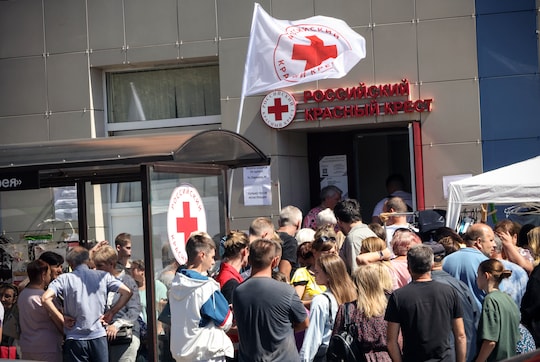
War-displaced people receive humanitarian aid at a Russian Red Cross distribution point in Kursk, August 15, 2024
As the Ukrainian incursion into Russia’s Kursk Region rolls on, war conditions have appeared in Russia for the first time since the Second World War. It is a stunning experience that an estimated 180,000 people have become internally displaced.
Ukrainian military was apparently gasping for breath, per Russian narrative. But Ukrainian mastery of combined arms warfare is on display and it is impressive — deploying everything from air defence to electronic warfare and armour and infantry. Ukraine made its point that it is capable of mounting a combined arms assault and bring some pain to Russians.
The best spin that pro-Russian analysts could think of is that the Kremlin had set a trap actually so that Ukraine’s soldiers could once again be put into the meat grinder. It Is hogwash. It’s impossible to cover up the naked truth that Russian military has been caught with its pants down.
Of course, Russians will eventually bring in enough forces to overwhelm the invading Ukrainians but it may take time as there’s no front-line. Kiev, which claims to be in control 1000 sq. km of Russian territory, says it is not interested in “taking territory” but will continue its offensive until Moscow agrees to “a just peace.” But Ukraine has set up a command centre inside Russia, hinting at prolonged occupation.
Without doubt, this is a huge political and diplomatic setback for Russia and highlights that a Russian victory in Ukraine’s battlefields is not yet a foregone conclusion. That is not surprising, since this Clausewitzean war is absoluter Krieg (‘pure war’) — “the collision of two living forces” — and, therefore, a complex of interactions, multi-layered and often unpredictable exists where goals of the warring states will be invariably influenced by the course of the war.
Clausewitz wrote in his classic work On War that the complexity of actual war is evident in what he called a “remarkable trinity” of passion, reason and chance that underlie wars.
The passion of war, he analysed, is the “primordial violence, hatred and enmity” that motivate people to fight; the reason of war is the calculation of means to achieve ends and the reckoning of costs and benefits; and, chance besets the whole enterprise.
President Vladimir Putin’s demands for ending the war, as outlined in his hard-hitting speech at the Foreign Ministry in Moscow on June 14, possibly triggered this new phase of war starting on August 6. There is a lot of speculation regarding President Zelensky’s intentions. Pentagon Spokesman Patrick Ryder insists that Ukraine had not warned Washington in advance about its plans, but a Ukrainian official told Independent newspaper that “there were discussions between partner forces, just not on the public level.”
Putin himself estimated that “the enemy, with the support from their Western backers, is executing their directives, and the West is using Ukrainians as proxies in this conflict. It seems the opponent is aiming to strengthen their negotiating position for the future.”
Putin added that “these actions clearly aim to achieve a primary military objective: to halt the advance of our forces in their effort to fully liberate the territories of the Lugansk and Donetsk people’s republics, the Novorossiya region (read the former imperial Russian territory conquered from the Cossacks and the Ottomans comprising present-day eight oblasts of southeast Ukraine: Odessa, Mykolayiv, Kherson, Dnipropetrovsk, Zaporizhya, Kharkov, Donetsk, Luhansk.)
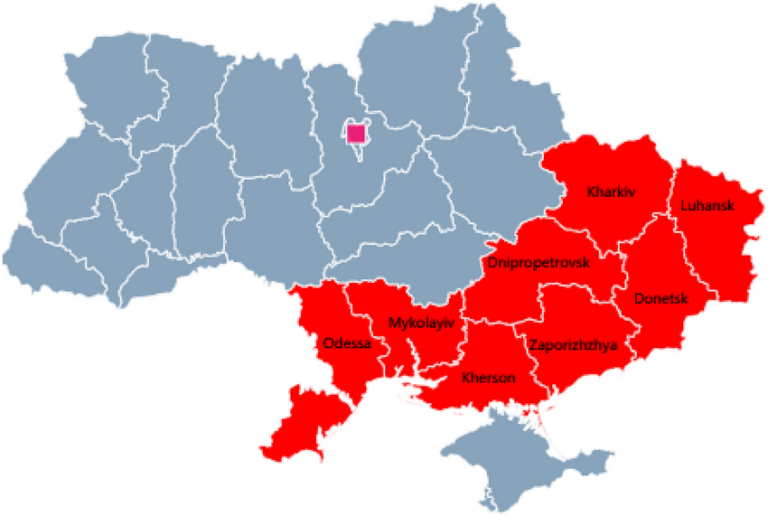
Map of Novorossiya region
Overall, Zelensky has challenged Putin’s concept of a ‘security zone’ beyond the frontline. Putin first spoke of it in March in a speech after winning re-election. The Kremlin spokesman Dmitry Peskov explained, “Against the backdrop of (Ukrainian) drone attacks and the shelling of our territory: public facilities, residential buildings, measures must be taken to secure these territories. They can only be secured by creating some kind of buffer zone so that any means that the enemy uses to strike us are out of range.”
Putin himself justified later — interestingly, during a visit to China — the launch of the Russian offensive on May 10 in Ukraine’s northeastern Kharkov Region insofar as Moscow aimed “to create a security zone, a sanitary zone. That’s what we are doing.”
But Ukraine has since hijacked the Russian concept. Deputy Prime Minister and Minister for Reintegration of the Temporarily Occupied Territories, Iryna Vereshchuk announced yesterday that the Ukrainian forces are creating a “security zone” inside Russia near the border with Ukraine so as to conduct humanitarian operations, open evacuation corridors (both in the direction of Russia and Ukraine) and allow international organisations to enter the conflict zone.
Vereshchuk disclosed that relevant preparations and consultations are currently underway. Indeed, Farhan Haq, Deputy Spokesman for the UN Secretary-General told the media on Friday, “Well, certainly it’s a question of real concern that these developments are happening. We don’t have a presence on the ground in that region… we call for all concerned to act responsibly and ensure the protection of civilians. We would need more information about what is happening to understand exactly what the nature of the conflict in the Kursk region is.”
Meanwhile, Zelensky also wrote on the social media yesterday, “Meeting on the situation in the Kursk region. We discussed key issues. Security, humanitarian aid, establishment of military commandant’s offices if necessary.” While Ukraine is internationalising its operations in the Kursk Region, on a parallel track, it is also expanding the operations to include the oblasts adjacent to Kursk.
The big question is whether Moscow took its eyes off the ball and began daydreaming in recent months with seductive thoughts — Zelensky’s ‘readiness’ for talks; prospect of a Donald Trump presidency in the US; tensions (real or imaginary) between Washington and Kiev; expectations of Ukraine’s imminent collapse and so on. Whereas, the hard reality is that Crimea’s annexation and the Battle of Donbass remain unfinished business.
Ukraine’s long-range drones reportedly hit four Russian airbases overnight on Aug. 14 in the largest attack on airfields in the war. As the summer months give way to autumn by October, the much vaunted Russian offensive to wrap up the war is nowhere in sight.
Now that the Kremlin’s ‘red line’ on episodic Ukrainian drone attacks on Russian territory has been massively breached in Kursk with ‘boots on the ground’, what next? Indeed, Ukraine could be underestimating Russia’s numerical advantage in manpower and superior weaponry and the challenge of having to to redeploy units to mount and sustain the cross-border incursion as well as overstretched logistics is indeed daunting.
On the other hand, the lame duck US president Joe Biden is an ‘X’ factor — an embittered man consumed by his own visceral hatred of Putin. He still has 5 months of absolute power, more than the time President Barack Obama needed to create a fait accompli in US-Russia relations for years to come.
Ukraine is using weapons provided by Western governments, including the UK, US, and Germany, as part of its ongoing incursion into Russia. German and US armoured fighting vehicles, as well as UK tanks have been involved in Ukraine’s ground operation. This signals that the Kremlin’s verbal threats carry less and less weight in Western capitals.
Ukraine may be punching above its weight to defend itself from Russia’s devastating glide bombs. But the fact remains that every time Putin mentions tactical nukes, it is still a message of deterrence. Ukraine’s audacious move to carry the war into Russian territory may well precipitate that nuclear moment.
If crunch time comes, Biden may meet Russia’s use of tactical nukes with a conventional response (i.e. non-nuclear), which Russia risks losing. That may well be Biden’s game plan.
https://www.indianpunchline.com/us-has- ... incursion/
******
Mark Chapman...
... did a wonderful write up on the issue I am going to discuss tomorrow, as written by NYT .
Zelensky’s madcap Kursk adventure marks Ukraine’s last ‘something ere the end’ – its last frantic hand-waving for attention before its head slips under the waves. And in that effort, it is wildly successful: the western media is giddy, euphoric, it cannot stop talking about Zelensky’s bold stroke, Putin’s abject embarrassment and humiliation. But these are just words; words from past masters of ‘framing the narrative’ so the story you get out of happenings is the one they want to tell. The west is the self-declared sworn enemy of Russia: of course anything which discomfits its leader and its government is an occasion for celebration and high-fiving. It hand-picked Ukraine to throw it against Russia, so it is unsurprising that any exhibition of aggression on its part is received with cheers and approval.
Excellent piece. Moreover, Larry doesn't mince words and goes for jugular:
The United States is Preparing to Jettison Volodomyr Zelensky
The tawdry show around the terrorist act against NS-2 pipeline is designed for a kindergarten for retarded children. That is the requirement for believing this utter BS of 404 executing this "operation". What can I say, or, rather what Marx said: History repeats itself, first as tragedy, second as farce (c). Something tells me we are in the third, if not the fourth iteration of a farce stage...
P.S. I am "stealing" Mark's superb definition of NYT piece: a casserole of mendacity! (c)
http://smoothiex12.blogspot.com/2024/08 ... apman.html
*****
So what really happened in Kursk?
Pepe Escobar
August 16, 2024
An extremely serious debate is already raging among selected circles of power/intelligence in Moscow.
An extremely serious debate is already raging among selected circles of power/intelligence in Moscow – and the heart of the matter could not be more incandescent.
To cut to the chase: what really happened in Kursk? Was the Russian Ministry of Defense caught napping? Or did they see it coming and profited to set up a deadly trap for Kiev?
Well-informed players willing to share a few nuggets on condition of anonymity all stress the extreme sensitivity of it all. An intel pro though has offered what may be interpreted as a precious clue: “It is rather surprising to see such a concentration of force was unnoticed by satellite and drone surveillance at Kursk, but I would not exaggerate its importance.”
Another intel pro prefers to stress that “the foreign intel section is weak as it was very badly run.” This is a direct reference to the state of affairs after former security overseer Nikolai “Yoda” Patrushev, during Putin’s post-inauguration reshuffle, was transferred from his post as secretary of the Security Council to serve as a special presidential aide.
The sources, cautiously, seem to converge on a very serious possibility: “There seems to have been a breakdown in intel; they do not seem to have noticed the accumulation of troops at the Kursk border”.
Another analyst though has offered a way more specific scenario, according to which a hawkish military faction, spread across the Ministry of Defense and the intel apparatus – and antagonistic to the new Minister of Defense Belousov, an economist – let the Ukrainian invasion proceed with two objectives in mind: set a trap for Kiev’s top enemy commanders and troops, who were diverted from the – collapsing – Donbass front; and put extra pressure on Putin to finally go for the head of the snake and finish off the war.
This hawkish faction, incidentally, regards Chief of the General Staff Gerasimov as “totally incompetent”, in the words of one intel pro. There’s no smoking gun, but Gerasimov allegedly ignored several warnings about a Ukrainian buildup near the Kursk border.
A retired intel pro is even more controversial. He complains that “traitors of Russia” actually “stripped three regions from troops to surrender them to the Ukrainians.” Now, these “traitors of Russia” will be able “to ‘exchange’ the city of Suzha for leaving the fake country of Ukraine and promote it as an inevitable solution.”
Incidentally, only this Thursday Belousov started chairing a series of meetings to improve security in the “three regions” – Kursk, Belgorod and Bryansk.
Hawks in the siloviki apparatus don’t make it a secret that Gerasimov should be fired – and replaced by fabled General Sergey “Armageddon” Surovikin. They also enthusiastically support the FSB’s Alexander Bortnikov – who de facto solved the extremely murky Prigozhin affair – as the man now really supervising The Big Picture in Kursk.
And the next one is Belgorod
Well, it’s complicated.
President Putin’s reaction to the Kursk invasion was visible in his body language. He was furious: for the flagrant military/intel failure; for the obvious loss of face; and for the fact that this buries any possibility of rational dialogue about ending the war.
Yet he managed to turn the upset around in no time, by designating Kursk as a counter-terrorist operation (CTO); supervised by the FSB’s Bortnikov; and with an inbuilt “take no prisoners” rationale. Every Ukrainian in Kursk not willing to surrender is a potential target – set for elimination. Now or later, no matter how long it takes.
Bortnikov is the hands-on specialist. Then there’s the Overseer of the whole military/civilian response: Alexey Dyumin, the new secretary of the State Council, who among other previous posts was the deputy head of the special operations division of GRU (military intel). Dyumin does not respond directly to the Ministry of Defense nor the FSB: he is reporting directly to the President.
Translation: Gerasimov now seems to be at best a figurehead in the whole Kursk drama. The men in charge are Bortnikov and Dyumin.
The Kursk P.R. gambit is set to massively fail. Essentially, the Ukrainian forces are moving away from their lines of communication and supplies into Russian territory. A parallel can be made with what happened to Field Marshall von Paulus at Stalingrad when the German Army became overextended.
The Russians are already in the process of cutting off the Ukrainians in Kursk – breaking off their lines of supply. What’s left of the crack soldiers launched into Kursk would have to turn back, facing Russians both at their front and back. Disaster looms.
Irrepressible commander of the Akhmat special forces, Major General Apti Alaudinov, confirmed on Rossiya-1 TV that at least 12,000 Ukrainian Armed Forces (UAF) entered Kursk, including a lot of foreigners (Brits, French, Poles). That will turn out to be a “take no prisoners” on a massive scale.
Anyone with an IQ above room temperature knows Kursk is a NATO operation – conceived with a high degree of probability by an Anglo-American combo supervising the Ukronazi cannon fodder.
Anything Kiev does depends on American ISR (intelligence, surveillance, reconnaissance) and NATO weapons systems of course operated by NATO personnel.
Mikhail Podolyak, adviser to the sweaty green T-shirt actor in Kiev, admitted that Kiev “discussed” the attack “with Western partners”. The “Western partners” – Washington, London, Berlin – in full cowardly regalia, deny it.
Bortnikov won’t be fooled. He succinctly stated, on the record, that this was a Kiev terrorist attack supported by the West.
We are now entering the stage of hardcore positioning combat bound to destroy villages and towns. It will be ugly. Russian military analysts remark that if a buffer zone had been preserved way back in March 2022, mid-range artillery activity would have been restricted to Ukrainian territory. Yet another controversial decision by the Russian General Staff.
Russia will eventually solve the Kursk drama – mopping up small Ukrainian groups in a methodically lethal way. Yet very sensitive questions about how it happened – and who let it happen – simply won’t vanish. Heads will have to – figuratively – roll. Because this is just the beginning. The next incursion will be in Belgorod. Get ready for more blood on the tracks.
https://strategic-culture.su/news/2024/ ... -in-kursk/
******
Resistance to Military Conscription Deepens in Ukraine
Posted by Internationalist 360° on August 14, 2024
Dmitri Kovalevich

The beginning of August in Ukraine was marked by increased confrontations over the government’s ever-tightening, military conscription policies.
Every day, across the country, police are reporting arson attacks against Ukrainian military vehicles. Military personnel in the rear are increasingly wary of leaving their vehicles on the streets overnight, instead parking them near police stations. But even this does not always help.
Those detained by police for these attacks have mostly been teenagers between 12 and 18 years of age, according to governor Oleh Sinegubov of Kharkiv Oblast (province), writing in early August.
Shoot the youth who are attacking military vehicles?
As a result of such attacks increasing in number, Oleh Romanov, commander of an anti-tank unit of the Armed Forces of Ukraine (AFU), has declared he has given permission to shoot on sight those who set fire to military vehicles in the rear. “In coordination with higher command, using military immunity, I give verbal permission to my fighters to shoot those things on the spot. Such traitors must be eliminated on the spot, considering wartime conditions.” His unit is the 3rd Separate Assault Brigade, formerly a unit of the neo-Nazi ‘Azov Battalion’ now fully integrated as an autonomous unit of the regular army.
So the commander of what is today a regular Ukraine military unit is openly claiming that he has issued orders to shoot without trial civilian youths should they be caught in the act of damaging military equipment… or be only accused of doing so.
Ukrainian authorities are not denying that many of the attacks against military equipment are carried out by teenagers, nor do they deny that orders to shoot perpetrators are being issued and are bypassing the formal, decision-making of the country’s government and armed forces general staff. Such orders are also bypassing the Ukraine constitution, which since the year 2000 (at the insistence of the European Union at the time) has prohibited the death penalty.
All this highlights once again that the ultra-nationalist and neo-Nazi formations embedded within the AFU are accustomed to acting without regard for the law and at their own discretion, arguing that without their actions, the military front and the entire Ukrainian state machine could well crumble.
At the same time, the Ukrainian telegram channel Rubicon believes that the order issued by the commander of the 3rd Separate Assault Brigade to “shoot on the spot” arsonists or others engaged in damaging military equipment could only be authorized from above (for example, from the presidential office), aiming to intimidate not only potential arsonists but anyone contemplating civil disobedience against the Ukraine government’s war policies.
Fear of military conscription only deepening
Ukrainian authorities traditionally blame Russia for any antiwar protests that may take place in Ukraine, but the fact that the vehicles of military enlistment officers were the first to be burned many months ago suggests more of a spontaneous protest against conscription than anything being covertly organized.
The Ukrainian Telegram channel Kartel comments on the recent trends, writing, “Arson attacks against the vehicles of employees of [military enlistment officers in Ukraine], that is, the vehicles of those who are hunting down men of the age of military service, are now being recorded all over the country. And the public does not consider the people behind these incidents as playing along with Moscow; the arsons have actually become a symbol of protest against forced conscription, corruption, and all the other injustices committed by authorities.”
Protests against conscription have manifested themselves in the form of arson attacks on military vehicles, physical assaults on individual Ukrainian soldiers in the rear, and spontaneous rallies against conscription officers at work. In early August, the town of Kovel near the Polish border in western Ukraine exploded. Crowds turned out for a rally demanding the release of three forcibly conscripted locals. The crowd stormed the military enlistment office and the protest continued through the night until residents secured the release of the three detainees.
The next day, authorities accused the protesters of “working for Russia” and launched criminal prosecutions. Ukrainian MP Yevhen Shevchenko wrote in Telegram on August 3 that the events in Kovel showed that “the party of peace is growing in the form of people voting against the war with their feet”. He continued, “How are the blind philosophers in Ukraine coping with this? Will they continue to brag about the fact there is no such thing in Ukraine as a formal party of peace?”
The Telegram channel Rubicon notes that riots against military enlistment officers are not a rare or unique phenomenon in Ukraine. There have been mass rallies protesting the continued war against Russia in Zaporozhye city and region; in Carpathia region (western Ukraine), where road blockades of burning tires have been erected by Roma people; and in Odessa city several months ago, where a mass brawl took place between ambulance crews and military enlistment officers when one of the crew was seized and threatened with forced conscription. But what happened in Kovel differs significantly from everything that has happened before. There, it was a mass confrontation and brawl against military and government authorities that unfolded in which men who would ‘normally’ be quietly hiding at home to avoid being forcibly conscripted took part.
The conscription crisis is a sign of a failing war
According to the writers at ‘Rubicon’, the government in Kiev cannot change its current conscription regime. Volunteering for the army has run out, all-but ending as early as 2022. Meanwhile, financial motivations to gain recruits, as are widely available in Russia, are very expensive and unrealistic for a depopulated Ukraine with a moribund economy, notwithstanding the funds that the U.S. government has allocated to boost recruitment.
Nevertheless, the large Western governments continue to demand intensified conscription by the Ukraine government, which means more capture and kidnapping by military conscription officers without the slightest heed or attention to human rights. Ukrainian MP Fyodor Venislavskyy wrote on Telegram on August 6 that Ukraine’s Western ‘partners’ are also raising periodically the proposal that Ukraine lower its official age of military service (conscription). He writes, “They believe that the age range of 18-25 is the most optimal and effective age of military service for citizens when physical and psychological qualities needed to be able to fight are at their prime.”
Currently, the age of military registration in Ukraine is 18, while the youngest age for military service is 26.
Ukrainian politicians and analysts typically offer ‘regrets’ to the Ukrainian population for the demands by Western governments for more military recruitment, at the same time saying that Ukraine’s Western allies have the right to pronounce on such a domestic matter because they are the ones providing the funds and equipment to wage war against Russia.
More war dead in order to improve negotiating position
Western analysts and politicians are unrelentingly pushing Ukraine further into battle, using the argument that Kiev needs more combat in order to improve its future negotiating position. This argument was used in 2022 and again in 2023. Today, it is the equivalent of flogging an exhausted and worn-out horse. It also shows a complete misunderstanding of the aims of the political and military leadership in Russia.
Western capitalists measure everything against themselves. They imagine future negotiations between Russia and Ukraine as resembling one company up against its business competitor, each side seeking to strengthen its respective position. But for the Russian leadership, nothing changes should the AFU occupy a Russian town or two or should it withdraw from there to the relative safety of the border of Poland.
The list of demands and conditions by Russia for an end to the war (including an end to the dream by NATO and Kiev for a rump, NATO-member Ukraine) will remain unchanged no matter what happens. This rigidity and unchanging of military goals is the key to Russian stability and to the slow and steady military advances it is making.
This is being continually reinforced by the deep wellspring of historic memory of the Russian people. They recall only too well the harsh, social and economic disaster of the post-Soviet years of the 1990s, when promises by the West to Russia of eventual integration into the Western world’s economy had the ear of the Russian governments of the day while many Russian people themselves held such hopes. The 25 years since then, and in particular the past ten years, have shown to the Russian people that their country does not need economic ties to the Western economy to survive and even prosper. Indeed, Russia is doing quite well today having lost much of its trade and investment ties to the West.
Flight of youth from Ukraine, and mass desertions from the armed forces
Expecting a lowering of the conscription age, young people in Ukraine are fleeing the country daily by the dozens and hundreds. Some are dying while making perilous crossings across the rough river border in western Ukraine. Oleksiy Arestovich, a former adviser to the head of the Office of the President of Ukraine, wrote in early August in the online Eurasia Daily that ‘official’ estimates of the flow of men of conscription age trying to escape from Ukraine are being underestimated by 30 times.
“If I tell you how many people are trying to escape from Ukraine every day, you would gasp. The State Border Service admits 100 or so people trying to leave each day, while a Rada deputy has recently admitted 200. But the real figure is approximately 30 times higher… Imagine, each day, the equivalent numbers of five military brigades are seeking to escape from Ukraine. Many try to cross the Tisa (Tisza) River [which borders Romania, Hungary, and Slovakia in places] each day by whatever means possible.”
According to recent estimates by the National Bank of Ukraine, a further 700,000 people will leave Ukraine in 2024-2025. The Bank expects a gradual return of Ukrainians to their homeland only from 2026 and only if, by then, the security situation improves, new housing is built, and the overall economic situation improves.
Mass desertion is no less of a problem than is conscription for the Ukrainian Armed Forces. Germany’s Deutsche Welle state broadcaster reported on August 2 that desertion from the Ukrainian army in 2024 has reached an alarming scale. Every 14th serviceman has quit his unit arbitrarily, the publication reports. Overall, since the beginning of 2022, the prosecutor’s office has counted 63,200 criminal proceedings for desertion.
Poliltnavigator news website reports on August 5 that according to retired SBU (secret police) colonel Oleg Starikov, more and more soldiers are deserting. “I have a comrade who is now deputy commander of a battalion of paratroopers. He is not a professional soldier; he was conscripted and rose to the rank of lieutenant. I asked him about the personnel situation he faces, and he replied that the soldiers serving under him, quite simply, ‘do not want to serve, they do not wish to fight’.”
” ‘So what are they doing out there?’, I asked. ‘They dig trenches and build fortifications’, he replied. ‘But that is logistical support,’ I replied, ‘who is doing the actual fighting?’, I asked again. ‘They do not want to fight’, came the reply.”
A mercenary role for the future Ukraine?
Although the Armed Forces of Ukraine are constantly short of men and Ukrainian troops have been slowly retreating along the front lines all year, Ukrainian authorities and security services are finding in countries other than Ukraine new recruits, weapons, and other means to fight for the interests of the West. Ukraine has no special interests in these other countries, but the U.S., UK, Germany, and France do.
In August, two African countries, Mali and Niger, severed diplomatic relations with Ukraine. Both accuse Kiev of supporting radical terrorist groups [linked to Al Qaeda] that have been fighting the governments of these two countries since they began to distance themselves economically and militarily from the West last year.
The Mali government reacted to statements by Ukraine’s military intelligence agency (GUR) which praised an alleged involvement by Kiev in an attack against Mali government forces last month near the border with Algeria. “The actions taken by the Ukrainian authorities violate the sovereignty of Mali, go beyond the scope of foreign interference, which is already condemnable in itself. They constitute clear aggression against Mali and clear support for international terrorism,” the Malian government charged.
In Senegal, Ukraine’s interference in Mali’s affairs also caused outrage. The Ukrainian ambassador was summoned to that country’s foreign ministry to hear its condemnation.
On July 31, the Kyiv Post reported that Ukrainian forces made a strike on Russian and Syrian forces at the Kuweires Air Force base in Syria. As well, in the spring of 2024, there were published reports of Ukraine’s involvement in the fighting in Sudan. As reported by the Wall St. Journal in March, Ukraine has participated in combat in Sudan because “the West has been reluctant to get directly involved”.
Thus does the Kiev regime try to sell itself to the West as resembling an effective, private military company that will fight against anti-imperialist movements around the world whenever and wherever the Western governments do not dare to introduce their own troops. Rubicon Telegram channel reports on August 6, “We can only state this curious precedent in international relations when an entire state begins to position itself as a large, highly specialized, private military company (PMC).
In the early days of August, the Ukrainian Defense Ministry announced its support for a draft law ‘On International Defense Companies’ which, in essence, would legalize the operations of PMCs (mercenary companies) on the territory of Ukraine. One author of the bill, MP Serhiy Grivko, proposes to send Ukrainian soldiers to serve in other global hot spots, saying that many will not wish to surrender their weapons and return to peaceful life.
“Following the demobilization of a large number of personnel of the Armed Forces of Ukraine, there is a risk of a wide range of negative consequences,” the bill says. The ‘negative consequences’ for Ukraine in this case is the presence of a large number of foreigners with weapons in hand on Ukrainian soil, the reactions should payments to PMCs (which the Ukrainian budget cannot afford) ever be reduced, and the beginning of anticipated “destructive political processes in the country”.
Simply put, Ukrainians are to become expendable human material spending their entire lives fighting wars and working to pay off international loans, all for the sake of preserving the hegemony of Western imperialism.
https://libya360.wordpress.com/2024/08/ ... n-ukraine/




